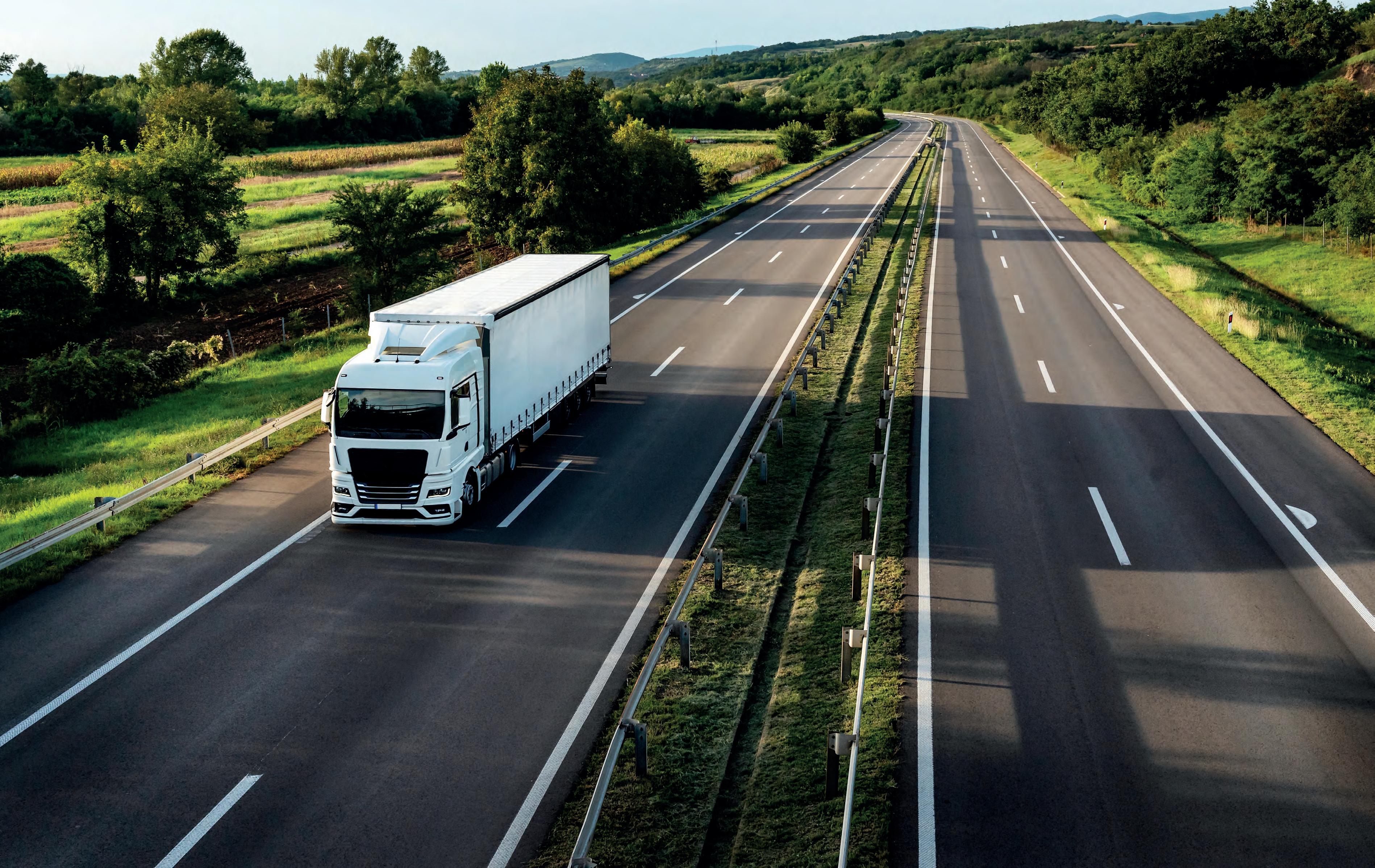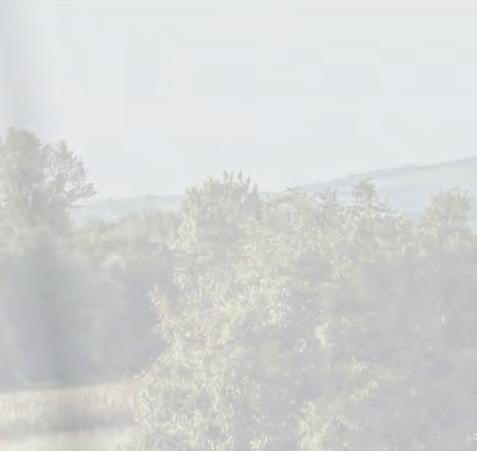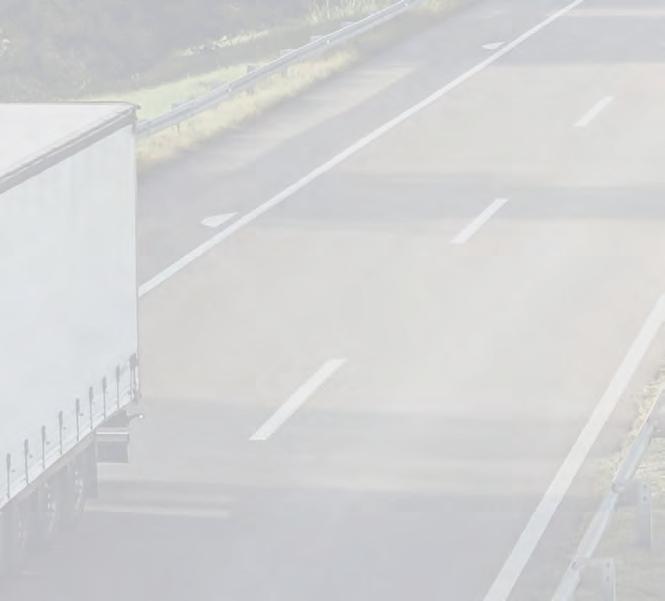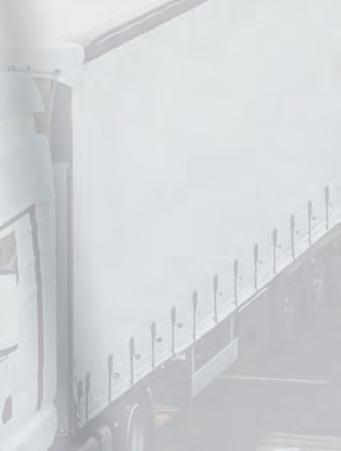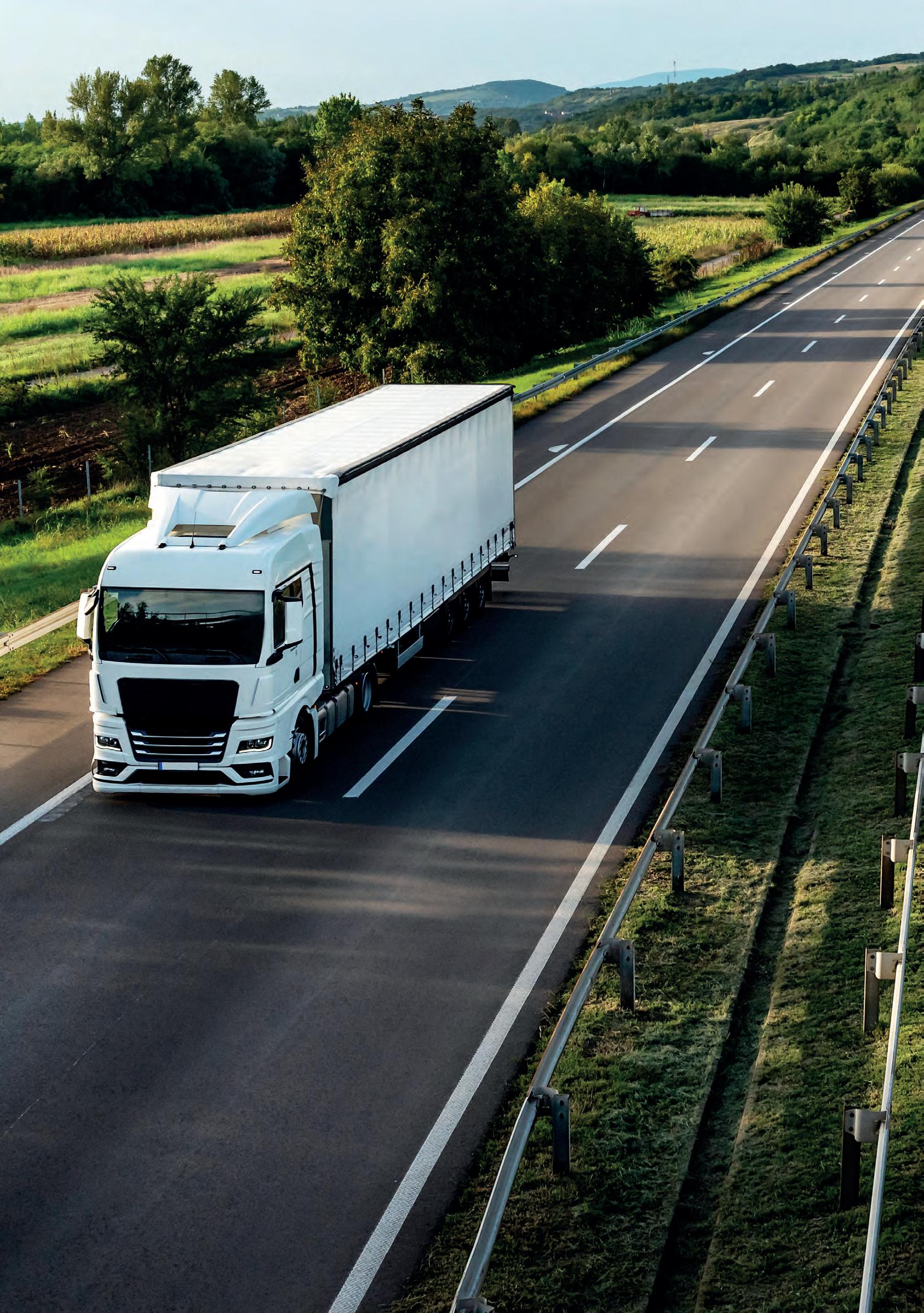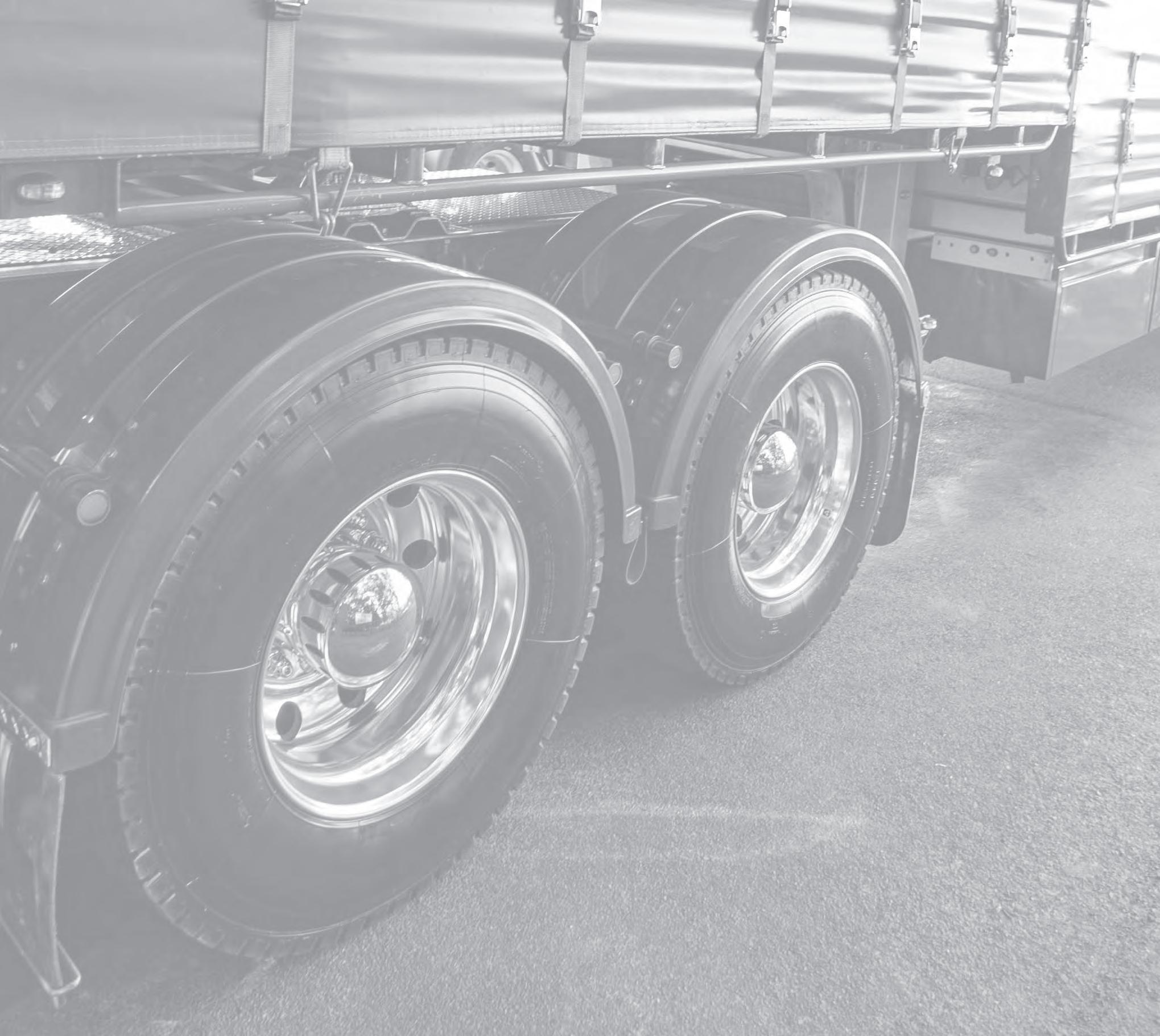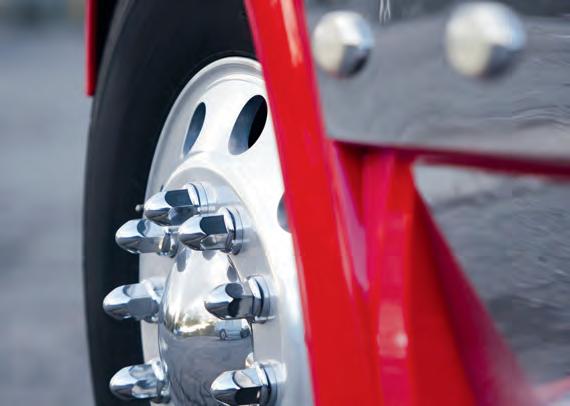







































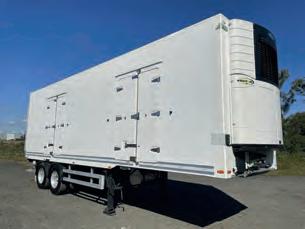




















































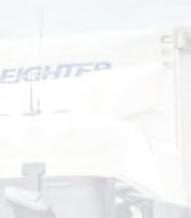
8 ROAD UPDATES
Inside the latest funding and safety upgrades for Australian roads
16 JACK OF ALL TRADES
Warren Aitken took Scania’s new 500hp Super P for a drive around some of western Melbourne’s hillier roads to put the Swedish giant’s latest beast to the test


22 THE LICENSING DEBATE
The industry has its say on South Australia’s latest heavy vehicle licensing requirement changes
26 LOOKING AHEAD
With plenty on the cards for this year, members of the Australian truck industry give their thoughts on what they expect from another productive year


32 OLD SCHOOL WAY
Aaron and Krystal Vesey have found a bittersweet tribute to Aaron’s late father that takes him back to his childhood

46 DOUBLING UP



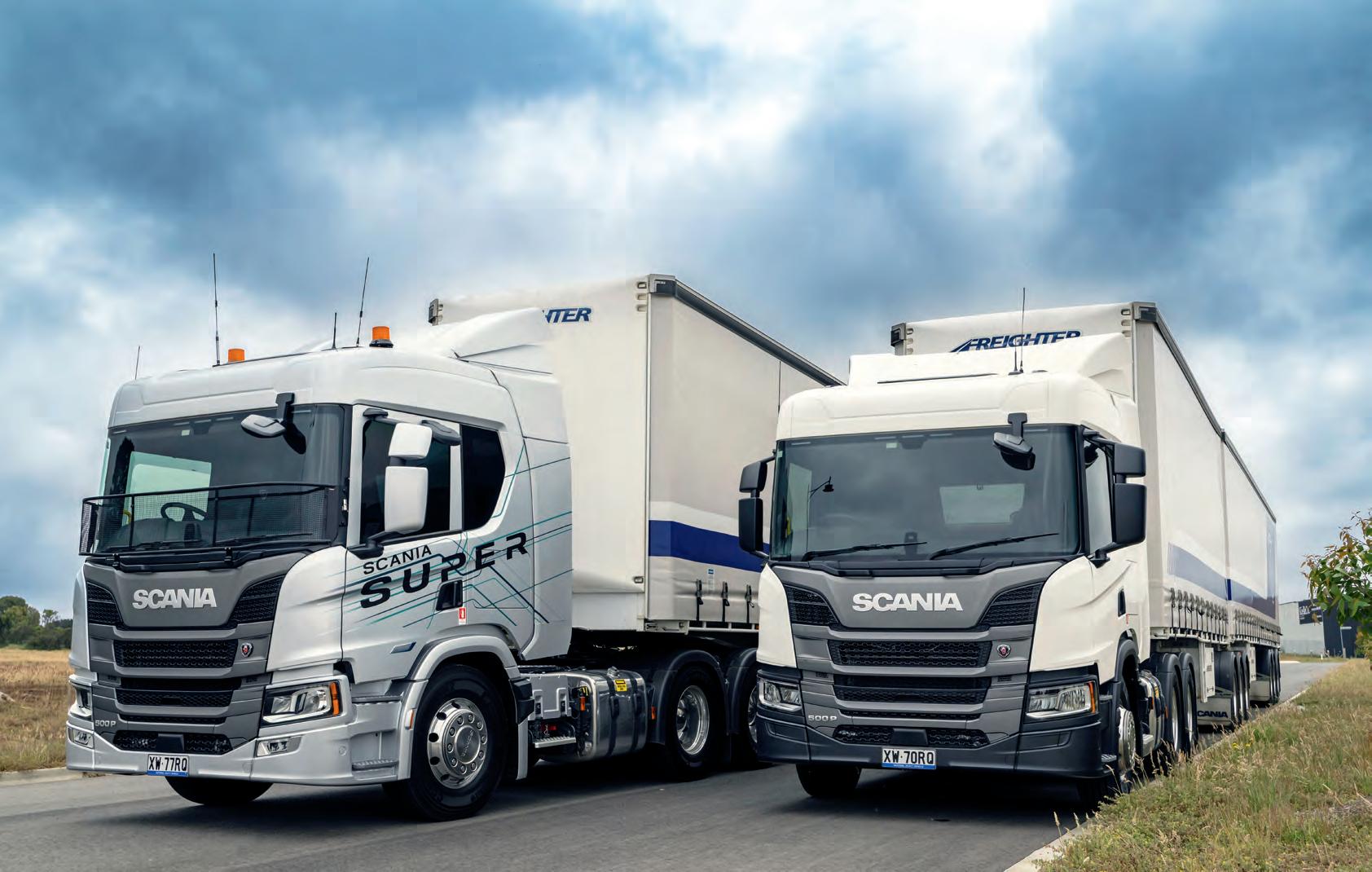
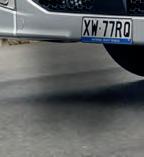
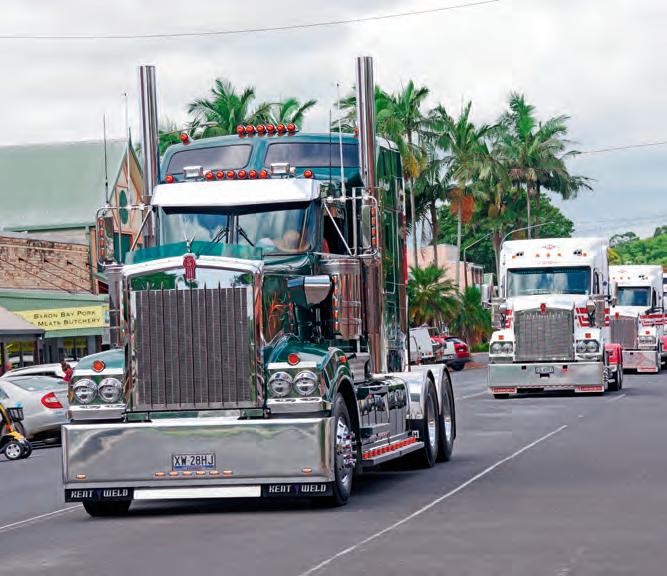




Warren Aitken caught up with the back-to-back winner of the King Rig award at the Dane Ballinger Memorial Truck Show
50 MULLUM MAGIC
Greg Bush headed to the annual Mullumbimby Truck Show to see quality and camaraderie on full display

54 BRAKING NEW GROUND


With decades of experience under his belt, Shane Pendergast shares the importance of regular brake maintenance for heavy vehicles
56 FROM DRIVER TO FIGHTER
By day, Ben is a truck driver, but at night, he becomes local wrestler Happy Kai

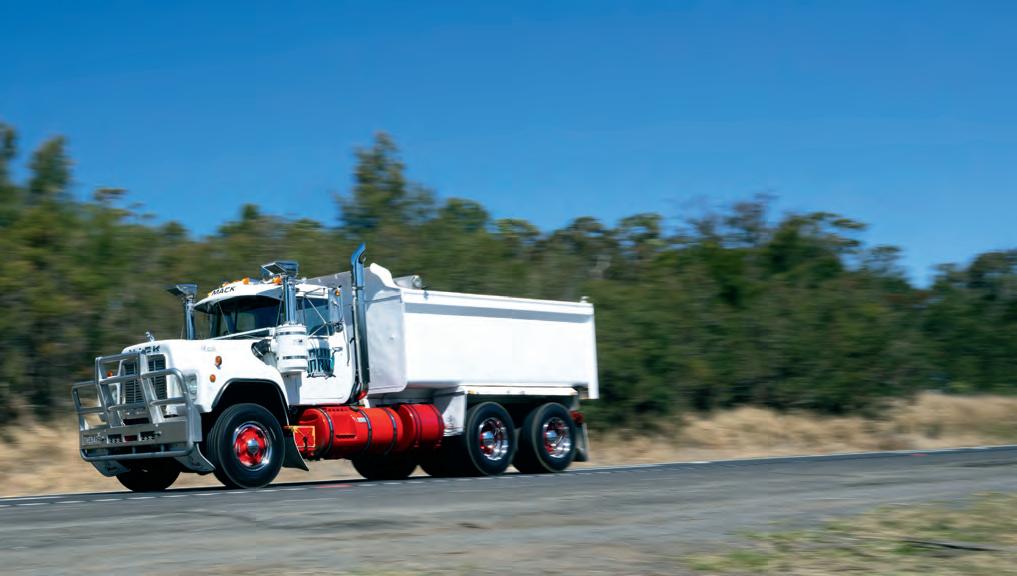

64 TRUCK SALES
Check out the leaders from November’s truck sales data







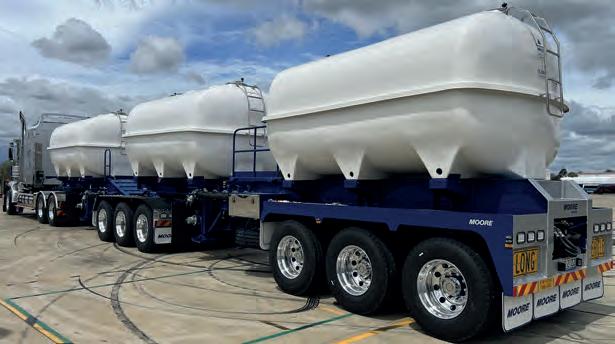














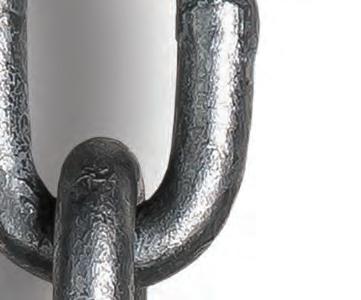
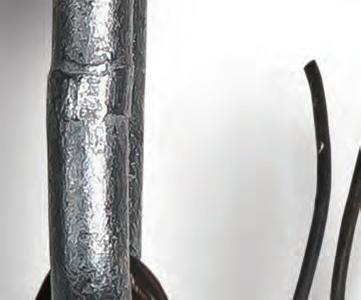
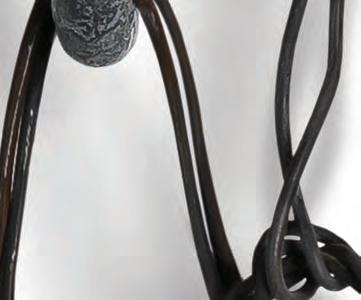
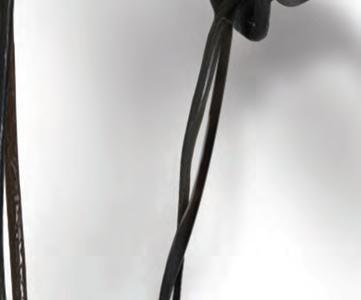
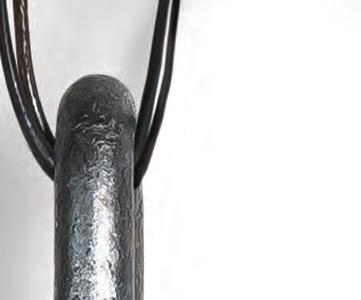
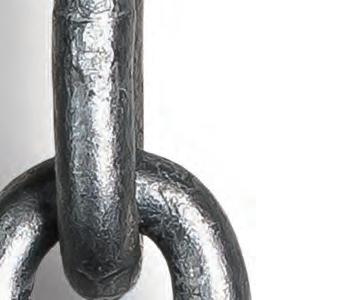
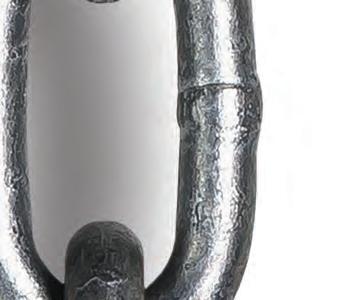
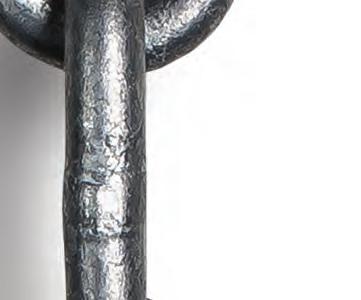













































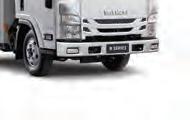
EDITORIAL
Editor Sean Mortell
E-mail Sean.Mortell@primecreative.com.au
Journalist Tiarna Condren
E-mail Tiarna.Condren@primecreative.com.au
Contributors Warren Aitken, Frank Black, Sarah Marinovic, Rod Hannifey, Michael Kaine, Glyn Castanelli, Greg Bush, Glenn Sterle
Cartoonist John Allison
PRODUCTION
Art Director Bea Barthelson
Print IVE Print
ADVERTISING
Business Development Manager
Hollie Tinker Ph 0466 466 945
E-mail Hollie.Tinker@primecreative.com.au
SUBSCRIPTIONS
www.ownerdriver.com.au/subscribe
Phone +61 (0)3 9690 8766
Mon-Fri 8am-4.30pm (EST)
Email subscriptions@primecreative.com.au
Mail 379 Docklands Drive, Docklands, VIC 3008 Australia
EXECUTIVE GROUP
CEO John Murphy
COO Christine Clancy
Operations Manager Regina Fellner
Trader Group Sales Director
Asanka Gurusinha
Managing Editor
Geoff Crockett
Owner Driver is published by Prime Creative Media
379 Docklands Drive, Docklands Melbourne VIC 3008
Telephone: (+61) 03 9690 8766
www.primecreative.com.au
ISSN 1321-6279
OwnerDriver magazine is owned by Prime
Creative Media. All material in OwnerDriver is copyright and no part may be reproduced or copied in any form or by any means (graphic, electronic or mechanical including information and retrieval systems) without written permission of the publisher. The Editor welcomes contributions but reserves the right to accept or reject any material. While every effort has been made to ensure the accuracy of information Prime Creative Media will not accept responsibility for errors or omissions or for any consequences arising from reliance on information published.
Opinions expressed in OwnerDriver are not necessarily the opinions of, or endorsed by the publisher unless otherwise stated.



From new heavy vehicle models to the latest industry issues, OwnerDriver starts 2025 by combining the big news stories with all the information truckies need to know for a landmark year
One thing about the Australian trucking industry is that it never stands still for very long. With news always flowing through and calls for change in an abundance, the sector begins a new year with a lengthy list of to-do items that would prove too much for even Santa Claus after his December escapades.
Following the last of the numerous events for 2024, the conversation has turned to this year and what the industry can do to improve itself in the upcoming 12 months. What churns the machines of improvement even faster is the rapid developments seen in 2024, with the Closing the Loopholes legislation being a milestone moment in recent memory for the trucking industry. Now, having received a welcome taste of reform, the industry is pulling together for a massive effort this year to make working in the road freight sector a better experience for the future.
All of these wishes were summarised in our 2025 industry preview feature on page 26, with a variety of bodies and associations catching up with OwnerDriver before Christmas to explain their wish lists for the year ahead. Including the National Heavy Vehicle Regulator (NHVR), National Road Transport Association (NatRoad), the Western Roads Federation (WRF) and the Queensland Trucking Association (QTA), topics to be focused on in 2025 were wide and varied, with the Heavy Vehicle National Law (HVNL) reform and heavy vehicle licensing remaining constants for all involved.
The latter dominated discussions in the industry heading into the holiday period late last year, spurred on by the South Australian government’s announcement of major changes to its heavy vehicle licensing scheme. With time based requirements now becoming stricter for those wishing to obtain a MC licence, and the removal of recognition for international driving experience (except for in New Zealand), the changes
have certainly led to widespread reactions within the Australian industry. OwnerDriver had the chance to dive into this growing issue from page 22 to uncover what this means for owner-drivers around the country and what the industry thinks of these measures moving forward.
Outside of this, new vehicle technology is as promising as ever to start a year, with a range of OEMs unveiling new information on their latest releases that will come out in 2025. With many brands gearing up for the Brisbane Truck Show, OwnerDriver has worked hard to extract as much detail from these companies as possible on what their new releases have in store for ownerdrivers around Australia. Starting with the likes of Volvo and continuing to the terrific test drive conducted by our very own Warren Aitken of the Scania 500hp Super P model on page 16, this edition goes in-depth into what these vehicles have that is new and different for drivers. In the event space, the likes of Warren and Greg Bush were on hand for a variety of great days in late 2024. Warren made the trip to Bathurst for the Dane Ballinger Memorial Truck Show and got more than he bargained for, while Bushy was at Mullumbimby for the town’s growing show.
Combining this coverage is our usual array of columnists who put pen to paper (so to speak) for the first time in 2025. Joining them was our latest addition to the ranks in the popular Senator Glenn Sterle, who will be discussing his most pressing transport issues in OwnerDriver throughout 2025 as he prepares for a federal election this year. His first column provides an overview of what the industry can expect from him this year and what he is focusing on for truckies in the leadup to the election.
As always, safe travels, and we hope you enjoy this bumper edition of OwnerDriver to start 2025. Happy reading!
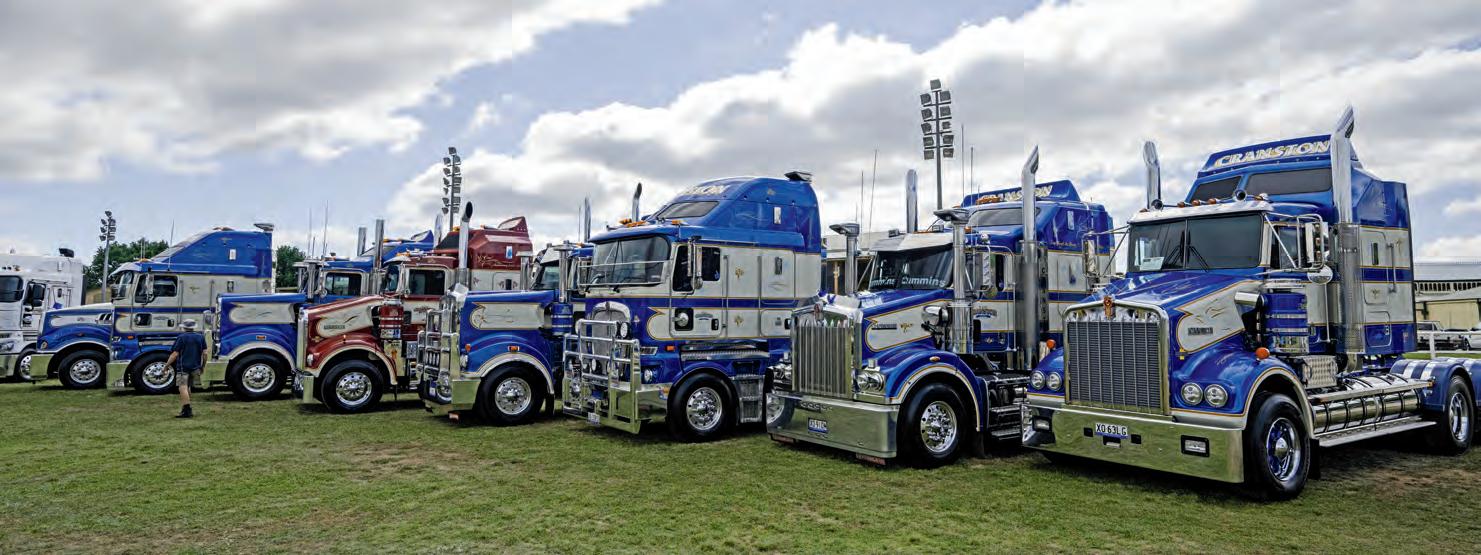
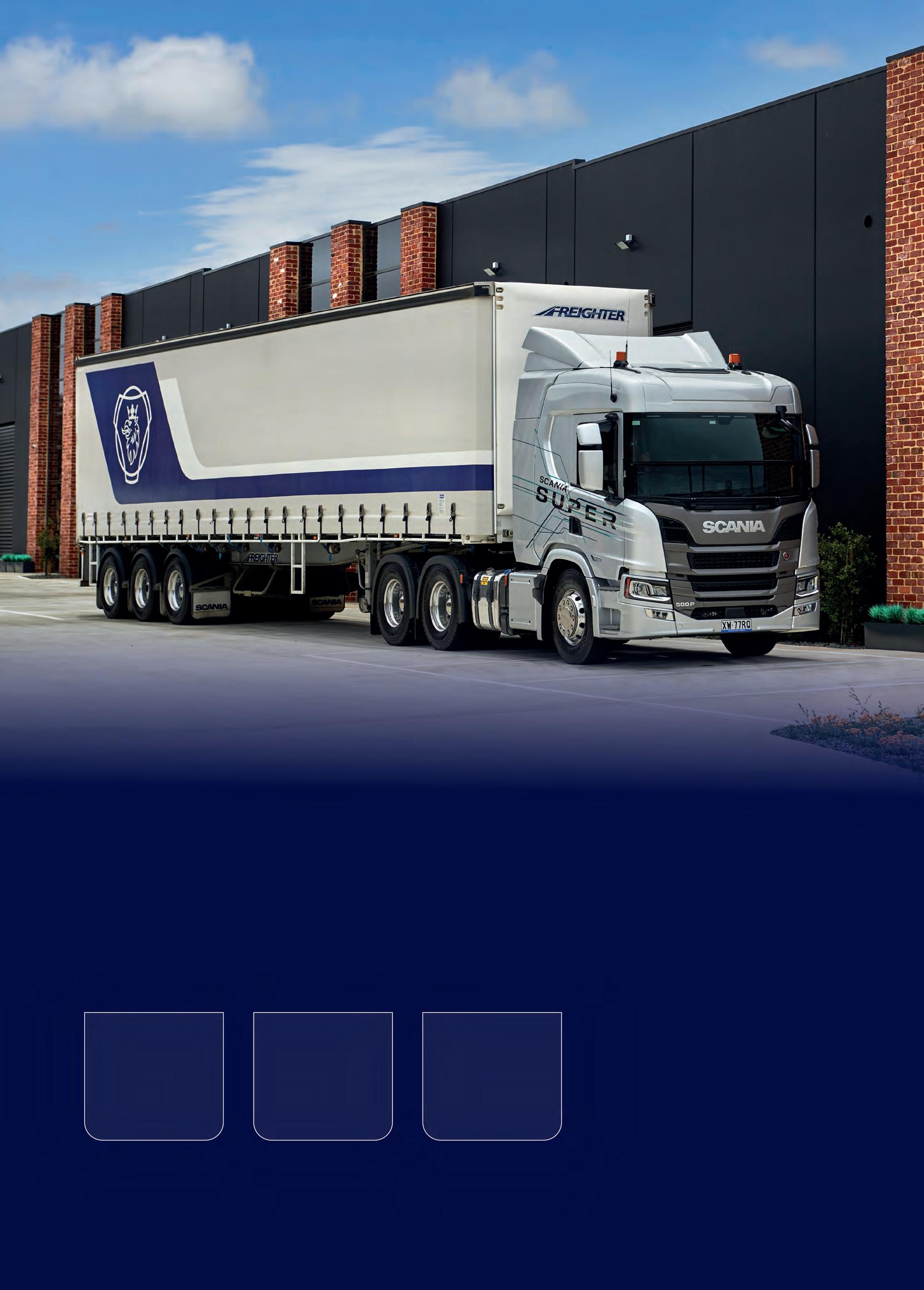



New road technology is in the midst of trials while a smart freeway has been officially switched on in Western
The first road update for 2025 is less about ongoing road projects and more so focused on technology that has been unveiled to start the year. While a range of new heavy vehicle rest areas have been opened in New South Wales due to major funding, the launch of a new smart freeway out west and an innovative glow road marking trial in NSW leads the way.
The New South Wales government has begun trialling glow-in-thedark line markings on a notorious road south of Sydney to try and encourage truck driver safety in the area.
The photoluminescent painted markings absorb and store sunlight during the day before glowing at night along Bulli Pass, south of Sydney, to help drivers better see line markings and the shape of the road ahead.
The technology, known as ‘glow roads’, is designed to improve night-time visibility and, in adverse weather, provide a safe alternative at sites where street lighting isn’t practical.
The technology is being trialled over six months, with Transport for NSW (TfNSW) then assessing if it should be rolled out wider across NSW.
TfNSW told OwnerDriver the line markings were installed in early December during a planned maintenance closure of Bulli Pass.
The trial follows testing conducted at TfNSW’s Future Mobility Testing and Research Centre in Cudal, with the hairpin turn on Bulli Pass becoming the first place in the state to get the technology.
The location was chosen after a spike in near-miss incidents between 9pm and 4am, with 125 near-misses recorded in the year to June 30.
Bulli Pass is heavily used by large trucks and motorcycles and the new line markings will be installed part way down the steep descent to increase awareness of the sharp bend.
“Line markings might not be the first thing we think about in terms of innovation, but this is a bright idea and we are excited to trial its benefits,” NSW roads minister John Graham says.
“Being able to see the shape of the
road ahead is critical to safe driving and that’s what Glow Roads do.
“Data shows around a third of fatal crashes in NSW happen at night. If this trial is deemed a success, we will look at its application at other locations with a history of crashes or near-misses where better visibility is needed.
“Bulli Pass has had a rising number of near-misses –particularly at night – so using Glow Roads to improve driving conditions will help the thousands of motorists who rely on this busy route.”
The Western Australian government has officially opened Perth’s newest smart freeway to traffic.
On Sunday, December 22, the Smart Freeway Mitchell Southbound was formally switched on to provide commuters with faster and safer journeys.
The freeway, which is made up of more than 1,400 pieces of technology, includes road sensors, on-ramp signals, CCTV cameras, incident detection sensors, digital signs and overhead gantries.
The technology is designed to enhance traffic flow and safety by collecting and analysing large amounts of data to respond to traffic conditions in real time. This includes using overhead gantries
to lower speed limits and provide warnings about incidents ahead and using traffic signals at on-ramps to manage the flow of traffic onto the freeway during busy periods.
“Harnessing traffic data and responding to conditions in real time is a proven way of improving people’s journeys on the freeway,”
WA transport minister Rita Saffioti says.
“The new Smart Freeway on the Mitchell southbound will harness data from 1,400 pieces of new technology, allowing us to better manage traffic flow during busy periods and when there are incidents on the freeway.”
The smart freeway systems are part of a broader transformation of the Mitchell Freeway, which began in July 2023 with the opening of the Mitchell Freeway extension to Alkimos. A third lane between Hodges Drive and Hepburn Avenue opened in May last year.
The upgrades and addition of smart freeway systems are expected to save commuters seven minutes during the morning peak-hour commute.
The Smart Freeway Mitchell Southbound features new traffic signals at all 16 on-ramps to help filter traffic, 23 overhead gantries with lane-use and variable-speed signs and Digital Message Signs informing motorists of traffic
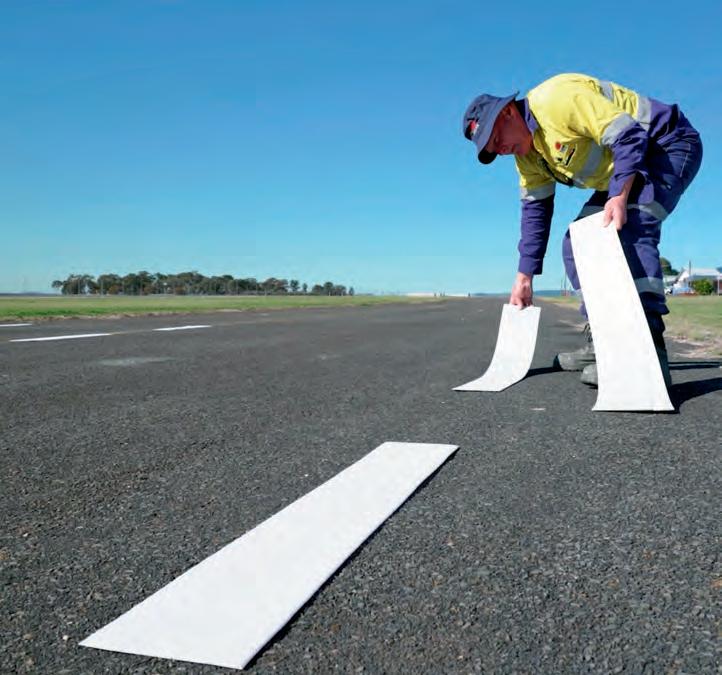
conditions in real time.
Mitchell Freeway southbound is Perth’s second Smart Freeway. The first Smart Freeway began operating on Kwinana Freeway northbound in August 2020, with motorists continuing to experience a safer journey and save up to six minutes on their journeys between Roe Highway and the Narrows Bridge to the city during the morning commute.
FIVE
The New South Wales government has announced further improved safety projects for truck drivers, unveiling a statewide $11.9 million improvement initiative to upgrade rest areas in the state’s south.
Five rest areas that cater to heavy vehicles have been completed at Berry Jerry rest area on the Sturt Highway, as well as Beckom, Bundure and the Marsden northbound and southbound rest areas on the Newell Highway.
The upgrades provided solar-powered lighting for the toilet blocks and surrounds to improve safety for all users, and new picnic shelters to allow truckies to take a short break.
Transport for NSW also installed improved roadside signage at a number of service centres along the Hume, Sturt and Newell highways to assist heavy vehicle drivers to better identify rest stops.
“Driver fatigue is one of the top four contributing factors to fatal crashes on NSW roads, highlighting the importance of adequate rest and rest stop facilities for all drivers,” NSW regional transport and roads minister Jenny Aitchison says.
“The NSW government is working closely with, and listening to the road freight industry, as we improve the quantity and quality of heavy vehicle rest stops.”
The upgrades have been delivered as part of the governments $11.9 million Heavy Vehicle Rest Stop Minor Works Program. Earlier last year, Transport also completed upgrades to Seven Trees and Curlwaa rest areas on the Silver City Highway and Bundjalung rest area on the Pacific Highway as part of the statewide program.
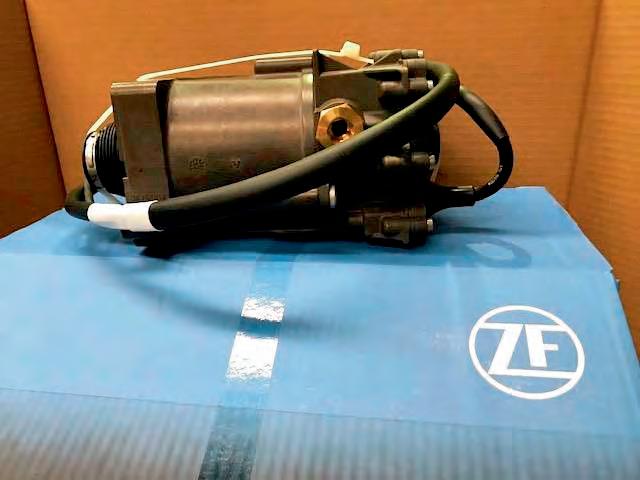
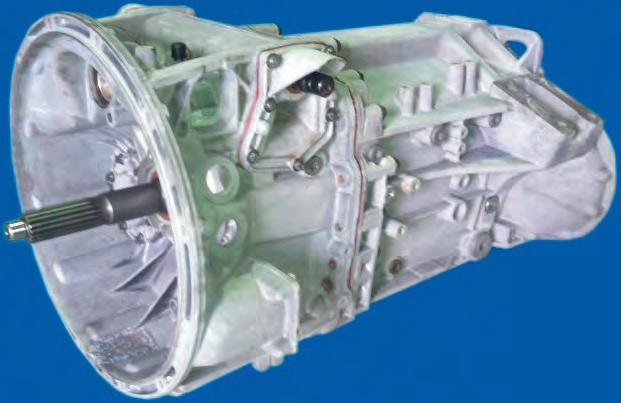
ReconditionedMercedes-BenzTransmissions. MostMakesandModelsG100,G131,GO210, G240,G280,G330available.S3. TA431566. POA
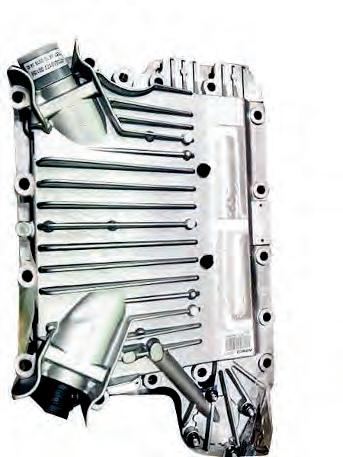
Unit 1/71 Axis Place, Larapinta, Brisbane, QLD, 4110, Australia
Ph: (07) 3276 9300 Fax: (07) 3276 9301
Email: sales@ggd.net.au davids@ggd.net.au
Ph: (07) 3276 9300 Fax: (07) 3276 9301 Email: mattc@gibbsparts.com davids@gibbsparts.com Web: www.gibbsparts.com
Web: www.gibbsparts.com

ZFEcolitepowerpacks.S40. TA952390.
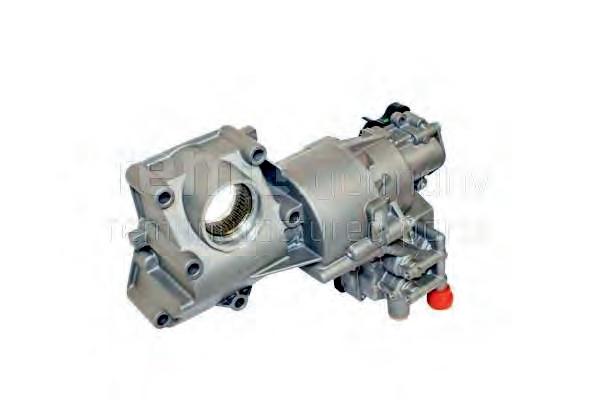
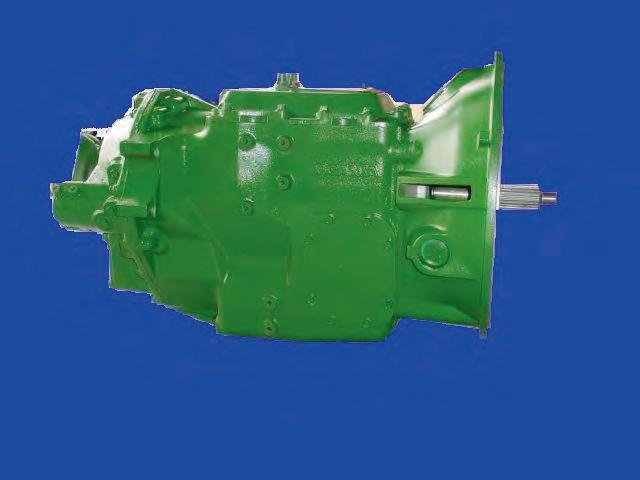
Allmakesandmodelsavailable.S11. TA431615. POA
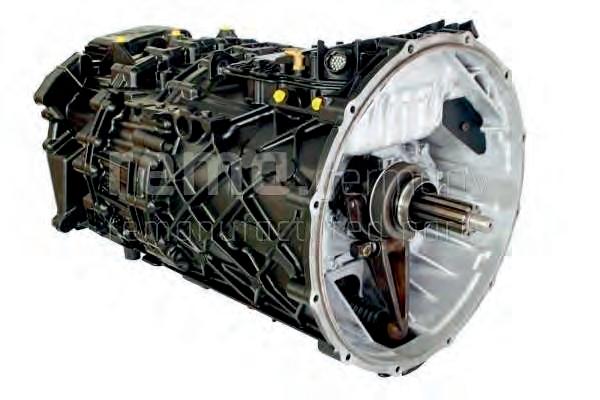
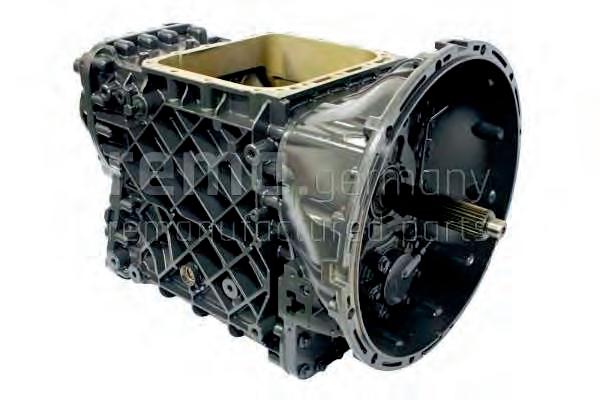
VOLVO/MACKI-SHIFT/M-DRIVE AT2512C,AT2612D&ATO3112D. S44. TA952399. POA ZFTRANSMISSIONSALLMODELS Allmakesandmodelsavailable.S10. TA431606. POA
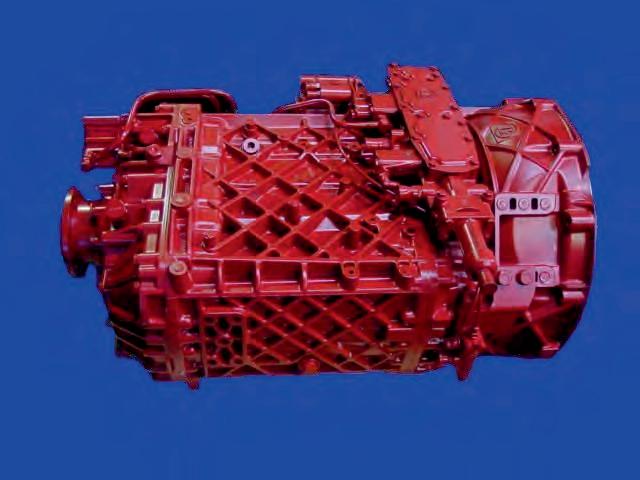
Volvo Trucks Australia’s Shayne Commons spoke to OwnerDriver about the latest FH Aero model to land in
There’s nothing quite like hopping behind the wheel of a new truck, checking out the cab while taking in the fresh smell of leather.
With Volvo Trucks Australia announcing in October that it will be unveiling its new FH Aero model to the local market in 2025, a new set of owner-drivers around Australia will get the chance to relish the ‘new truck’ moment yet again when the model is released.
However, Volvo Trucks’ Australia Director of Product and Performance Shayne Commons warns that the FH Aero will be unlike any truck that drivers have ever operated before.
“Drivers will jump in and it will feel completely different to them,” Commons told OwnerDriver.
“While our Camera Monitoring
System, or CMS, is something that is new and will take some getting used to, once drivers get over the initial shock, it’s a great feature.”
The latest addition to Volvo’s truck range, which is available to order from the Volvo Trucks Australia team now, removes all physical mirrors, with CMS reducing blind spots from the driver’s seat. With technology also involving zoom-in, zoom-out functions and following rear trailer capabilities, as well as infrared nighttime visibility mode and shifting light situations, CMS takes the FH Aero to the next level when it comes to overall image and perception quality.
This is only one key pillar of the changes that Volvo has introduced on the FH Aero for owner-drivers,
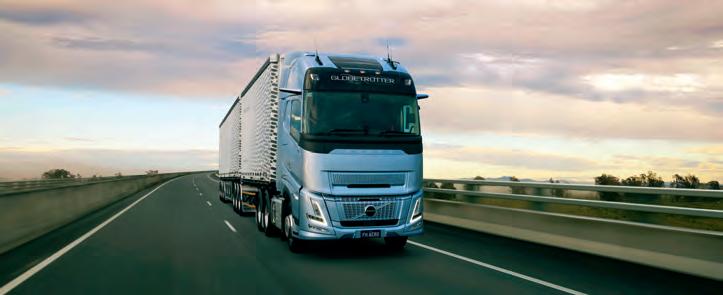
with sustainability remaining a major focus.
“The focus on sustainability means we’ve continued thinking about and understand what this looks like with reduced fuel consumption,” Commons says.
“For some time, we’ve been specifying vehicles for historic regional requirements, such as the use of bullbars and so on. On the FH Aero, we’ve worked to smooth out the front of the truck and remove aerodynamic drag.”
By stripping the major additions to the front of the vehicle that affect aerodynamics, Volvo has created a truck model that cuts through the air and uses less fuel
while doing so.
Extending the front of the truck by 235mm over a standard FH has allowed for fine-tuning of the truck shape’s design, corners have been re-worked and panels have been closed to improve aerodynamic flow. It’s paid off, with initial testing of the FH Aero showing an efficiency gain of around five per cent. It may sound small, but it could result in plenty of cost benefits for trucking businesses.
“The motivation for this is to understand the application that it’ll be operated in by local customers and their requirements,” Commons says.










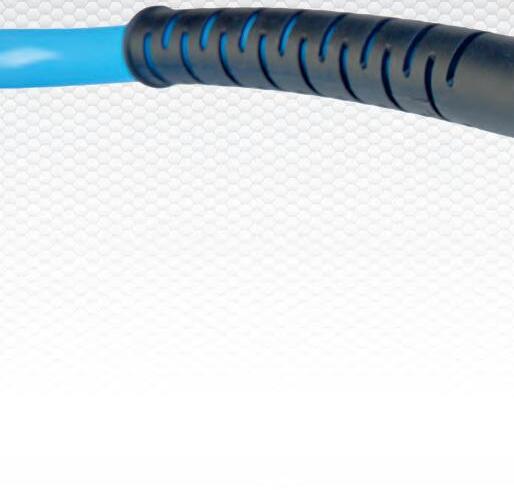
• CLIPLOCK features a TWO-STAGE locking mechanism. The industry standard and the Optional innovative GP
PENDING).
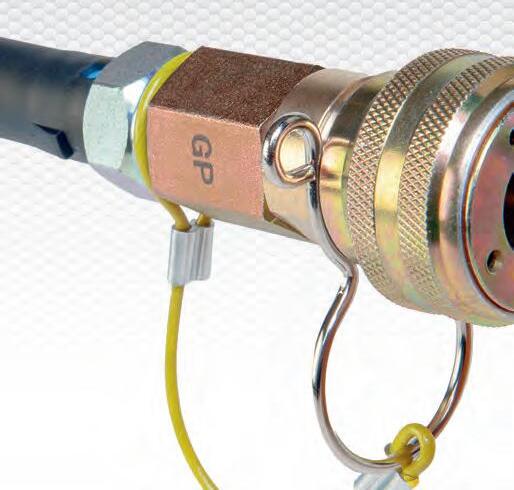

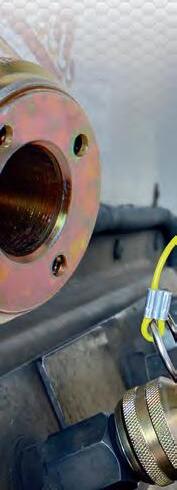

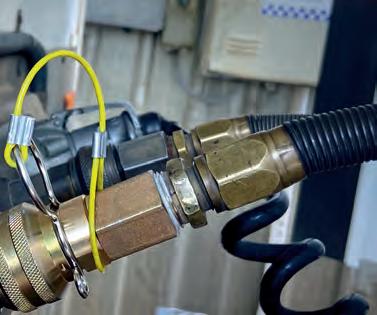

• Prevents incomplete coupling connections of Trailer Airline Couplings.
• A dangling Locking Clip will alert the driver that the Coupling Connection may not be securely connected. Ensures positive and secure connection of the Trailer Airline Couplings.










CMV Group is preparing to begin a local recruitment drive for the initial Melbourne North Truck Centre site, with
CMV Group has announced a major expansion of the PACCAR network in Victoria, with the expansion of its Hallam Truck Centre Kenworth and DAF dealership operations to result in a new dealership in Melbourne’s northern regions.
Following the acquisition of sales territories in Somerton and Ballarat, CMV Group took over existing TRP Ballarat and TRP Somerton parts outlets from January 1.
Following this, CMV Group now plans to build a new state-of-the-art Kenworth and DAF Truck dealership at Mickleham in Melbourne’s north.
To be known as the Melbourne North Truck Centre, plans are for the dealership to open in 2028 and solidify CMV Group’s commitment to PACCAR Australia and its customers.
The construction of the dealership is expected to commence in 2026 and will be completed by early 2028.
In the meantime, Melbourne North Truck Centre will operate from a temporary leased facility at 106 Hume Highway, Somerton and will offer truck sales, servicing, parts and PacLease rental starting from the first quarter of this year.
“Melbourne North Truck Centre will support the ever-growing customer base to the north of Melbourne, along with the inner west, including Ballarat, which is a pivotal region for Australia’s important national freight task,” CMV Group joint managing director Daniel Crawford says.
“Locating a full-service dealership adjacent to Australia’s greatest
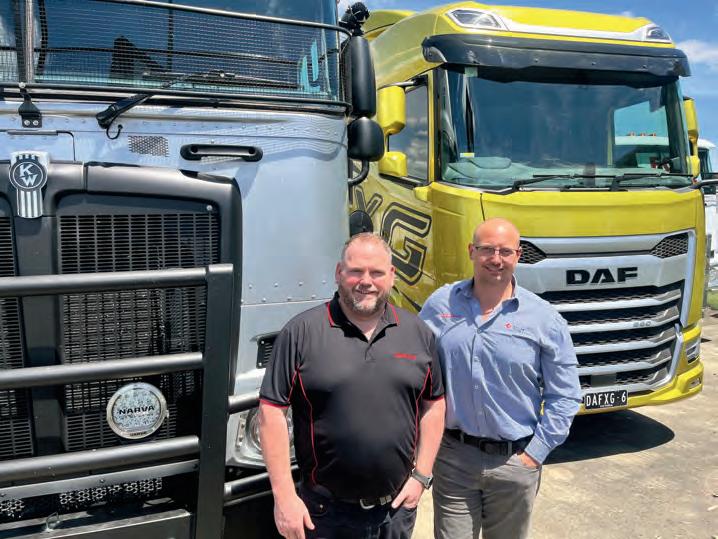
freight route, the Hume corridor, is also critically important to improve the level of service and support for PACCAR customers along the eastern seaboard.”
The dealership will continue CMV Group’s relationship with PACCAR, which began back in 1968 when CMV obtained the franchise in Adelaide.
Now, the Melbourne North Truck
Centre will join a well-established network of PACCAR dealerships including CMV Truck Centre in Adelaide, Hallam and Bayswater Truck Centres in Victoria and the Barry Maney Group in Mount Gambier.
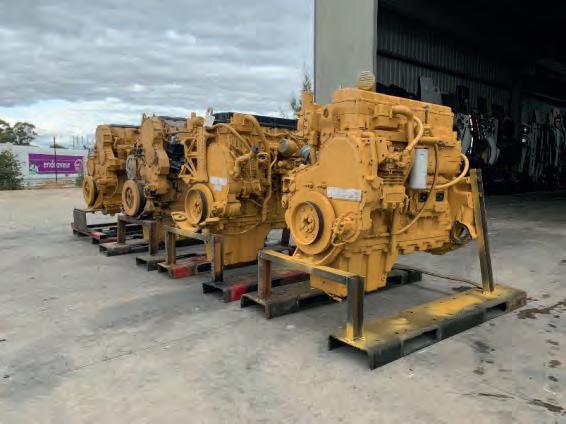
Specialists in CAT and Cummins Engines also carrying parts for all American Truck Brands and Road Ranger Gearboxes. Rebuilt and Second Hand Options Available. Warranty with all second hand and rebuilt engines.
CAT C-15 Rebuild (6NZ or 9NZ Prefix) $48,000 + GST exchange on Special Until EOFY or While Stocks Last. (Block Work, Pistons/Sleeves, Cyl Head, Injectors, Turbo, Camshaft, Rocker Gear, Water Pump, Oil Pump). 12 Months Parts Warranty, 6 Months Return to Base Labour. 550 HP Spec.
CAT C13 Engine (KCB Prefix) $25,000 + GST exchange. Second hand engine with 600,000km on it. Runs good with good oil pressure. 60 Days Return to Base Warranty. 470 HP Spec.
CAT C15 Acert Engine (NXS Prefix) $26,000 + GST exchange. Second hand engine. Has had a bearing roll (mains and big ends). 60 Days Return to Base Warranty. 550 HP Spec.
Cummins Signature Gen 2 Rebuilt Engine $48,000 + GST exchange on Special until EOFY or Stocks Last. Block Work, Pistons & Sleeves, Cylinder Head, Turbo, Camshafts, Injectors, Water Pump, Oil Pump all done. 12 Months Parts Warranty and 6 Months Labour.
Cummins ISX 475 Engine Second Hand Engine. $22,000 + GST exchange on Special Until EOFY. Good Oil Pressure, Ran Good. 60 Days Return to Base Warranty.
Cummins Signature Gen 2 Second Hand Engine
$25,000 + GST exchange. Good Oil Pressure, Ran Good. 60 Days Return to Base Warranty.
Cummins ISX Signature EGR Engine. $52,000 + GST Exchange on special until EOFY or Stocks Last. Blockwork, Pistons & Sleeves, Cylinder Head, Turbo, Camshafts, Water Pump, Oil Pump.
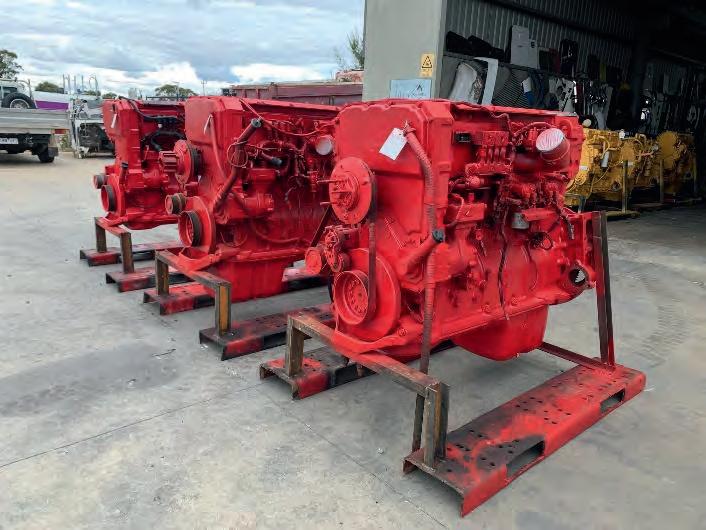
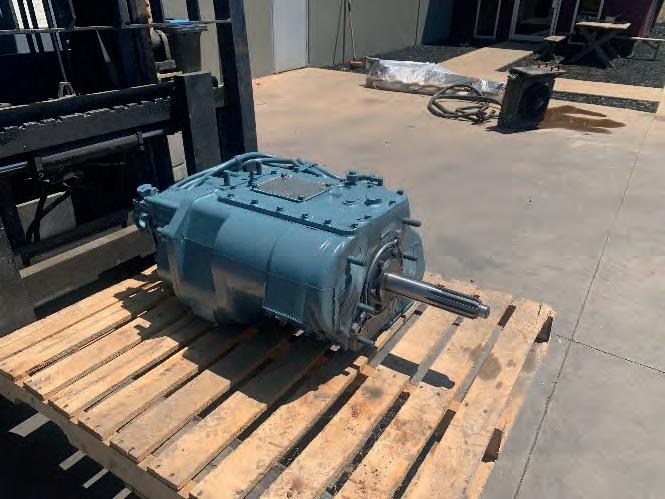
Road Ranger Gearboxes Reconditioned and Second Hand.
All genuine Eaton Parts in reconditioned boxes. Various models available including 16718B, 16918B, 18918B, 20918B, 22918B. Call for pricing and availability of your preference.
The longstanding CEO of Followmont Transport will step into another role at the
as his
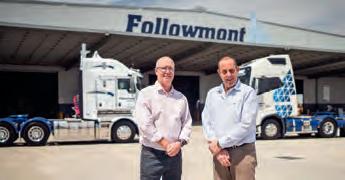
Transport operator Followmont Transport has revealed a change in its leadership team, with the company unveiling a transition moving forward.
After 12 years spent as the CEO and managing director of Followmont Transport, Mark Tobin will switch into the role of managing director to drive the strategic growth and innovation of the operator.
into the trusted, family-oriented business that it is today,” Followmont Transport says.
Tobin first started working with Followmont Transport at the age of 16.
“His leadership has been instrumental in shaping Followmont
The regulator has three areas in particular it’s focusing on with its HVNL review submission
The National Heavy Vehicle Regulator (NHVR) has provided OwnerDriver with an exclusive into what its Heavy Vehicle National Law (HVNL) review submission touches on for the trucking industry.
With many other associations having provided their submissions to the National Transport Commission’s (NTC) review of HVNL penalty rates, the NHVR has been working with the industry to identify the
right changes that should be made to the law.
In October last year, the NTC unveiled 71 proposed HVNL rate changes to penalties as part of its review, with NHVR CEO Sal Petroccitto OAM saying three main areas have remained a focus for the regulator.
“The NHVR has been an active participant in the review process, providing unique insights to the reform of the law, based on our direct, long-term and daily engagement with the heavy vehicle industry and the supply chain,”
Petroccitto told OwnerDriver
“The NHVR’s submission outlines our


“His dedication to our people and customers remains at the forefront as we move forward.”
Replacing Tobin as CEO of the
concerns that the review needed to go further to achieve reform in critical policy areas.”
The three areas of most concern for the NHVR includes safety standards, support risk-based fatigue management delivery and ensuring the regulator can make and approve standards for industry innovation.
Petroccitto says the NHVR wants the HVNL to ensure safety standards are lifted through the availability of alternative compliance accreditation options for the industry.
When it comes to supporting risk-based fatigue management, the regulator is calling for the delivery to be based on risk controls and offsets rather than encouraging working up to set work and rest limits.

operator will be Ross Longmire, who first joined the company in 2021 as the chief operating officer.
With more than 25 years’ experience in the transport and logistics industry, Longmire is looking to continue building on the impact he’s had to date at Followmont Transport.
Thirdly, Petroccitto says that he wants the HVNL to allow the NHVR to make and approve standards and other instruments to ensure that it can be responsive.
“The NHVR remains committed to pursuing a safer, more productive and more efficient industry, supported by an HVNL that embraces modernisation, flexibility and learnings,” Petroccitto says.
“The NHVR welcomes further discussions to ensure the legislation does not restrict the NHVR from working with its customers in a transparent and agile approach and we can better reflect and meet the fast-evolving nature of the industry we serve.”

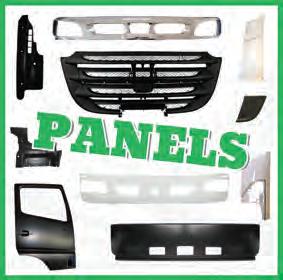
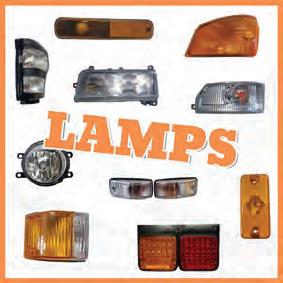










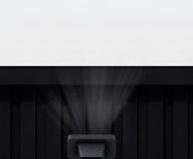





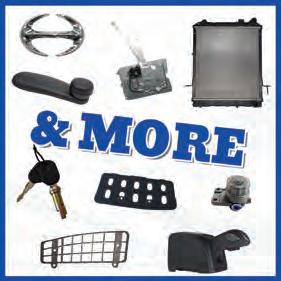
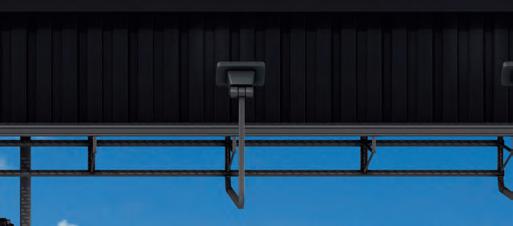



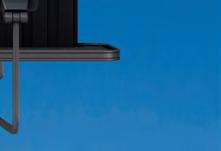









Sterle
If 2024 was anything to go by, 2025 is going to be a huge year for the road transport industry.
This time last year, the Albanese Government’s groundbreaking Closing the Loopholes legislation passed the Parliament. This legislation will ensure that labour hire loopholes will be closed, wage theft will be made a crime and workers will benefit from safer workplaces. The first tranche of the Closing Loopholes Legislation will also criminalise industrial manslaughter and make ‘same job same pay’ the law of the land. The fight to deliver these changes had been hard fought by workers for many years but the fight was not over. We still needed to get transport reform, or Tranche Two of the Closing Loopholes bill, over the line.
After a long and unified fight by the road transport industry, transport reform passed the Parliament on February 12, 2024. This Bill will go a long way to ensure a safe, sustainable and viable trucking industry –including for owner drivers! It was a very proud day for the transport industry, which still stands united, unlike the Coalition (the Liberal and National parties as well as Pauline Hanson’s One Nation), who voted against supporting truckies, transport companies and owner drivers. Next year, when the federal election comes around, transport workers will have a clear choice of who they can trust to stand up for them.
Whether it be delivering transport reform for truckies, owner drivers and transport companies or investing $26.5 million in new or upgraded rest areas for our essential truck drivers since being elected in 2022, the Albanese Labor Government is the only party that genuinely cares about the road transport industry and our truck drivers. Compare that to what the Liberal and National parties have done for truck drivers in recent history, including abolishing the Road Transport Renumeration Tribunal without putting anything in its place to guarantee protections for owner drivers and transport operators and leaving drivers scared out of their wits when they failed to prepare for the looming shortage of urea back in 2021.
On top of this, they also cut the fuel excise which failed to produce any relief to truckies working on razor thin margins, offered a truck driver apprenticeship scheme prior to the last election without first committing to come up with a plan to address the broader issues which were resulting in a race to the bottom through the squeeze of the supply chain and, when faced with an opportunity to deliver real transport reform to ensure a safe, viable, sustainable, profitable and secure road transport industry, they voted against it. They voted against job security for transport workers, better rights, pay and conditions, minimum standards for truckies and a dedicated arm within the Fair Work Commission just for the road transport industry. They also voted against delivering standards for food delivery riders and drivers; and improving payment terms that wouldn’t put pressure on drivers into lowering costs.
The actions of the Liberal and National Party, along with Pauline Hanson’s One Nation, were in
complete defiance of a unified transport industry which was comprised of transport workers, owner drivers, truckies, gig economy workers, academics, transport companies – large and small, transport associations and the Transport Workers Union who had been calling for this change together for many years. The Coalition were aware of the position of the unified transport industry and some MPs and Senators from the Coalition even met with them to hear why transport reform was so important.
Yet they voted against it. So, with that being said, what is the Coalition’s plan for the road transport industry in the lead up to the next election? Will they continue to bow down to the likes of the Minerals Council of Australia, the Business Council of Australia, the Australian Chamber of Commerce and Industry, AI Group and the National Farmers Federation who ran a $24 million campaign against the labour hire reforms?
Or will they engage with the likes of the National Road Freighters Association, the Australian Road Transport Industrial Organisation, NatRoad, state-based transport associations and the Transport Workers Union to understand why this groundbreaking transport reform is essential for the road transport industry and why it must be protected, respected and supported – now and into the future?
For me, the choice at the ballot box next year could not be clearer. For now though, I would like to wish everyone and their families a very Happy New Year and remind everyone to travel safe and make sure you hug the ones you love before you head out on your next trip.
Glenn
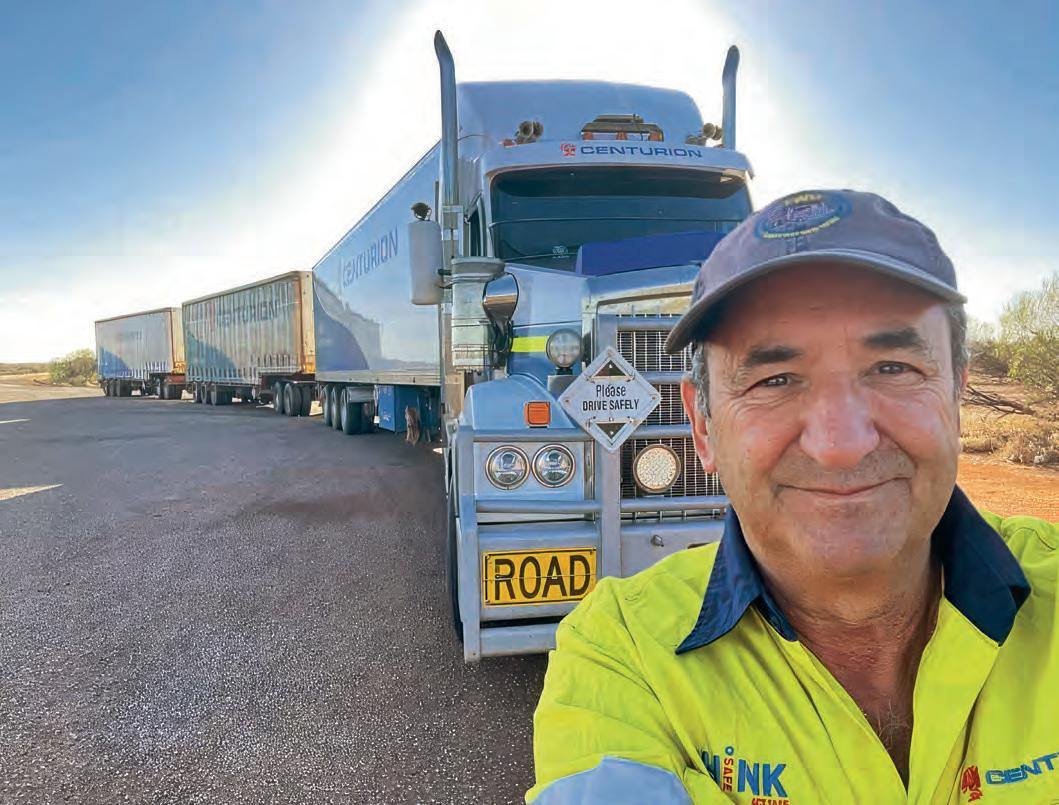













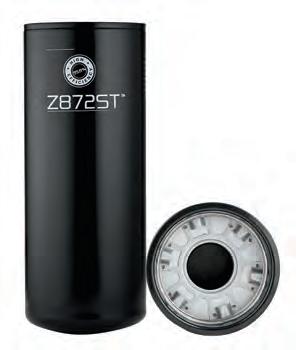





The 2024 Truck of the Year Award marks the latest instalment of the highly-popular Truck of the Month feature in OwnerDriver
The team here at OwnerDriver has chosen the 12 finalists, but the responsibility of selecting the winner is now turned over to you –our valued readers. Among the nominees are some amazing trucks – so we don’t envy the job ahead of you! Read on to find out how to vote, and what you can win for your efforts!





To be eligible, trucks must have appeared as a Truck of the Month in OwnerDriver over the past 12 months.
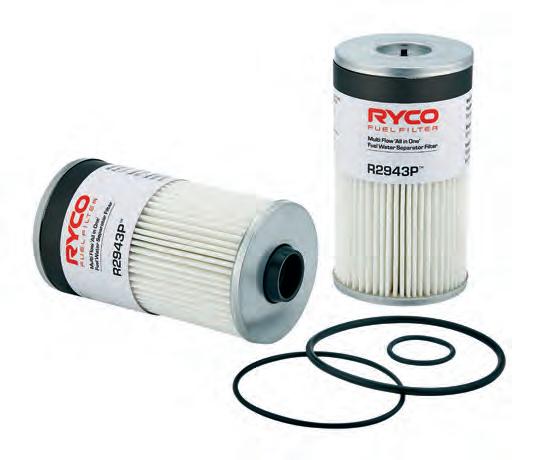
YOU CAN WIN TOO


The outright winner will be decided by popular vote –with the winner featured in the March 2025 issue of magazine as well as online at OwnerDriver.com.au!

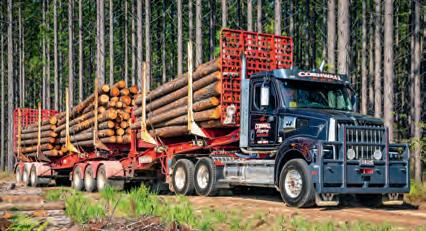

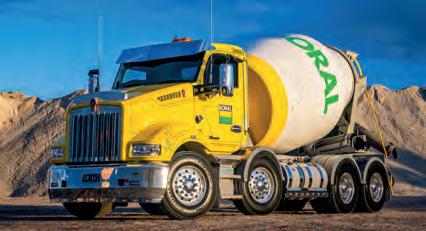




Not only does your vote count towards your favourite truck getting the gong, but it also puts you in the counting vote to win $1000 worth of products courtesy of Ryco to go towards your operations. The prize valued is based on the national retail price of Ryco’s products.
HOW TO VOTE

Simply jump online and head to OwnerDriver.com.au/TOTY, follow the prompts to the promotion entry page and complete the entry form (including your full name, mailing address, telephone number and valid email address), and vote for your favourite truck.
Voting commences on December 1, 2024 and closes at 11:59PM on January 31, 2025.
To help you make your choice, you’ll also be able to view the original feature stories on all 12 finalists on the site. You can only vote once, so make it count!


Rafe Cornwall grew up surrounded by trees, trucks and chainsaws. Starting on Queensland’s Fraser Island where his dad and grandad were logging, Rafe has since become involved in the logging game. When he ordered a new day cab Western Series 48X for logging work along the Fraser Cost, no one was more excited than driver Luke Josefski.

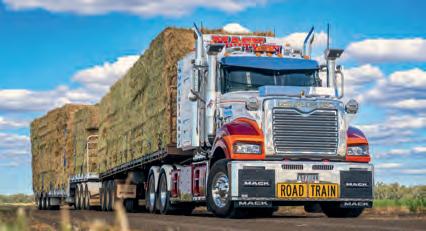
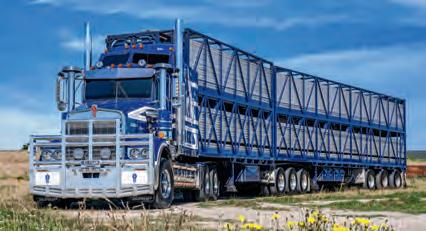

Having grown up around trucks in South Africa, Gona Govender is now a crucial part of Melbourne’s agitator business. With his two sons now part of the family business, Gateway Logistics, the professional operation has been taken to the next level with a two-year-old Kenworth T360 being pride of place in its fleet.






It only took John Dufty one quick test drive in the Outlaw Mack to convince him that a stunning and spruced-up Super-Liner would not just fulfil his on-road and off-road needs, but also look a million bucks. The end result is John’s Mack Outlaw #5 that is now a shiny star in his fleet.




The trucking industry is all about history, which father and son duo Ian and Hayden Einsiedel know all about in their cattle-carting business. Heading to the Victorian town of Sale, the pair’s new flagship truck is a beautiful 2023 Kenworth W900SAR Legend that 25-year-old Hayden now has the keys to.





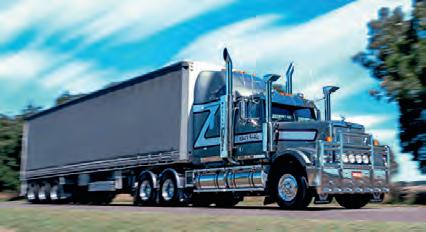




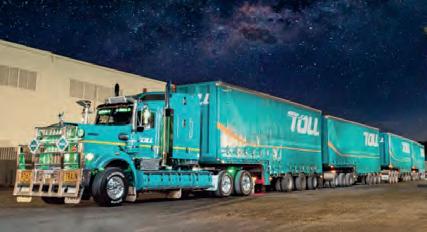
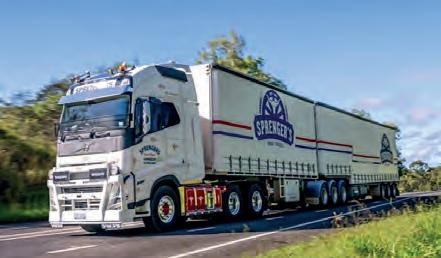



Who doesn’t enjoy a good starry night? While Matt Kane, as a Mack man, had his heart set on a Cat-powered Mack Super-Liner for his next addition, he soon fell in love with the unique 2000 model Western Star 4964X Limited Edition Constellation. He’s since been pleasantly surprised by the model.



As a driver for major fleet operator Toll Energy, Suzy Snowden has rich trucking history coursing through her veins. While catching up with her, Warren Aitken got to meet the Kenworth C509 that she pilots for Toll Energy each day, and it doesn’t disappoint.


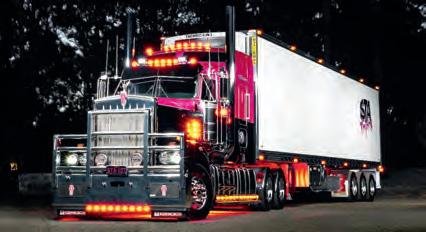


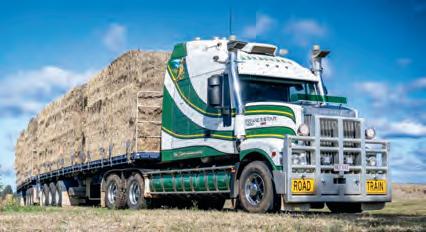


Trucking has always played a part in the Hutchinson family business. As a third-generation truckie, he has both Kenworth and Volvo models in his fleet. His latest Volvo XXL addition, known as the ‘Moo-Chew Express’, is already catching attention around Australia. 08




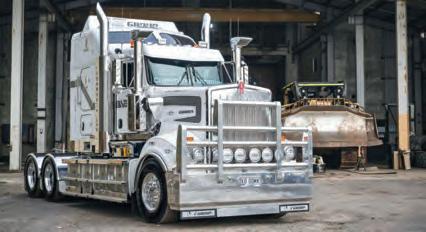


Known as ‘F##kin Perfect’ after the Pink smash hit, the couple’s new Kenworth T909 has proven a hit for STA Trucking. Beautifully presented in pink, the truck is allowing the couple to continue growing the business.


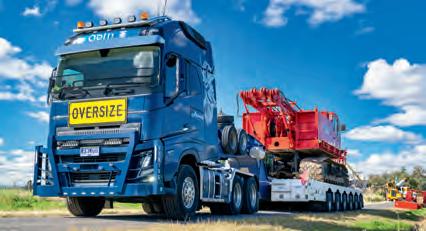


After first hitting the roads in 2016, Warren Aitken finally got to meet one of his favourites in the form of the Iveco PowerStar. The origin story with the king of king size rigs in Gary Athorn out at Cunnamulla, Queensland, backs up the star quality of this truck.


Bronwyn and Nathan Howell are both humble members of the Australian trucking industry, and their latest truck model shows their dedication. The special 2023 release of the Kenworth T909 they’ve sported is a 100-year nod to the iconic trucking brand. 11


Described as a ‘battler-esque’ character, Keith Reid epitomises the resilience of Aquaholic Water Cartage and Transport Services. Having survived through drought and then floods, Keith’s new Volvo Viking model is as eye-catching as you can get.


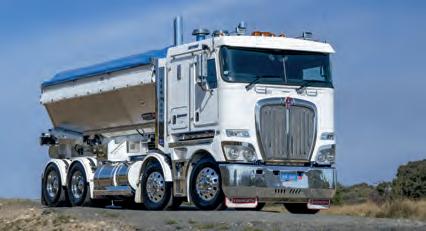




Henry Morrison is a well-known trucking legend, and his custom designed Kenworth K200 is testament to his passion and dedication. When travelling to check out the truck, Warren Aitken met his daughter Kristy Lee Morrison, who also has her own unique story in the industry.




In late 2024, Warren Aitken took Scania’s new 500hp Super P for a drive around some of western Melbourne’s hillier roads to put the Swedish giant’s latest beast to the test
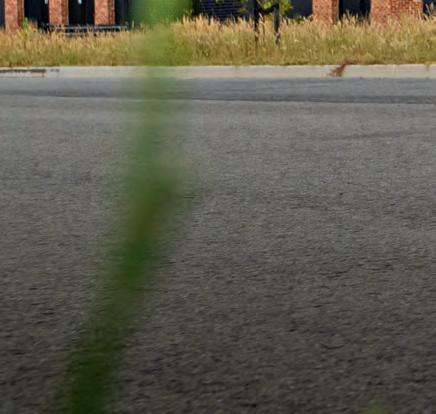
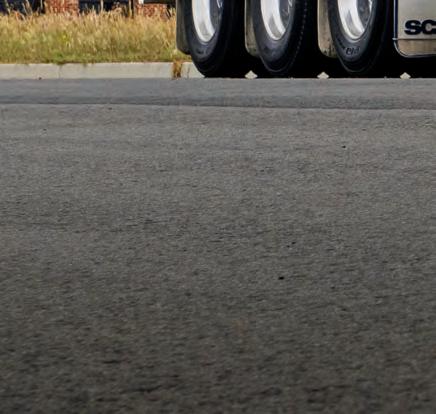
Full disclosure – I have always been a bit of a Scania fan. I’ve driven plenty of them and loved pretty much all of them. The majority of my experience was back in New Zealand, where I had the pleasure of experiencing the mighty Series 3 450s and even putting some miles on the big 530hp V8 when it first broke ground. By the time I got to experience the Scania prowess over here in Australia, I was behind the wheel of a 730hp monster and pretty much all the gearsticks had been replaced by automatic transmissions that are much smarter than I’ll ever be.
While Scania has a considerable array of variants to cater for every vocation, my experiences were limited to the ‘big boy’ versions, or more appropriately, the R-Series. I had a
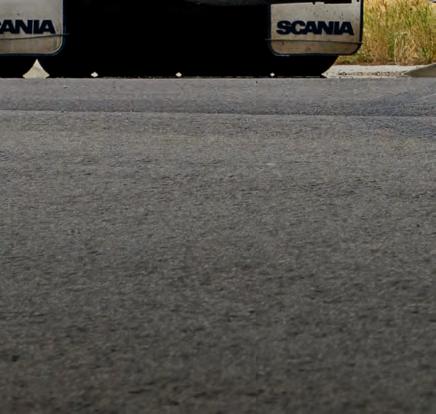
little bit of time behind the wheel of a couple of G-series, but the P-series was new to me, hence the opportunity to take one of these workhorses for a spin and check out the new 500hp Super P version was too good to pass up.
Let’s do all the technical information first. The P-series is labelled as Scania’s most versatile cab range. Its low weight, low height design makes it a perfect jack-of-all-trades urban truck – having the low height gives you extremely easy access. Even for short guys like me, the two-step entrance is easy. Add in the visibility from the low set windscreen and the truck is ideal for working and delivering around cities and industrial areas. Top it all off with the standard safety features synonymous with Scanias, as well as the creature comforts you expect from the Swedish stylists, and

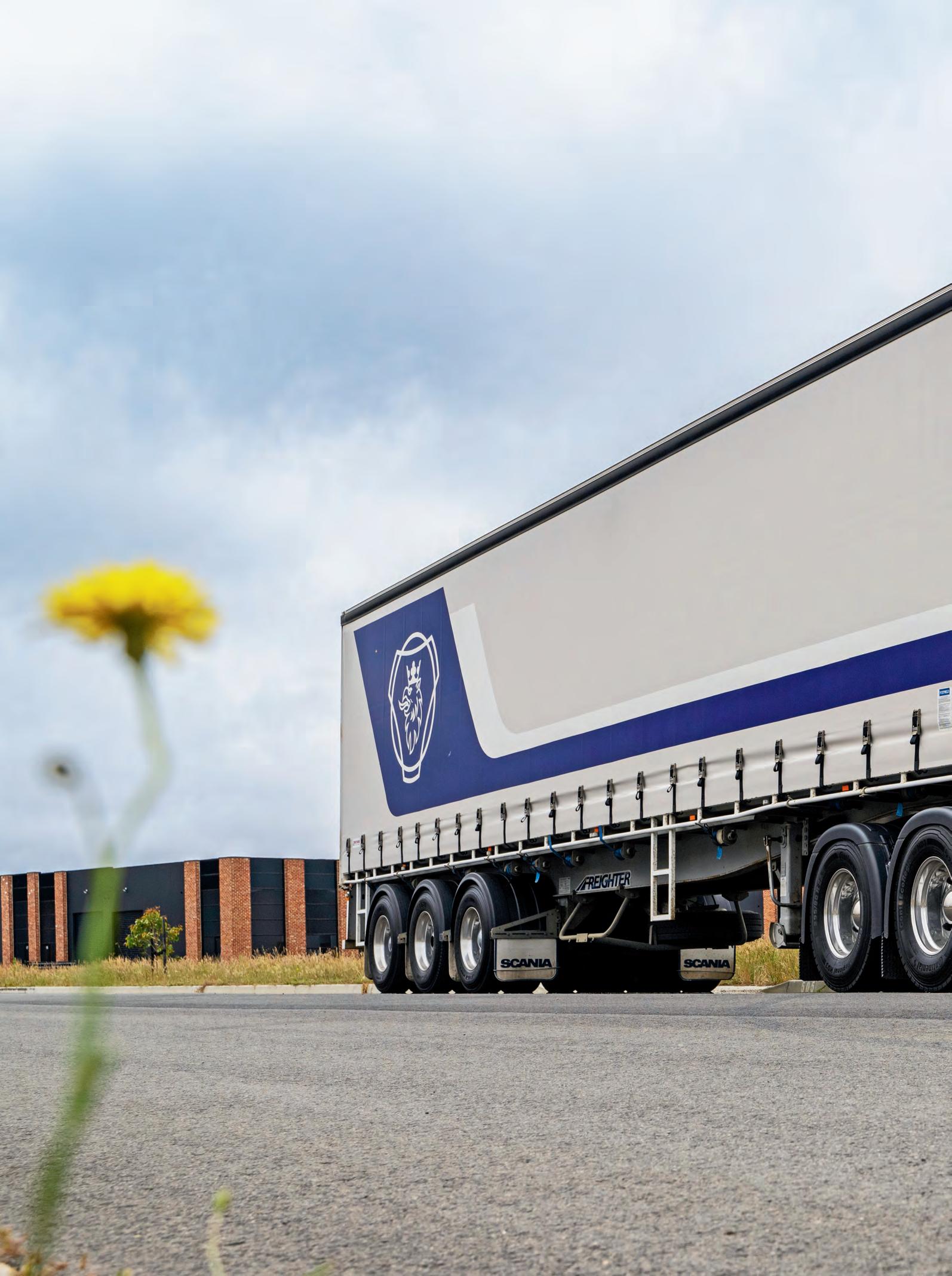
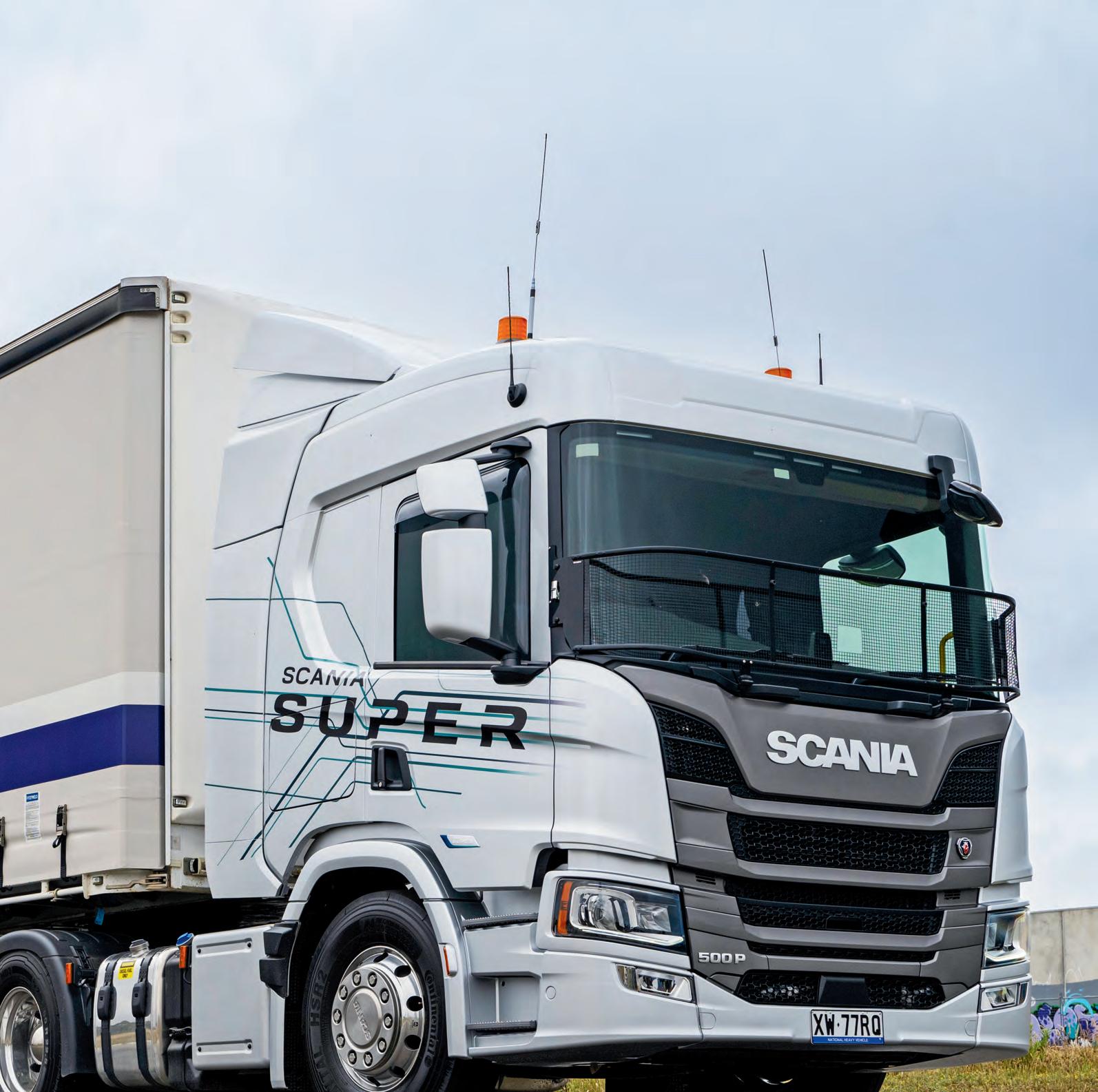
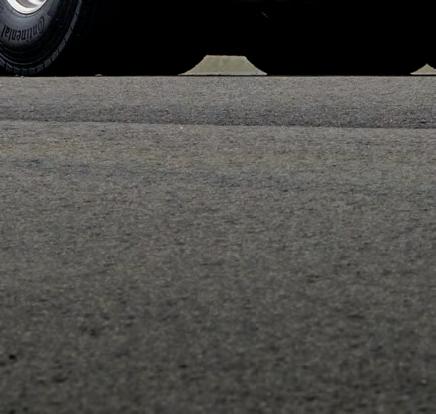
you have a truck that drivers are happy to inhabit for more than just a local delivery.
It was a truck designed to do all the important ‘behind the scenes’ work, keeping the world of transport revolving while never really chasing the limelight of its bigger brothers. The main thing that tended to hamstring the P-series from chasing the limelight that its bigger R-series and S-series brothers got was the power package underneath it. The traditional 13-litre straight six motor available in the P-series topped out here in Australia at 450hp. When the double overhead cam SUPER engines first hit Australian shores, that increased to 460hp. Overseas, Scania did offer 480hp versions, however it wasn’t seen here in Australia due to the fact we can melt bitumen on a
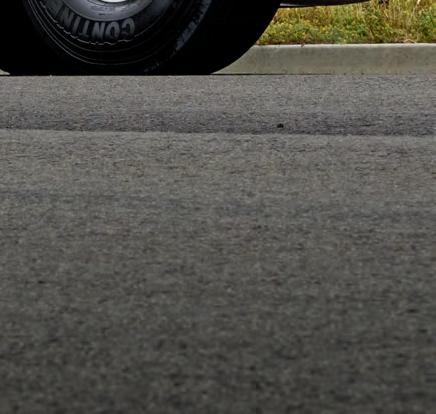
winter’s day here and the cooling package wasn’t on point for that.
However, the latest evolution of Scania’s SUPER engines has seen the playing field change again. The new P-Series engine, with a larger cooling package, is wound out to 500hp and 2650Nm of torque – that’s topping the torque tally in the 500hp field and it’s even putting in a competitive total in the 540hp market. It’s not just the numbers that count – as the saying goes, ‘it’s not how big it is, it’s what you do with it that counts’, and the six-cylinder Scania SUPER engine is doing all the right things with its torque curve.
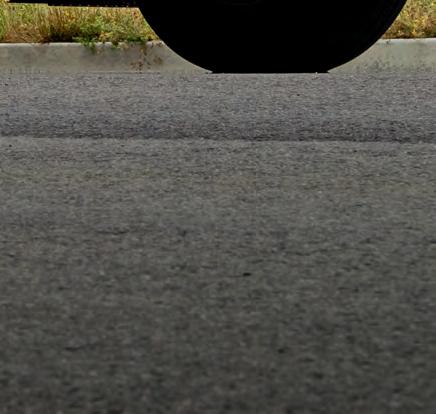
“The torque curve is actually a torque straight,” Scania sales director Benjamin Nye says.
“It’s as flat as a pancake from 900-1320 rpm, and what this

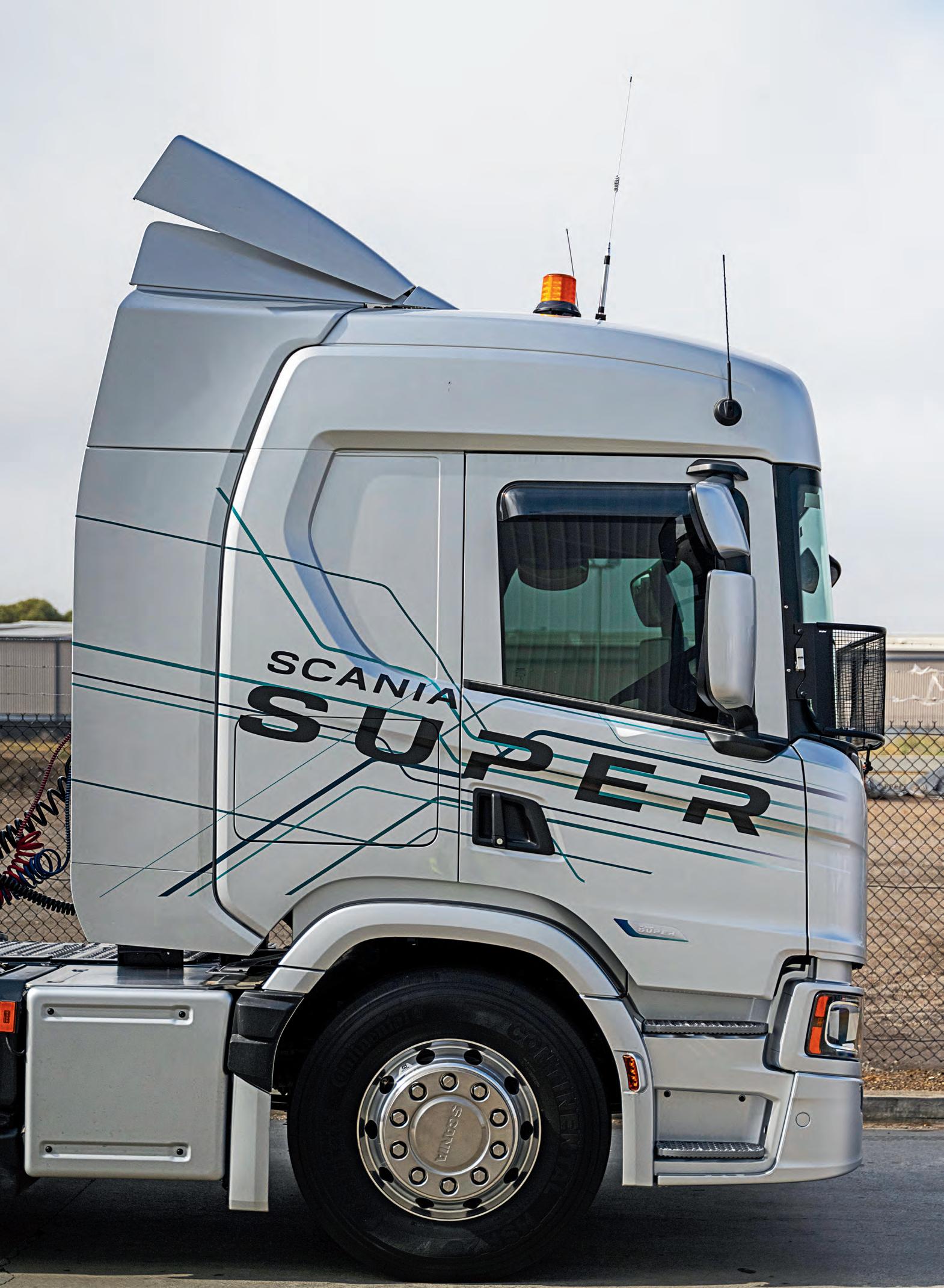
“The 500 P will eat hills for breakfast and head to the mountains for a snack before lunch.”
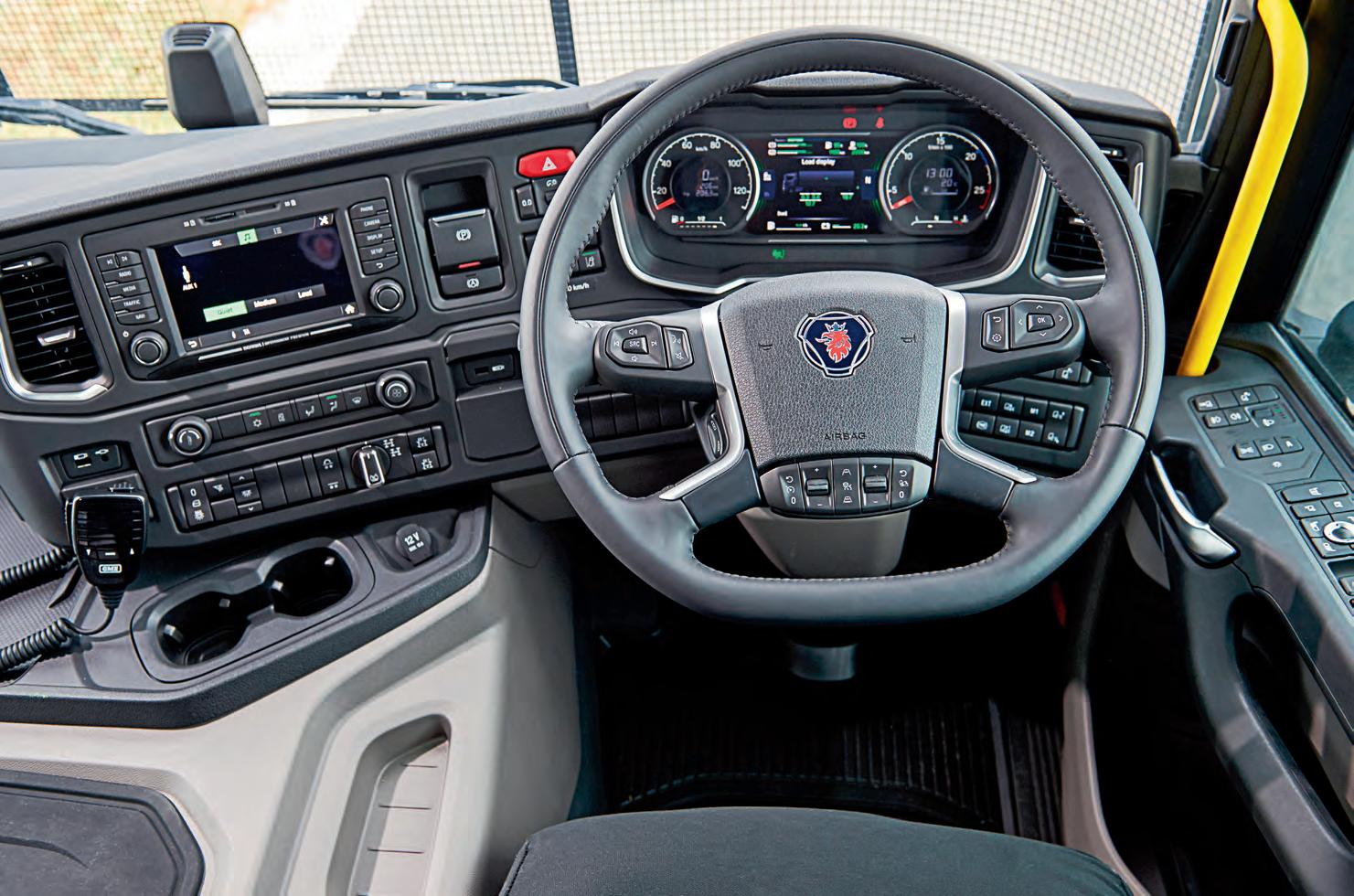
means on the road is effortless driveability. The 500 P will eat hills for breakfast and head to the mountains for a snack before lunch.”
All of a sudden, the P-series has added a very strong string to its bow and, along with doing all the grunt work around town and on smaller missions, it is equipped to suit up and fill in on those big boy roles when needed. That’s where our test drive comes in – testing out the P-series with a loaded single, grossing 36,560kg and a B-double setup grossing 56,160kg.
In order to put the P-series and it’s 500hp SUPER engine through its paces, Scania had us traversing the hills west out of Melbourne, heading a couple of hours down the road so we could find a couple of decent hills to test out these pocket rockets. I began with the stunning silver Scania and single trailer in tow, accompanied by Benjamin Nye himself, who was happy to sit and talk me through the new SUPER engines.
What I will say first is focused on the ease of settling into a Scania – whether you have driven millions of miles in them or merely experienced a quick trip round the corner,
once you are starting out there is a comfortable familiarity about the Swedish setup. Everything is so handy and accessible and it always feels very natural – it took me all of two minutes to get my set-up right and the steering wheel adjusted. You would add another couple of minutes if you wanted to link your phone to the media setup, but I was happy for the harmonious melodies of a Scania salesman.
Once we headed out of the Laverton workshop, I focused on negotiating the ever-friendly Melbourne traffic while Ben unveiled the thinking behind the move for a 500hp P-series.
“The opportunity came about to introduce the 500hp in the P-cab and the reason we’ve done that is it opens up this truck to really become the jack of all trades. It’s a good single trailer truck as we are now,” he says.
“It can also do B-double. You can have it in your fleet, predominantly doing single trailer or light B-double work, and if something happens and one of your big trucks go down, you can actually stick it under a heavier load and do a Tarcutta changeover. It has the ability to adapt into different roles.”
I must admit I did a terrible job of taking note of the
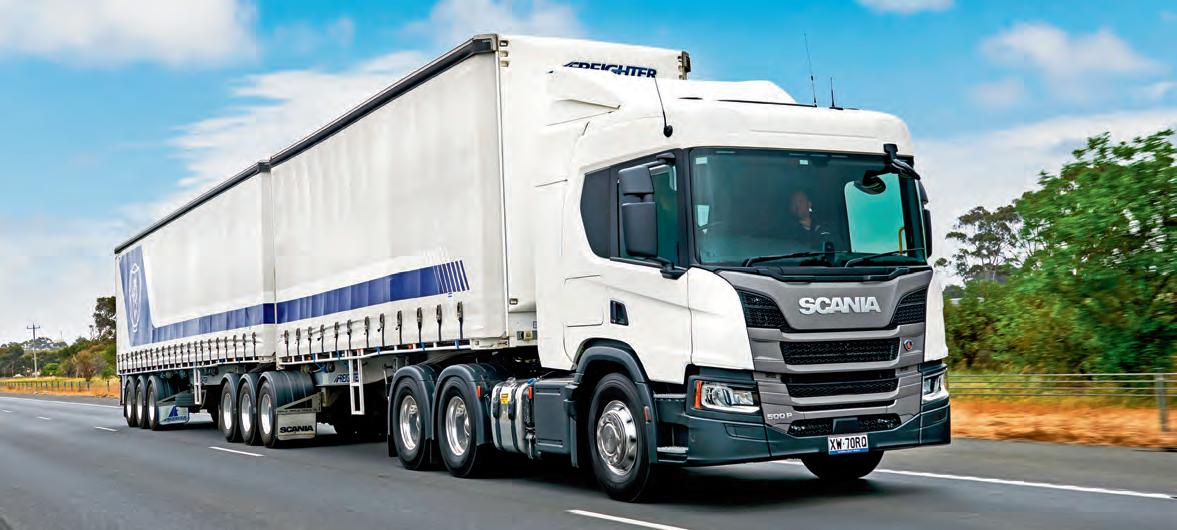
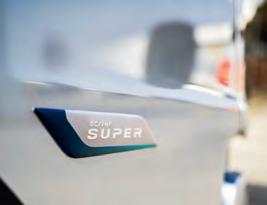
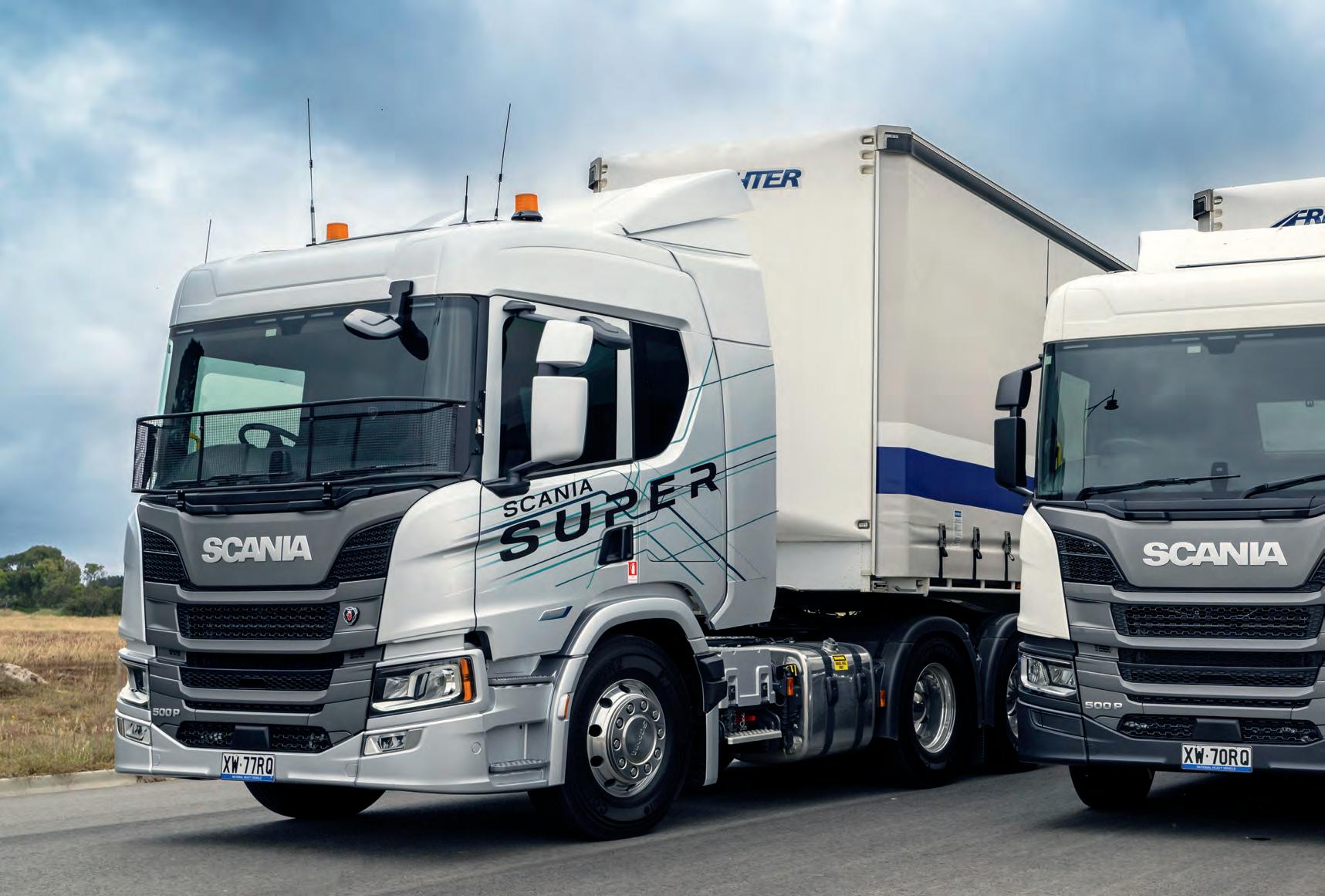


P-cab’s performance heading out of Melbourne towards Torquay. There are several rolling hills and a couple of step climbs, but the little P-cab just ate them up and never gave me any indications that we were under load nor strain. The conversation with Ben was effortless in the insulated cab and, if it wasn’t for my predilection for using the Scania retarder, you could almost feel you were taking a luxury car out for a cruise. The latest Opticruise automatic transmission is incredible with its foresight and efficiency. Pair that with the low torque range on these SUPER engines and the changes feel seamless. There is no dropping late and struggling to pull out of the doldrums. Every change seems
timed to land perfectly on that Scania torque range and just keep cruising.
The impressive gear selection was a lot more evident with the B-double where the truck was doing a bit more work. With the single behind and sitting just below 40T, the P-cab Scania felt like a champion weightlifter warming up with just the bar. It was going through the motions but never really challenged.
After a quick spot of lunch, I grabbed my gear and jumped in the other demo, this time with the B-double behind and sitting closer to 60t. This was what I was keen to test out. It didn’t take long either – the back roads out of Torquay
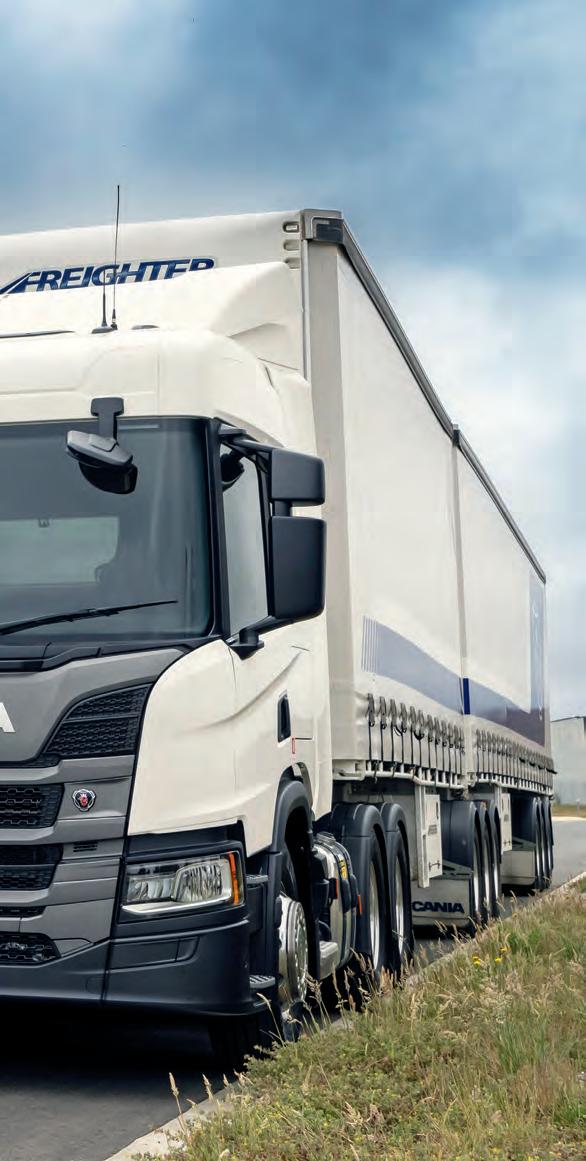
included a left-hand turn from a roundabout straight up a steep pinch and onwards to the M1. Rolling through the round-about, we hit the pinch with little to no momentum and you could feel the SUPER engine doing its work – I mean that literally as well.
The thing about the P-cabs is they do sit low and as such you have that engine mound between the seats. It still features incredible insulation so it’s not screaming or heating up like the old classic used to, but it does offer a little more feel to your drive. You can hear the hum of the six cylinder beside you and you can get a sense of the engine doing its job, more so when the truck has slowed and is climbing into the challenge. It was almost like you could feel all 2650Nm strapping on and pitching in to pull the 57t vehicle up the hill. The stillness and quietness of a Scania cab meant you could focus on appreciating the work going on beneath you.
It really is nice to feel a truck working – there was never any hint of struggle, just purpose. After that steep climb out of Torquay, the rest of the hills felt more like undulations than actual challenges. By the return, you almost felt guilty for how easy the run was.
There is a lot to love about the P-series and kudos needs to go to Scania as well. Obviously, the exhaust brake and retarder combination is still one of the leading lights on the Scania CV, and that hasn’t changed. You have the comfort that comes with years of building quality trucks that also hasn’t changed, and you also have the new safety additions that Scania keeps improving like the Blind Spot Monitoring system. On each of the front pillars is a decent sized light that glows yellow whenever a vehicle is spotted beside you. While this concept isn’t new, the Scania light placement is. It is perfectly placed for your eyes to catch it every time you are checking your mirrors
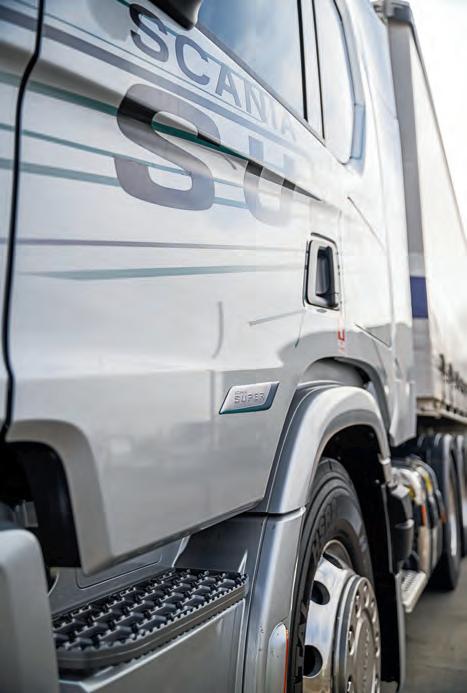
without ever deliberately looking for the light. Obviously, some wizard in engineering calculated the perfect positioning and nailed it.
As for the P-series progression into the 500 market and whether it has nailed its objective, I can definitely see them succeeding, as it really is the perfect jack of all trades. From a driver’s point of view, it is still the perfect round town rig, small and manoeuvrable enough to do the local and domestic jobs required of it, with great vision and access making it an easy truck to operate.
“You can have it in your fleet, predominantly doing single trailer or light B-double work, and if something happens and one of your big trucks go down, you can actually stick it under a heavier load and do a Tarcutta changeover.”

Now, with a big enough package underneath it, it has the means to step up and help the big boys out if you need to send it away for a couple of nights. There’s room for a driver to get some kip and it is comfortable enough that you are not going to be complaining after 14 hours behind the wheel.
The technology packed into the small P-series means it also ticks all the boxes from an operator’s point of view as well. Its light weight cab, with easy access and great visibility, means it’s a truck for everyone to drive. The new 13 litre SUPER engine comes with estimated fuel savings of eight per cent, a number that has been found to be easily exceeded by many customers. The safety features fitted to the P-cab, like the Advanced Driver Assistance Systems, the latest blind spot and vulnerable road user radar warning systems and industry-leading standard rollover protecting side curtain airbags fitted above each door, ensure the P-series are right up there for driver safety. Then you have the flexibility of design. I am not going to get into listing the hundreds of interior options – that’s too big to portray. The variety of build options available for a P-series include a 4x2, 6x2, 6x4, 8x2 and 8x4, as well as a 10x4 with lazy or steerable tag axles. Alongside a range of cabs from day cabs to sleepers, the P-series really is a jack of all trades and it now has the power to be the master of many as well.

Following a horrific tragedy on the Eyre Highway in April last year, the South Australian trucking community has been fighting for licensing changes that came through in November. Sean Mortell asked transport leaders for their thoughts on the change
As the Australian truck industry heads into another year, there are plenty of challenges rearing their head. From productivity, safety and fatigue issues, to law reforms, the industry has no shortage of qualms to raise with policy makers around the nation. In November, the topic of heavy vehicle licensing requirements once again came to the fore. It all started with a tragic accident.
On April 5 last year, a two-way truck crash along the Eyre Highway at Yalata claimed the lives of three people. One of them was Neville ‘Slim’ Mugridge, a well-known and beloved member of the local trucking industry. While the incident caused ripples across the sector, it also spurred on Slim’s wife Delphine to campaign to improve licensing requirements in South Australia.
These changes came to fruition in late November when the South Australian government announced massive changes to its heavy vehicle licensing scheme.
“I am very pleased to see the state government adopt these changes that should help save lives,” Delphine says.
“It is comforting to know that Neville hasn’t died in vain.”
Under the changes made by the SA government, from February onwards, new MC class permit requirements will be introduced while the state government will no longer recognise overseas heavy vehicle driving experience (except for New Zealand) when drivers wish to obtain a MC licence in the state.
When it comes to the MC class permit requirements, the SA government will establish a new MC Licence Program that will see drivers take part in a “structured learning program” with their employer’s support. Once a driver receives their employer’s support to apply for a MC licence learner’s permit, they will then have to complete a competency-based training course through an approved Registered Training Organisation before logging a minimum number of training hours and learning components under the guidance of a qualified supervising driver.
For HR licence holders, a minimum of 60 logged hours of supervised driving and learning is required, while HC licence holders only need 50 hours to graduate to a practical driving assessment in a MC
vehicle to receive the licence. The second change means the SA government no longer recognises any overseas heavy vehicle driving experience when it comes to obtaining a MC licence except for New Zealand drivers due to their similar training and driving conditions.
For drivers looking to gain a MC licence in South Australia, they’ll have to hold a HR or HC licence for at least 12 months or complete the newly established MC Licence Program.
South Australian Road Transport Association (SARTA) executive officer Steve Shearer was at the announcement of the licensing changes and is a firm believer the changes being made are the right ones for the state’s trucking industry.
“As we said on April 5, the loss of three truck drivers in the head-on truck-truck crash west of Yalata was another tragic loss of life and we extend our sincere condolences to the families of those drivers and their friends and associates,” he says.
“These important changes might give them some solace that the deaths of their family members have provided some positive reform.
“SA transport minister Tom Koutsantonis and the
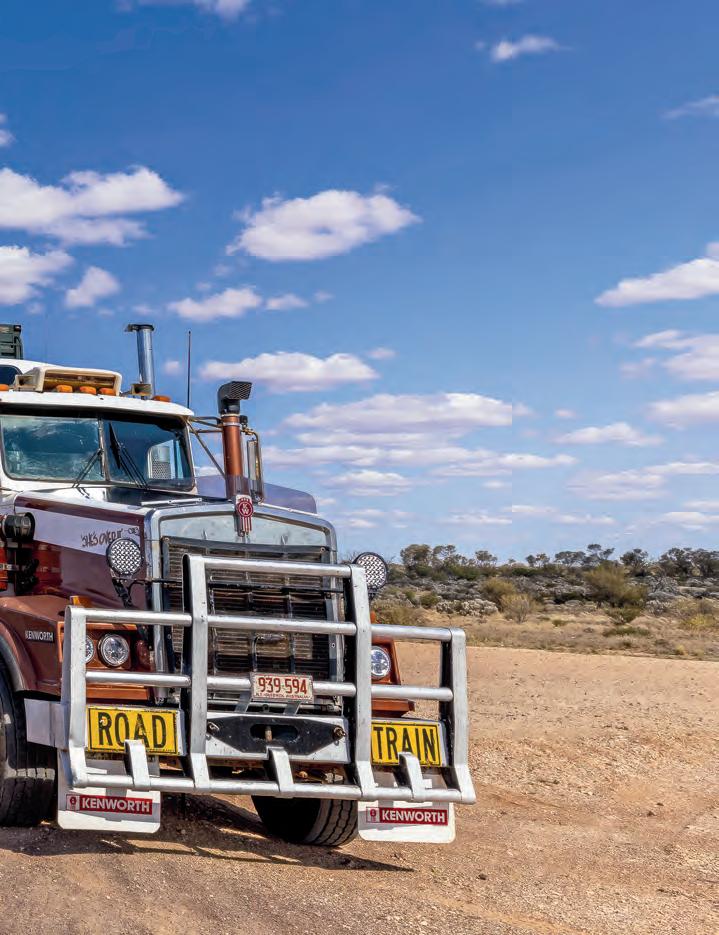

SA government have stepped forward and decided not to wait any longer for a ‘national solution’ and that SA would be the first state to take positive and effective action.”
Shearer is hopeful the initiatives will be adopted interstate, with SARTA set to begin working nationally to get the changes made in other jurisdictions. While the current time periods outlined for graduating to an MC licence have been made clear, Shearer says these are only minimum periods – some drivers may need more than 100 hours of training before they reach the competency required to gain the licence.
“SARTA has pushed for changes to the licensing of HV drivers from overseas for some 15 years, but we were always met with arguments from officials that nothing can be done because of the 1939 Geneva Convention on Land Transport, under the control of the Department for Foreign Affairs, which allows overseas drivers to use their overseas licences here,” Shearer says.
“As usual, SARTA did not give up and we kept pushing the issue at every opportunity within SA and nationally. In recent years, the changing dynamic on the roads has increased the need and the pressure for change.”
Shearer says he knows the authorities understand the current extended downtime of the rail to Perth due to flood damage, meaning there are many more trucks on the Eyre Highway and that most of the extra rigs and drivers are from interstate and are unfamiliar with the route.
“The exorbitant rates being thrown around by rail-freight operators and customers who are desperate to get their freight to Perth doesn’t help,” Shearer says.
“We will all have to await the findings of the crash investigation, but if anything good is to come out of this triple fatality, it must be the widespread and rock-solid reinforcement of the absolute need for everyone within the trucking business, from the drivers right back to the owners and MDs and boards of large corporates, to ensure they have genuine and effective safety measures, systems and training in place to ensure safety.
“That must include measures to remove all pressure on drivers, logistics managers and others and, if need be, replace any who refuse to operate safely.
“We can’t change the geography or shorten the distance between Adelaide and Perth, or anywhere else, so there is absolutely no point in bending it like Beckham. The journey is what it is and if every driver and operator did what the vast majority do and operated completely safely and responsibly, sharing the road safely, avoiding unnecessary overtaking or speeding and accepting a responsibility of care for all other road users, then we just might see heavy vehicle crashes become a rarity.”
However, Shearer’s wish to spread these licensing changes wider to other jurisdictions is meeting some opposition in the industry. For National Road Transport Association (NatRoad) CEO Warren Clark, he believes the changes have made licensing more complicated in the state.

“We don’t see it as an advancement at all – training must be competency based, not time based,” Clark told OwnerDriver.
“The changes have missed this point – because it’s now more complicated to get a MC licence in South Australia, people will just go over the border. There’s no mention of training aptitude, awareness and competency, which are key components of a lowrisk driver.”
Clark says time based requirements don’t provide this same safety focus in drivers who receive their MC licence, as drivers can still get their HC licence and deliver for 12 months before receiving the higher licence.
“We’ve constantly argued that time is not the issue when it comes to licensing,” Clark says.
“People shouldn’t be able to drive a heavy vehicle in this country without a training system that helps people become competent and safe while holding the right attitude when on the roads.
“I also disagree with the inclusion of New Zealand driving experience towards a MC licence – New Zealand doesn’t have the same conditions as South Australia. If you come from another country, you need to have an Australian licence, and to get that you should be trained and rewarded with a licence based on competency.”
At the Queensland Trucking Association (QTA), CEO Gary Mahon has echoed Clark’s calls that licensing should be based on competency. He has a simple message – if you’re deemed good enough, then you’re ready.
“We need to look at the appropriate assessment procedures and licensing arrangements,” he told OwnerDriver. “I’m not overly focused on time served, I’m not sure it brings the right value. I instead would rather reward skill and capability.”
Moving forward, Clark’s goal is to create a national framework for heavy vehicle licensing that means all jurisdictions have the same competency based requirements in place for drivers looking to receive a MC licence. It is hoped that under this system, tragedies such as what occurred on April 5, 2024 will become a rarity due to highly trained, low risk drivers receiving their MC licenses and hitting the roads.
“Licensing is currently a state-based system – I think there needs to be a change where states work together to make licensing requirements the same,” Clark says.
“It all comes back to making sure they’re trained. Time holding a licence means nothing – we need a recognised standard training program across the country. The licence shouldn’t give you the qualification, the qualification should give you the licence.”
“The changes have missed this point –because it’s now more complicated to get a MC licence in South Australia, people will just go over the border.”
Above, L to R: The debate continues as to how to determine who has the right sets of skills to earn a multi-combination truck licence in Australia; The vision for licensing across the country is still unclear
Below: There’s no changing the distance between Australia’s major distribution points, so making sure the trips are taken with the least amount of pressure and with the safest driving possible is key
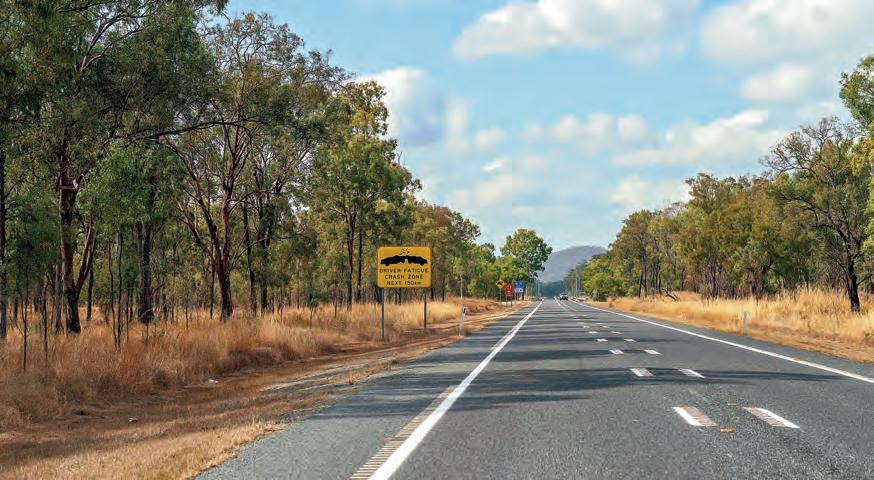

The
TWU
has plenty
on
its
plate to
start 2025, with a changing industry meaning there’s plenty at stake for owner drivers
In 2025, the road transport industry in Australia stands at a transformative crossroads. The new transport legislation passed by the federal government has given us the power to fundamentally shift towards greater fairness and safety within the industry. This year we will start to see the impact of these reforms.
We’re also at a crossroads because this industry is changing dramatically with emerging technologies and the shift to net zero – we must make sure that happens the right way. Engaging with participants across the supply chain will be crucial to making sure these changes are not only effective but also long-term and sustainable.
At the end of 2024 I joined Industry Skills Australia’s Supply Chain Summit. There was a room full of people ready and willing to tackle the challenges we have in front of us, from leaders across the industry from government to transport businesses and industry clients. What’s crystal clear is that transport clients have
to play their part. They must pay their fair share. It is essential that these clients now begin allocating the necessary resources to support these changes and address the fragmented nature of our industry urgently. Fair pay and good working conditions must remain bare-minimum essential factors for helping us tackle future challenges effectively.
The challenges in front of us are immense. The transition to net zero has the potential to pile more pressure on drivers and transport operators already on the brink. When owner drivers already in many cases can’t afford to maintain their vehicles, it is out of the question for the economic burden to fall on them. Transport remains the deadliest industry in Australia. In the last few months of 2024 alone, at least 13 people lost their lives in truckrelated accidents. The lesson from the gig economy is that new technologies which promise flexibility and innovation are often a smokescreen for exploitation.
Economic challenges associated with transitioning to net-zero are also emerging,
is the national secretary of the Transport Workers Union of Australia. Contact Michael at: NSW Transport Workers Union, Transport House, 188-390 Sussex Street, Sydney, NSW 2000. twu@twu.com.au
and we must be clear that the burden of this cannot fall on drivers or operators. The responsibility for driving this transition will have to lie with the top of the supply chains – our large clients. The transport reform laws give us the opportunity to ensure clients pay.
Transport is also one of the industries seeing the most insolvencies, with a total of 495 in the 2023-2024 financial year – a huge increase of 43 per cent from the year before. But having transport reform laws in place and seeing those supply chain leaders in a room ready to work together to tackle these challenges, that is light years ahead of where we were only a few years ago.
In 2025 we are going to be leaving no stone unturned to safeguard the lives of transport workers and protect the livelihoods of transport operators. We are on the path to create a level playing field through these reforms that benefit all industry players – workers, businesses and consumers alike.
Reflecting on the work done by the TWU and the rest of the industry in 2024, we have positioned ourselves strongly for this year. We have also laid the groundwork for the years to come. Two of our three applications filed with the Fair Work Commission have focused on setting minimum standards in food delivery and last-mile parcel services to ensure fairer wages and better working conditions. The third application calls for stronger protections for operators right across the supply chain to fairer payment terms. What’s especially exciting and promising for 2025 is that the direct outcomes of these applications will soon be seen, with the Road Transport Advisory Group process having kicked off. Soon the industry will be having its say on these applications.
“What’s especially exciting and promising for 2025 is that the direct outcomes of these applications will soon be seen, with the Road Transport Advisory Group process having kicked off. Soon the industry will be having its say on these applications.”

In February, another part of the laws will also kick in, and for the first time, provide legal protection against unfair contract chain terminations by large corporate clients. This will offer the beginnings of much-needed stability that the industry requires. Additionally, the push for gig economy protections will help address issues at the bottom of the supply chain and mitigate the threats they pose to decent contractors and operators in the road industry. While we work to prevent larger clients from cutting costs unfairly and imposing harsh terms on smaller contractors, these protections will not only safeguard last-mile delivery workers from exploitative practices, but also help protect transport operators from the competitive threat posed by gig players thriving on lower labour costs.
This dual approach, targeting both the top and bottom of the supply chain, is a crucial step toward restoring balance and stability to the industry. We know that reform is a marathon, not a sprint, and 2025 represents a crucial turning point for us all where we shift from ambition to real action.
Shaped by all the industry, these reforms allow a holistic view of complex contract chains and find a balance that works for everyone. Through active participation and collaboration, we can rebuild transport into an industry that prioritises fairness, safety and equity while embracing the innovation and sustainability needed to meet future challenges.
This is the year to do it.
SEND YOUR LETTERS TO:
Letters to the Editor need to be typed or clearly handwritten and be no more than 500 words. Letters should include name, title (e.g. owner-driver, manager) and city for publication, unless otherwise requested. Letters may be edited for clarity or space.
Sean.Mortell@primecreative.com.au or 379 Docklands Drive, Docklands, VIC 3008
We prefer letters by e-mail, but handwritten letters will be accorded the same opportunity to be published.
The 36th Castlemaine Rotary Truck Show was coming up and I had prepared my little AC Mack for the journey from my home near Daylesford to display her on the main oval. But life got in the way with a sudden call from the excavator contractor who had pencilled in that weekend to bring his 30-tonne Kato here for some further works on our troublesome dam.
On the Sunday morning of the Show, I said to my wife, Jan, how about we wizz up to the truck show after lunch – at least I’ll see some of it!
We hit the highway and arrived to find all the trucks still on display, which was terrific, but the day’s activities were winding down, though the C and W bands still had enthusiasts dancing up the front of the big family marquee where folks were having a late lunch. Straight away, we both commented on the huge number of trucks on display, on the centre oval and around the perimeter track up to three lines deep and more! The trade stands were doing a roaring trade and I headed down to the Shammick’s Transport tent where free logo merchandise was there for the taking and I managed to grab another of their terrific quality black t shirts.
You could appreciate the assistance which the
main sponsors had brought to the management of the event and the amazing task that was required to monitor the hundreds of trucks arriving and being specially parked, either on the oval or around the outer perimeter roadway. On both sides of the perimeter track it was awesome to appreciate the perfection parking as numbers of trucks such as with Patlin’s Transport had their Kenworths lined up with millimetre distancing!
Since I attend a great number of motoring events as a motoring writer/photographer, one of the priorities I look for is the provision of public services on the day and it is here that Castlemaine Rotary is superb.
This year the club did things differently, providing showers for the truck drivers who had arrived on Saturday in the form of a long line of portable showers connected to water and heated by instantaneous gas water appliances. I’m told many of the drivers escaped to that site for a cold shower away from the heatwave conditions of Saturday!
Kerry Anderson is the Rotary Convenor of the truck show and told me that the numbers were approximately 260 trucks registered for the event and about another 50 which arrived on the Sunday morning. Castlemaine has a very high truck


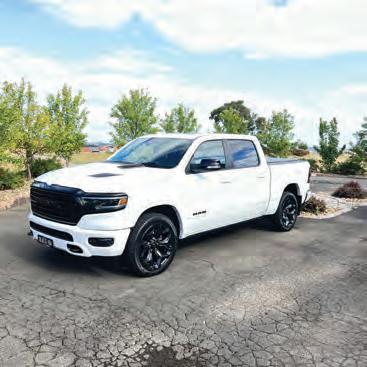


ownership and each year the local community get behind their local truckers to watch the grand parade first thing on the Sunday as a cavalcade of shiny trucks assembles near the Post Office and winds its way the few kilometres along the Midland Highway to the Campbell’s Creek Recreation Reserve where they join the truck show for the day. It’s an impressive sight with lots of airhorn toots to sightseers and many enthusiasts by the side of the road, videoing the cavalcade as they pass.
I’m glad I made the effort to get to this year’s event, even though it was a quick visit, but there’s always next year, the third weekend of November and I’ll write it on the 2025 wall calendar, right now!
Stefan Nechwatal, Victoria








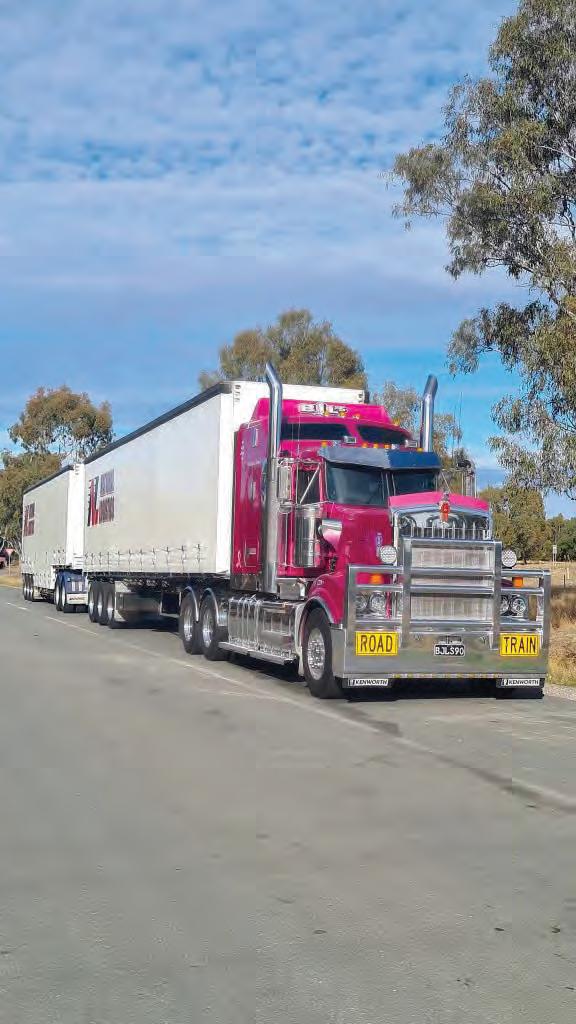




With plenty on the cards for this year, Sean Mortell chatted to members of the Australian truck industry to hear what they expect from another productive year










All over Australia, the trucking industry is calling for change. Whether it be for licensing procedures, fatigue laws or Heavy Vehicle National Law (HVNL) amendments, there’s a lot to be unpacked, discussed and decided upon in 2025.
To pick through these various highlights of 2024 and the updates on the way this year, some of Australia’s leading transport associations and bodies have their say on what they expect from the industry in the upcoming year.

For the national regulator, 2024 saw it bring up a 10-year milestone since first becoming the heavy vehicle regulator for Australia. Guided by its ‘inform, educate and enforce’ approach, the NHVR achieved another goal in April 2024 when it transitioned its heavy vehicle regulatory services in Queensland, completing its journey across most of Australia. Heading into 2025, the NHVR has recognised several continuing challenges that the heavy vehicle industry will face over the next 12 months.


“These include balancing a growing freight task while ensuring fatigue is effectively managed, working to reduce the number of deaths on Australia’s roads, addressing environmental and health impacts, shifting from asset preservation to optimisation and navigating unplanned disruptions to the supply chain and driver shortages,”

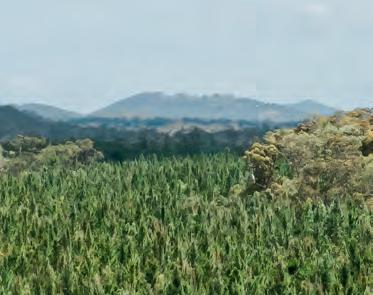










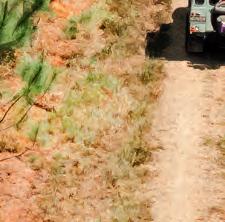
a NHVR spokesperson told OwnerDriver.
“To address these challenges, the NHVR’s upcoming Heavy Vehicle Productivity Plan outlines a response to these issues, including actions such as easing the burden of permits and supporting road managers to grow their networks and offering the technology, tools, data and information customers need to make faster and better-informed decisions.
“The NHVR will also seek to partner with its stakeholders to ensure safe and environmentally friendly outcomes, encourage newer, cleaner and safer vehicles on the road, and improve awareness and understanding of heavy vehicles.”

The heavy vehicle driver shortage is another key issue on the NHVR’s radar in 2025, with the regulator calling for a “collaborative and layered approach” to work with industry and governments in diversifying workforces and enhancing access to training and incentives.
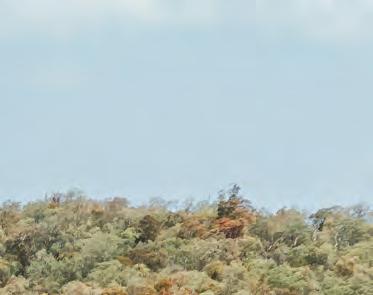
In 2025, the NHVR will also push for national standardisation to support consistency and safety across the industry.
refined to include more accurate road and map data, as well as an improved Route Planner to assist industry in planning efficient and safe journeys across Australia’s road network.
The Portal will also evolve to contain more information and tools for operators (such as compliance data) to expand how industry and operators manage their fleet.
“The NHVR will also focus on delivering its safety campaigns to influence road users’ behaviour. This includes continuing its campaigns, Don’t #uck With A Truck and We

“The NHVR will improve its digital offerings to drive a safer industry, with a focus on enhancing the NHVR Portal,” the spokesperson says.
“In 2025, the National Network Map will be
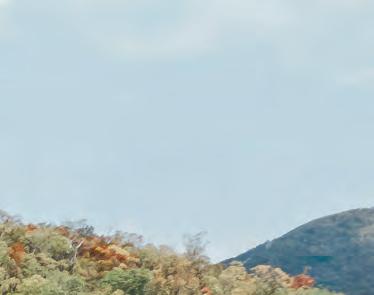
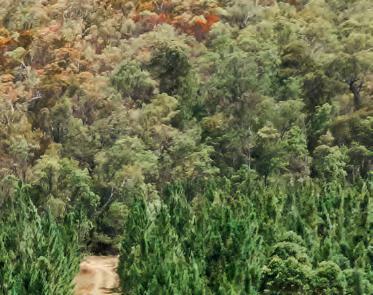
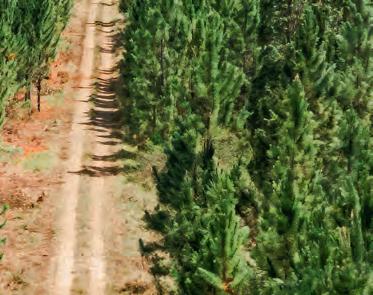
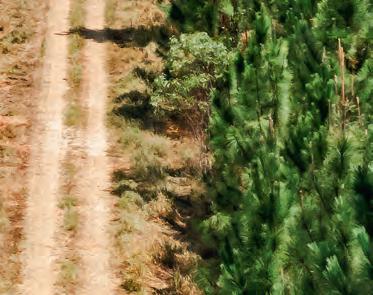
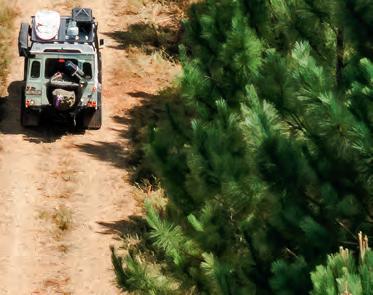

All Need Space. The next phase of the We All Need Space campaign will focus on safety messaging targeted to heavy vehicle drivers and safer driving around oversize and overmass movements in Victoria.”
To improve safety, the NHVR says the Chain of Responsibility (CoR) is a crucial theme for the industry to adhere to. The regulator says it will continue working with industry to ensure parties in the CoR are not placing undue pressure or demands on drivers that may encourage or promote breaching speed or fatigue regulations.

“In 2025, the National Network Map will be refined to include more accurate road and map data, as well as an improved Route Planner to assist industry in planning efficient and safe journeys across Australia’s road network.”
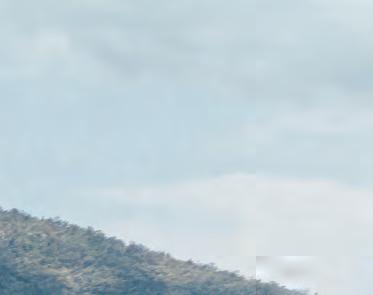
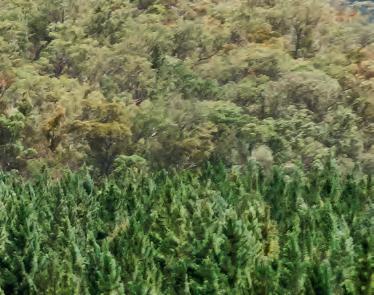

















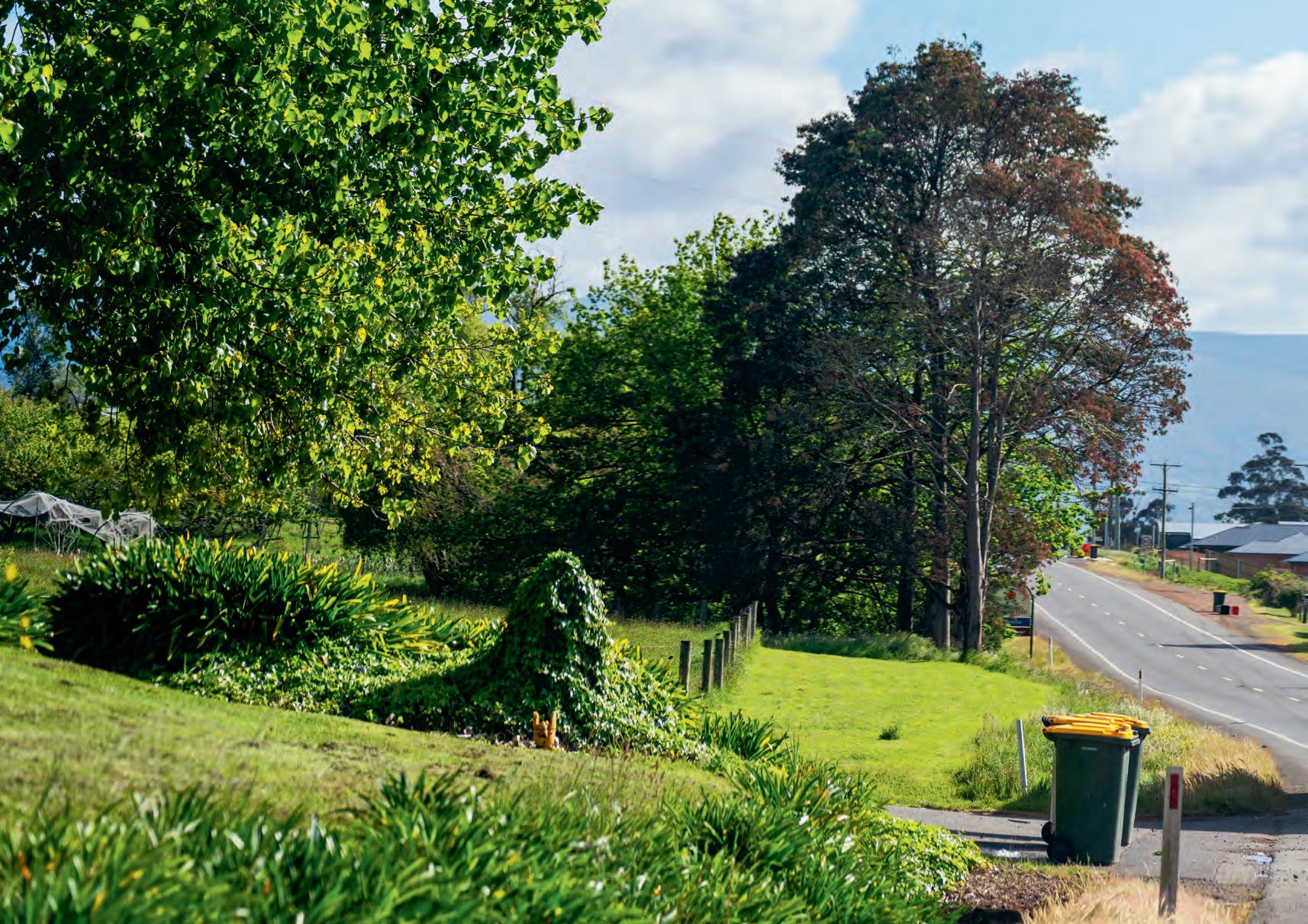
If it could change one thing in 2025, the NHVR would prioritise positive progress on the Heavy Vehicle National Law (HVNL) review currently being completed by the National Transport Commission (NTC), including by implementing reforms to the PBS scheme.
“During 2024, the NHVR released its ‘Removing Roadblocks to Reform’ paper, calling for reform of the Performance Based Standards (PBS) scheme,” the spokesperson says.
“Right now, in Australia, the safest, most productive and lower emission heavy vehicles face more barriers to get on the road than a standard ‘prescriptive’ heavy vehicle. This is resulting in lost opportunities to reduce emission, avoid fatalities and increase productivity.
“Through the ‘Removing Roadblocks to Reform’ paper, the NHVR is calling for amendments to the HVNL to allow for mature and proven PBS vehicles to transition to the prescriptive vehicle fleet, and to give the NHVR the ability to adjust standards in response to the latest research and technology. The NHVR will continue to engage with industry and government to seek commitment to enact positive change.”
Maintaining its presence as the largest road transport association in Australia with a national membership of more than 2,300 trucking businesses, NatRoad’s 2024 saw it involved in international partnerships through its global driver shortage survey participation, and also launch several key initiatives.
This included its ‘Get Fleet Fit’ initiative that gave operators tools to improve fuel efficiency and productivity while reducing emissions, its online truckie first aid cause that trained more than 1,000 truck drivers and its ongoing
preparation of members for industrial relations reform, specifically relating to the Closing Loopholes laws.
Beginning 2025, NatRoad has a bleak view of what’s ahead for the industry.
“The outlook for the local trucking industry is stark,” NatRoad CEO Warren Clark told OwnerDriver.
“So many trucking businesses are operating on wafer-thin margins, and there’s rising costs, escalating interest rates, chronic staff shortages and increasing wages. There’s also been no productivity gain in the past few years.
“Much more must be done to ensure the longterm viability of trucking businesses and the sustainability of the road transport industry.”
In the year ahead, NatRoad wants to see nationally consistent and practical training for drivers alongside licensing changes to ensure inexperienced drivers are safe to drive in Australia. Alongside this, it’s looking to help operators become more viable through enforceable contract conditions such as 30-day payment terms.
“The cost of doing business is also a serious factor preventing trucking businesses from thriving,” Clark says.
“Oppressive tolls and access permits costs need to be reduced and then capped at reasonable levels. In 2024, we called for the elimination of 90 per cent of heavy vehicle access permits by 2028.
“We were pleased to see the NSW government start to take steps to reform the toll network, in line with what we have been calling for, for over six years now.”
When it comes to immediate and significant changes that can be made to improve safety in the industry, Clark says a nationally recognised training system that is consistent across all jurisdictions would do wonders. He says
licensing should require training that focuses on skills and practical outcomes as opposed to tenure, with this model also needing to be applied to overseas drivers.
Clark is putting the onus on governments to enact these changes and, most importantly, listen to the industry.
“We would like to see governments make changes to improve safety and efficiency, committing to results rather than business as usual,” Clark says.
“Importantly, we need a nationally recognised training program as well as lower fines, fewer permits and efficiency incentives, and the cutting of red tape to allow operators to get the job done.
“At the end of the day, truck drivers just want to drive and then get home safely.”
Western Roads Federation (WRF)
Out in Western Australia, the WRF had a stellar 2024, with the crowning success being the ongoing growth of its WA Heavy Vehicle Driver Training program. With the WA government extending funding for a further four years for the joint TAFE and industry program, the program received a special mention in the WA Treasurer’s Budget speech in 2024.
“Now, over 750 are trained and employed within the industry, 35 per cent of which are women,” WRF CEO Cam Dumesny told OwnerDriver
“In 2025, we think the biggest issue is the ongoing shortage of skilled labour despite there being an increasing downward pressure of rates being reported. It defies any economic sense.”
WRF, like most of its counterparts, is on the lookout for ways to improve the industry in 2025. One key way Dumesny wants to lift standards in the sector is to encourage the Fair Work Commission Road Transport Advisory Group to
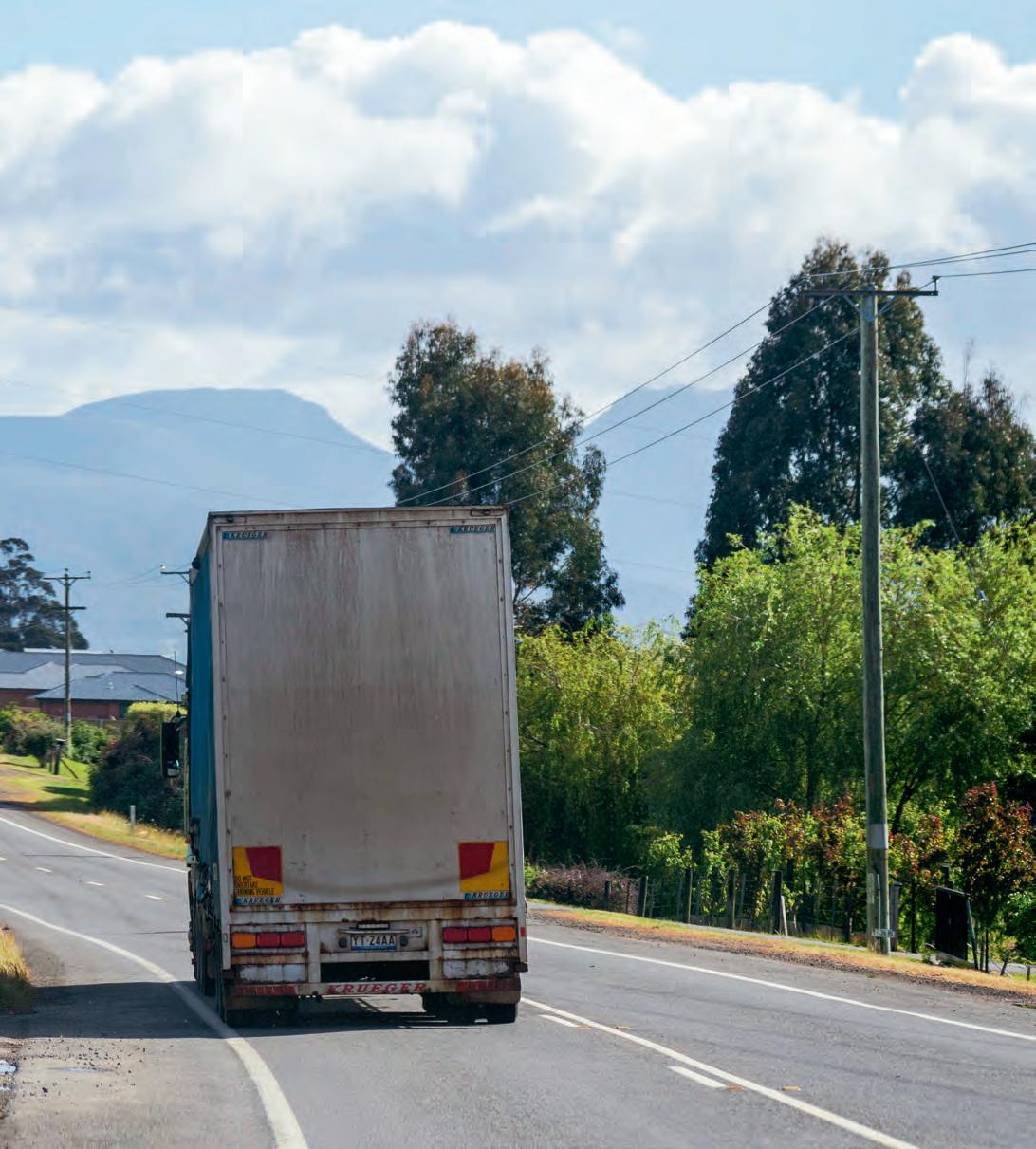
In Queensland, Mahon says the impact of the state’s latest apprenticeship ventures is clear to see. Getting heavy vehicle driving apprenticeship funding to put the vocation on the same pedestal as other apprenticeship courses such as for plumbers, electricians or mechanics means the employers and employees now have to carry less of the cost.
“We’re not asking for more, just want employers to be treated the same and given the right support to train people to pursue a career in freight,” he says.
Outside of this, Mahon says productivity is an “enormous” issue for Australia, saying productivity growth has been negligible since 2007. Mahon wants change to return to the glory days of increasing productivity in the road freight sector that was seen in the lead-up to the mid2000s.
“We need a much more progressive outlook to change the composition of the fleet along with other changes in the HVNL to give us that productivity bounce,” he says.
“We need to get back to the ‘90s – the last decade we had where there was elevated, measurable and celebrated productivity growth across the industry.
“It waned down to 2007 and has barely had a pulse in it since then. A big way of seeing this productivity boost is by also getting the HVNL review back on track.”
When looking at the HVNL review, Mahon sees a bleak, drawn-out process that won’t allow for genuine reform in the industry for at least another decade. When it does happen, he predicts the reform will only be “marginal” – something he doesn’t think is good enough for the local sector.
“It’s time to cut our losses with this and start again, dividing it into different categories to focus on areas such as fatigue and access in more detail,” he says.
“Right now, in Australia, the safest, most productive and lower emission heavy vehicles face more barriers to get on the road than a standard ‘prescriptive’ heavy vehicle. This is resulting in lost opportunities to reduce emission, avoid fatalities and increase productivity.”
begin delivering on minimum standards.
With other areas to work on including lifting driver training standards and focusing on ways the industry can help the national economy, Dumesny has plenty on his hitlist for 2025.
“I want to see driver training standards mandated so that there’s a stop to the tick’n’flick truck driver licensing model we’re currently seeing,” he says.
“We recognise that the transport and logistics industry enables the Australian economy, so our industry problems are the economy’s problems. We hope people to listen to us because of this.”
Queensland Trucking Association (QTA) In Queensland, some new highlights emerged in 2024 for QTA CEO Gary Mahon and the state’s trucking industry. Outside of legislation amendments, the renewed support for the Inland Freight Route proved to be a major win for the Queensland body.
“A clear highlight was federal transport minister Catherine King initiating support for the Inland Freight Route,” Mahon told OwnerDriver.
“With one billion dollars invested and the
project brought forward, we are now seeing work underway when it comes to repairing bridges and widening and strengthening parts of the road.
“It will become the preferred heavy duty route for north-south travel in Queensland and will relieve the Bruce Highway, giving us a much more efficient route that is all-weather resilient and has many benefits.”
Alongside this, the Closing the Loopholes legislation was recognised by Mahon as “a long time in the making”, giving the industry the chance to balance the industry and provide opportunities for appropriate standards.
When it comes to industry issues this year, Mahon says opening up the employment channel into the industry via training and funding to support the apprenticeship model is vitally important.
“I want to see channels opened for international migration in our industry,” he says.
“Road freight has not quite got its space in the front row to date, so to speak. We need to get on the front row of opportunity when it comes to international migration – we need funding support.”
“We can then introduce small expert groups that bring forward reform packages that actually make a measurable and real difference. This can all be done within a couple of years and can make meaningful change.”
Moving into 2025, Mahon wants the rest of Australia to follow Queensland’s lead on the apprenticeship model the state has pushed heavily for. With heavy vehicle driving encompassing so many skills, such as understanding vehicle dynamics, fatigue laws and the chain of responsibility, Mahon wants the role to be championed as an attractive career option for younger generations. Alongside this ongoing focus, Mahon is also looking towards the ongoing development of reform to make the industry fairer and safer.
“We need to get some orders out of the Fair Work process this year so that we don’t lose the chance to achieve valuable reform,” he says.
“I’d love for the industry to take a more commercial approach with the HVNL reform this year and get it back on track so that it can be delivered over the next few years and see the change we deserve.”

Before
he farewells the industry this month, Sal Petroccitto discusses
what’s on the regulator’s agenda for the transport industry in 2025 and beyond
As the holiday season wraps up and we look back on the year that was, it’s important that we take the time to reflect on our collective achievements. 2024 was a particularly special year for the National Heavy Vehicle Regulator (NHVR), marking 10 years since we commenced our journey to become a single national regulator. I am proud of all we have achieved in the past year and would like to touch on a few significant milestones that I know will have long-lasting benefits for our industry.
Our organisation has matured alongside the nation’s heavy vehicle industry, and our evolution to become Australia’s single national regulator received a boost with Queensland transitioning in April 2024. This was a significant accomplishment for the NHVR and the heavy vehicle industry, enabling us to deliver borderless and consistent regulation and enforcement in participating jurisdictions across the country, delivering the same compliance experience for industry, regardless of where we operate.
Improving safety on Australia’s roads remains a priority and last year we conducted 67 safety operations across our participating jurisdictions to help drivers understand their Heavy Vehicle National Law obligations. For example, in October the NHVR conducted a week-long operation across Queensland with a focus on heavy vehicles used to transport livestock. The operation helped boost the livestock industry’s understanding of its safety obligations, with close to 500 heavy vehicle units inspected and more than 50 education sessions held. NHVR Safety and Compliance Officers (SCOs) focused their compliance efforts on major travel routes, feedlots and saleyards.
In July we launched the National Roadworthiness Survey (NRS) to improve the mechanical condition of Australia’s heavy vehicle fleet. SCOs, police and other authorised officers conducted more than 9,000 visual and mechanical inspections to identify existing and emerging risk trends. The results of the NRS will be compared to previous surveys to determine where we are making improvements in vehicle safety and where we can focus more attention.
We also delivered new iterations of our Don’t #uck With A Truck and We All Need Space road safety campaigns. The new
phase of We All Need Space was launched in April, focused on simple tips motorists should know when driving around buses.
In October, we launched the third phase of our Don’t #uck With A Truck campaign, where we worked alongside young drivers to co-design the new phase of the campaign: Being Dead is Boring. We leaned into social media trends to shake up the traditional road safety narrative to better resonate with young audiences.
I am proud of the NHVR’s customer-focused approach to service delivery continued to be at the forefront of all our work last year, providing practical benefits for all road users. In our third straight win, the NHVR was awarded the ‘Service Champion’ award for Customer Service Organisation of the Year – Government/Not for Profit. This highlighted our service excellence and commitment to our customers.
Our contact centre member Brad Mells was also awarded the Service Champion award for Customer Service Leader of the Year – recognising the superior customer service that Brad and the team provide to our callers every day.
Finally, it was truly humbling to be the Winner of the Customer Service Executive of the Year. This award reflects the efforts of everyone at the NHVR in our commitment to putting our customers first in everything we do.
In 2024, we continued to improve our data
and technology offerings, with a particular focus on the NHVR Portal. We’re committed to providing all regulatory services through the Portal, and it’s constantly evolving to deliver a more seamless experience for customers. The National Network Map also continued to evolve with refined data and features, creating a single authoritative location for industry to plan journeys across state and territory borders for their entire fleet. Further enhancements to the National Network Map are planned for the coming year, including an integrated route planner, to improve and simplify how the industry accesses Australia’s road network. The NHVR continued to invest in cutting-edge technologies last year, such as Automatic Number Plate Recognition (ANPR) cameras. These devices are used by SCOs to detect and interrupt highrisk behaviour and unsafe practices by heavy vehicles and increase efficiency for compliant drivers. The cameras have been deployed in South Australia, Tasmania, Victoria and Queensland, and will soon be rolled out in New South Wales.
Through our Heavy Vehicle Safety Initiative (HVSI) program, we were able to continue supporting implementable, value-for-money projects that deliver tangible improvements to heavy vehicle safety. With the support of the federal government, $3.9 million was invested in 16 safety projects through Round 9 of the program.
Submissions for Round 10 of the program opened in November, and I’d encourage any group or individual involved in Australia’s heavy vehicle industry or the wider supply chain that has a project or campaign that will increase compliance and promote safety, to apply.
CEO FAREWELL
As you know, January marks my final month with the NHVR. My journey with you all has been incredibly rewarding, and the best part of my job was getting to meet and learn about the many remarkable and passionate people across our country who work so hard in one of the toughest industries. I look forward to seeing the NHVR continue making an impact into the future and ensure safer heavy vehicle movements across Australia.
I wish you all a Merry Christmas and a Happy New Year.
Stay safe.
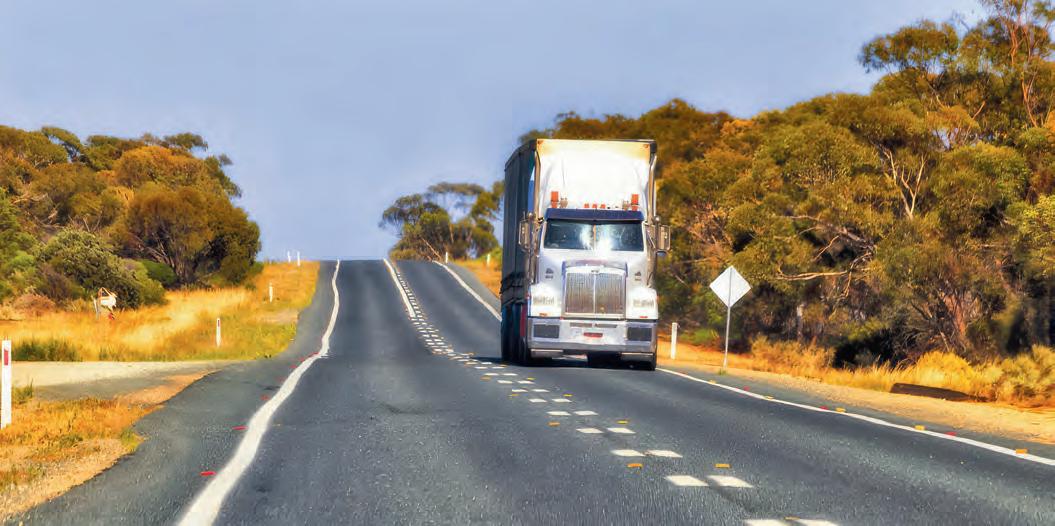
Robert Bell and the Highway Advocates address the challenges in Australia’s transport industry, including providing a uniform training program for overseas drivers and operators
Greetings from the vibrant chaos of downtown Delhi, where resilience thrives amid the hustle. Back home, South Australia’s Road Safety Action Plan 2023–2025 has sparked intense debate. While broadly welcomed, the decision to stop recognising overseas heavy vehicle licenses – except for New Zealand – has been criticised for perceived inequities. Imagine if every overseas driver were a Jake ‘The Muss’ Heke clone? It’s not the skill or dedication of the drivers that’s in question, but the fairness of the policy.
The plan, introduced following the tragic Yalata triple fatality in April 2024, requires overseas drivers (except New Zealanders) to undergo additional training and assessments to obtain an MC license. The goal is to enhance safety and training standards, but the implementation raises critical concerns, such as the idea of selective recognition, where Australia’s preferential treatment of licenses from nations like the UK, despite the lack of reciprocal arrangements, creates an imbalance. For example, despite being an economic powerhouse ranked fifth in GDP globally, India is sidelined despite its robust workforce contributions. It also brings to light patchwork implementation, as this plan applies to South Australian residents but not interstate drivers operating in South Australia. This loophole undermines the uniformity and effectiveness of safety initiatives.
It’s time to get real about this issue –the federal government must step in to create a truly national framework for heavy vehicle regulation. By removing state-level inconsistencies, we can establish a system rooted in fairness, equity and uniformity. It’s about the safety, livelihoods and economic stability of a nation that relies on its transport sector every single day.
Beyond the policy lies the human narrative. The Yalata crash claimed three lives, including Yadwinder Singh Bhatti, whose widow’s dignified grief underscores the broader consequences of these systemic failings. The investigation into the accident is still ongoing and no single cause has yet been identified. Such stories highlight the urgency of creating policies that both enhance safety and support the industry’s diverse workforce.
India’s burgeoning population, now the largest globally, continues to fuel migration. Nearly a million Indianborn people live in Australia, many working in the transport sector, where their contributions are indispensable. With median annual earnings in India hovering around $6,000 AUD, migration offers a pathway for many to improve their livelihoods, while these drivers can help fill critical workforce gaps, particularly in sectors grappling with labour shortages.
Overseas drivers and operators from countries such as India typically arrive via student Visas (Subclass 500) and are often exploited as they face conflicting demands of full-time work and study, or skill stream Visas that bring experienced professionals into the fold, many establishing logistics companies that employ overseas drivers.
Some might wonder how inexperienced drivers are landing jobs driving MC-class heavy vehicles when many can remember the frustration of being turned down because they didn’t have enough relevant experience.
‘The insurance company says no’ was a familiar refrain, but not so in recent times.
Two of the biggest players in the


ancillary side of the industry are NTI Insurance and Seeing Machines. NTI’s partnership with Seeing Machines boasts benefits such as removing all driver experience requirements for vehicles equipped with Seeing Machines, as long as the NTI provides insurance, reducing excess for accidents involving vehicles fitted with the technology and, in the event of a total loss, a settlement at market value plus 20 per cent for units with the machines installed. Also, in accidents, destroyed Seeing Machines are replaced.
The NTI also promises premium adjustments that reflect potential reductions in fatigue claims and waived Guardian 24/7 service fees for the first month of any new installations. The Guardian service fee is waived for individual data feeds from Seeing Machines to NTI. If we examine the Seeing Machines Data and Privacy Policy, we will find that this data cannot be shared unless legislation requires it so, yet, nonetheless, it gets shared with NTI. Australia’s transport legislation, particularly the Heavy Vehicle National Law (HVNL), poses significant barriers, such as legal complexity (even judges require guides to interpret HVNL provisions, leaving drivers – especially migrants – with little chance of compliance without support) and a punitive environment. Drivers face severe penalties for minor infractions, such as logbook errors, often resulting from confusion rather than negligence. When it comes to recommending change, legal language should be simplified to ensure accessibility for all, with translated and culturally adapted guides included, while mandatory hands-on training programs for overseas drivers should occur to bridge knowledge gaps and reinforce safety practices. On the support side, helplines, mentoring and digital tools should all be established to aid compliance in realtime, while uniform licensing standards should be provided to eliminate jurisdictional inconsistencies and improved fairness.

Since 2021, Highway Advocates (Australia) and its consultancy arm, HACS, have led the charge for fairness, inclusivity and compliance in the transport industry. Recent successes include overturning three licensecrushing convictions in District Court appeals, securing non-convictions or minimal fines for drivers facing critical breach charges and ensuring drivers remain on the road and contributing to the economy.
Australia’s transport industry is at a crossroads. As penalties rise and workforce challenges deepen, the focus must shift to proactive measures that prioritise clarity, fairness and inclusivity. Overseas drivers and other migrant workers represent not just a solution to labour shortages, but a vital component of Australia’s economic and cultural fabric.
With robust advocacy, practical reforms and unwavering commitment, the transport sector can rise to meet these challenges – ensuring it remains the backbone of a thriving and equitable Australia.



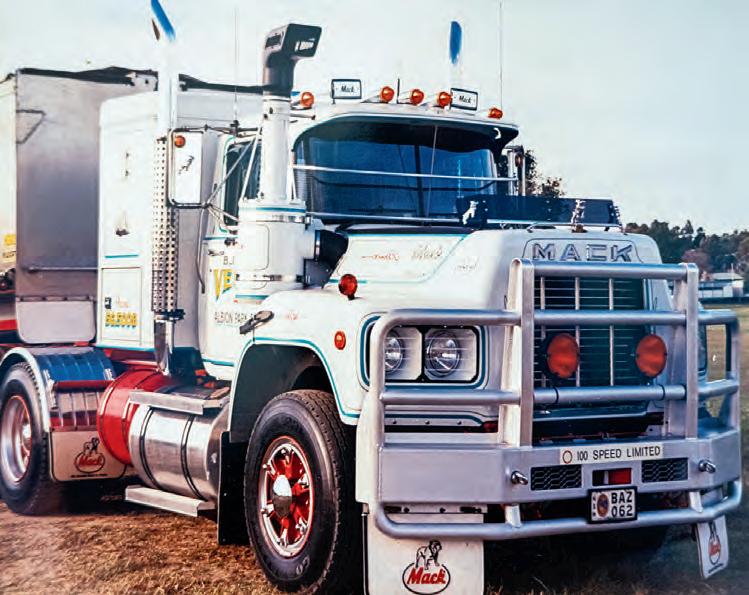






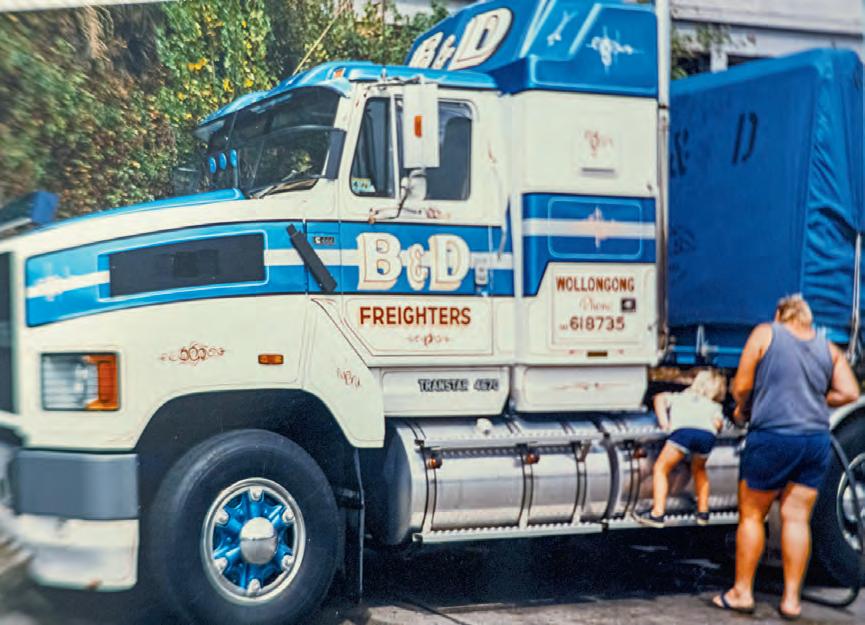




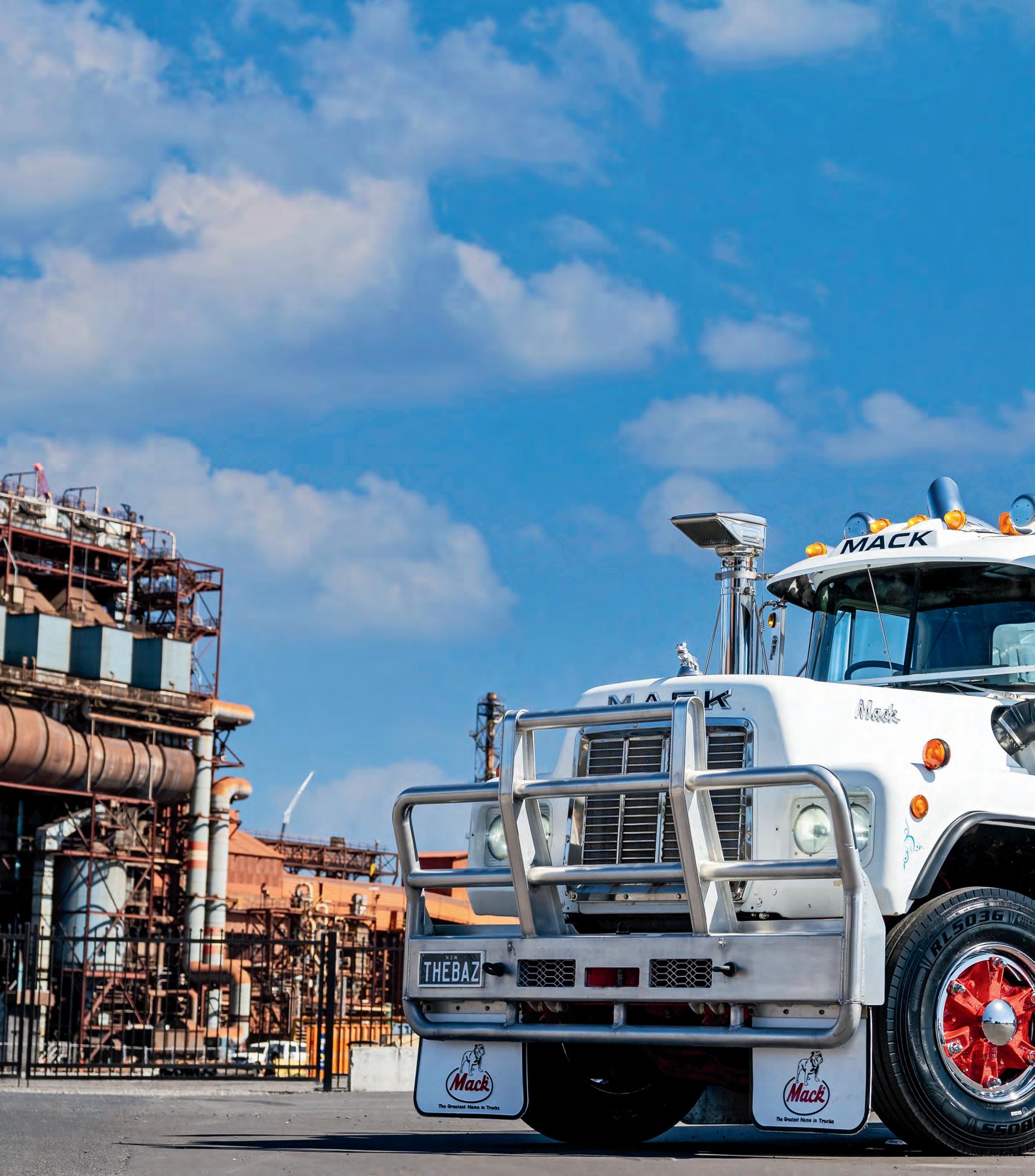



After successfully launching AKV Haulage and persevering through floods and COVID, Aaron and Krystal Vesey have found a bittersweet tribute to Aaron’s late father that takes him back to his childhood











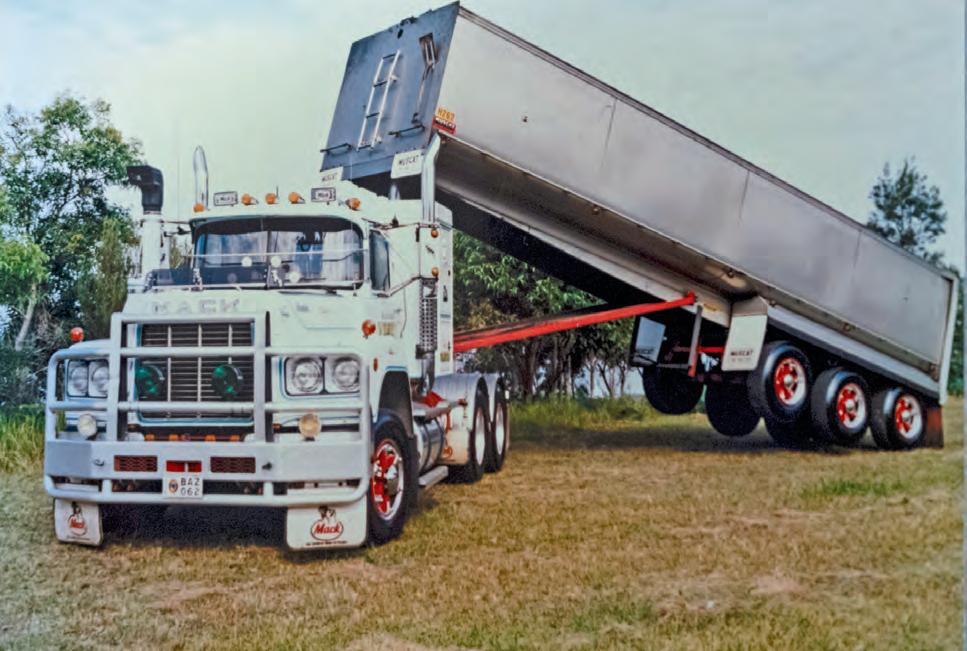


It brings a feeling of inner peace, a sense of fulfilment and bliss. For some people.
Not Aaron Vesey. As far as Aaron is concerned, you can shelve that wide open highway with a quiet contained comfy cubicle. His bliss is found with a twin stick Mack, an AM radio and the comfort level of a beer crate on a wooden wheeled horse carriage. Okay, there may be a little poetic license there, but the truth is Aaron Vesey, along with his lovely wife Krystal, are the owners and operators of AKV Haulage and the stunning R-model you see before you. Aaron really does find his happy place behind the wheel of a truck with two more years spent on this planet than himself. This affection for antiques comes from time spent learning the transport trade under the tutelage of his dad and inspiration, Barry Vesey.



ou know that calming relaxed feeling you get as you hit top box, stretched out in your air-ride, fully cushioned seat, with the open highway in front of you? You can feel the purr of the engine gently vibrating beneath your feet, the chilled sensation of the aircon blasting through the vents as you watch the heat haze outside sizzling like a Bunnings barbeque. Your hand reaches for the state-of-the-art entertainment system and, with the push of a button, all your troubles are drowned out by a kick-ass song blasting from the multitude of speakers in your well insulated cabin of comfort.

Aaron is
From a very young age you
see that Aaron was over the shoulder of everything trucking – he can’t reach the door but is keen to help fuel up; Aaron’s meticulous approach to his Mack stems directly from his dad. As you can see, the Valueliner was flat out on the coal but looked brand new

If you are from the Wollongong area, the name Barry Vesey may be familiar, or maybe you knew him by his ‘62’. Aaron’s dad was very well known in the area.

“Dad had Vesey Haulage; he did a whole heap around here. He was driving for a local company when I was really young and then went out on his own carting coal,” Aaron says.
“Back in the day on South Bulli, they just had fleet numbers and dad was number 62. Everyone knows him as 62 and that just stuck. A few years ago I was running Colac and I called out something on the radio and an old fella piped up asking who I was, I said ‘I’m Aaron’ and he said, ‘man, you sound like 62’. I told him that’s my dad and he couldn’t believe it.”

Aaron, like many others around Australia, grew up around trucks. Barry had trucks way back when Aaron was a baby, meaning early memories were filled with vehicles.
“I remember when I was really young, I’d go down to the yard with dad on the weekends when the boys were washing


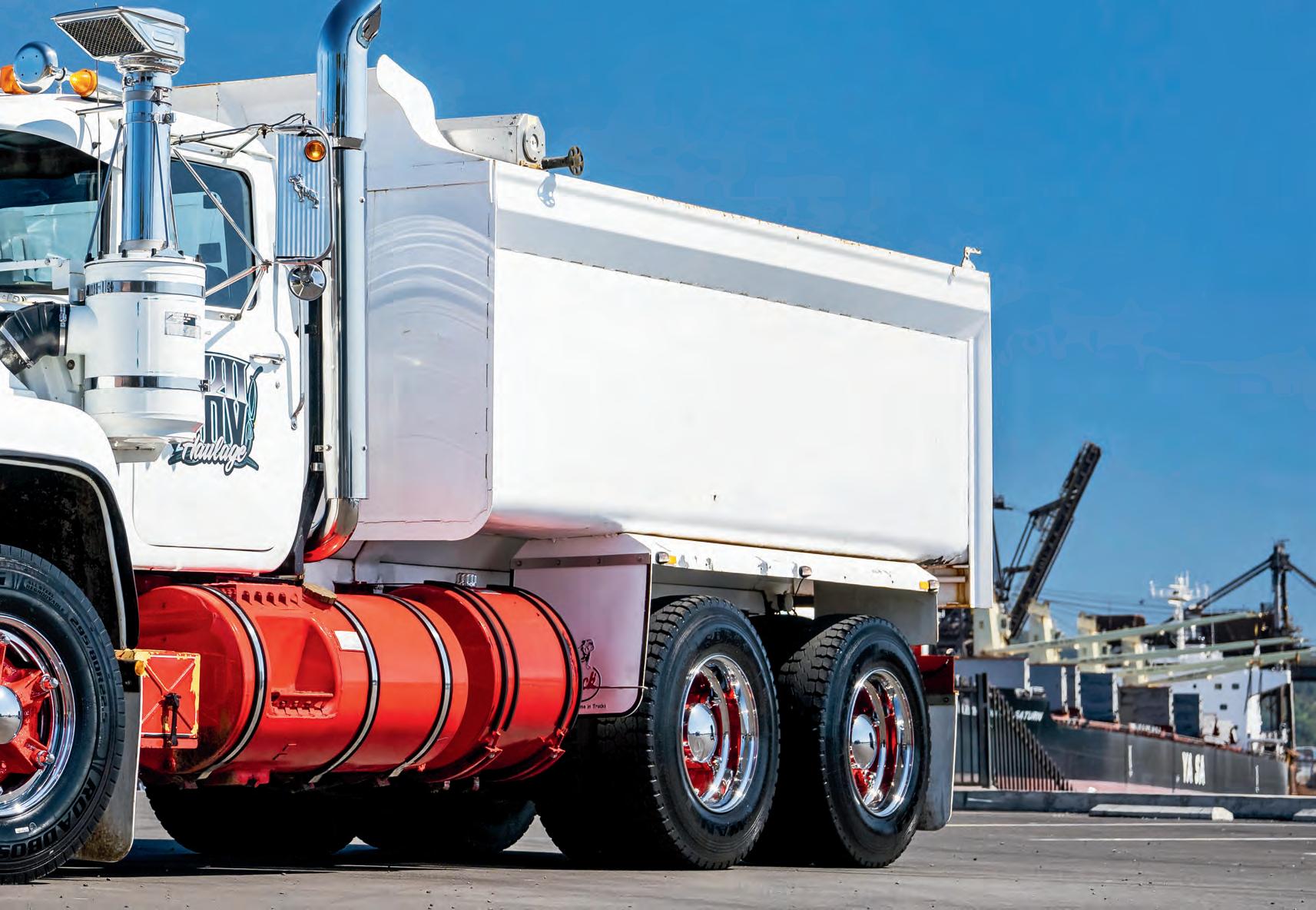
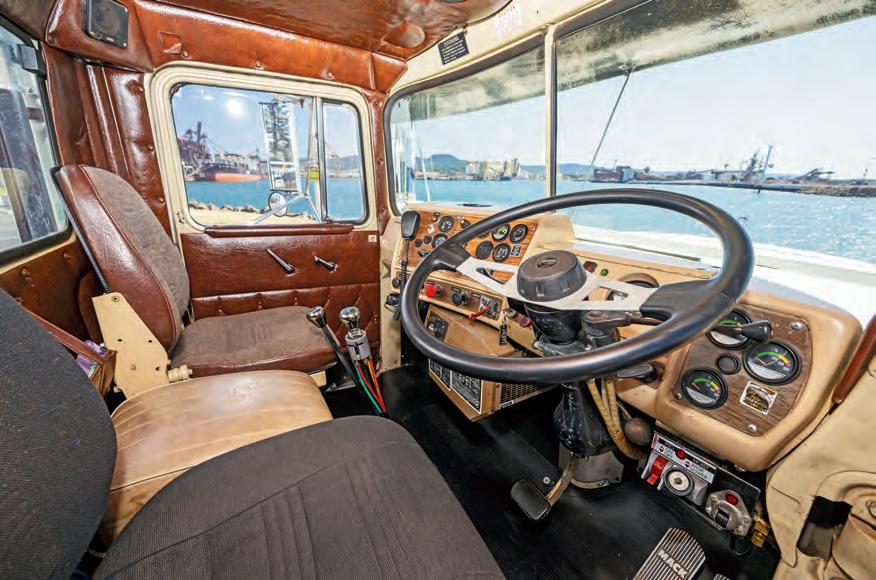
Above, L to R: One of the things that impressed Aaron when he first checked out the Mack was how well looked after the interior was. He has made sure to keep up the standard set by its previous owners; It is all the old school original elements that make this Mack so cool, like the water container in the door
Opposite page: Aaron, Krystal and Maddox, with THEBAZ in the background. We shouldn’t forget Aaron and Krystal’s other offspring, Mahkenzie, who was sent to school rather than our photoshoot; I’m out, I’d happily learn to work the twin-stick system but how do I connect my audiobooks to this stereo? Not once has Aaron been tempted to change it – it still works and he sees no reason to change it
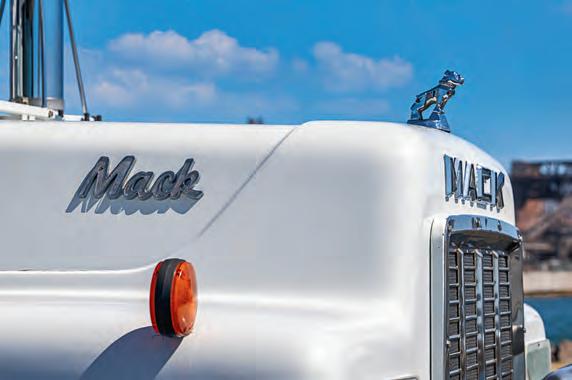
trucks,” he says. “They’d put me up in the bin of the single tipper and I’d be playing in the hoist well with my matchbox toys.
“They’d hose it inside every half hour or so just to keep it cool. I’d spend all day in there while they washed trucks.”
It is these fond memories that would eventually lead Aaron and his wife Krystal to venture out and follow the path of his father with AKV Haulage – Aaron Krystal Vesey Haulage. While we shall get to that story soon, we also need to open the Pandora’s box that has led to Aaron’s addiction to the stunning old-school workhorse you see before you.
“Dad had a few trucks, but my favourite was his Valueliner, I loved that thing,” he says.
“I remember when he had the Valueliner on the coal doing night shift. He’d say to me ‘just stay home and sleep in bed’ and I was always like ‘nah, I’m coming’. I still tell my wife now, the best sleep I ever had was sleeping in that Valueliner while it was going through the night.”
It was the kind of trucking childhood that many of us grew up with, and it formed pillars of patriotism that never break. Sadly, when Aaron was only 13, his dad took his own life.
“It was really tough, my younger brother had drowned when
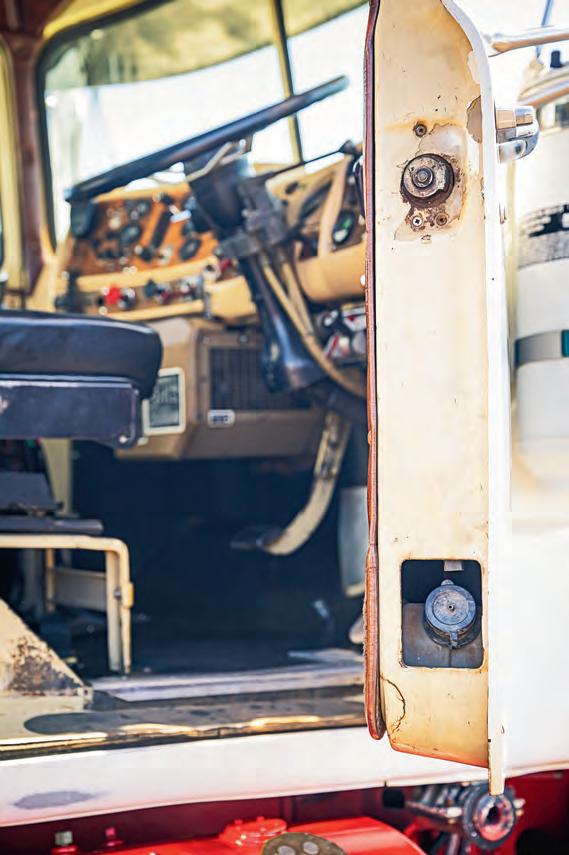
he was two and dad never really got over that. He was away for work and it really rocked him,” Aaron says.
“It was really hard, when I first got told, they never said how he passed. I just assumed it was a truck accident. It wasn’t talked about much back then.
“I just knew dad was so well loved down here. You talk to all the old fellas and they all say what a great bloke he was and how much they loved working with him. He was one of the original founders of the Camp Quality Illawarra Convoy. It was a long time ago, but it still hits me really hard.”
It was a very tough time for Aaron and the family. Aaron saw his schooling through, but as soon as he was old enough, he headed down the same driving path his father had blazed.
“As soon as I had my Ps and was old enough, I was straight into it. The first truck I ever drove was at Colmac Earthworks,” he says.
“It was an old twin stick White with a water cart. You used to have to time your twin stick changes with the motion of the water. You’d hold the steering wheel with your leg and use both arms to shift the sticks when the water peaked!”
From earthmoving, Aaron would follow in his dad’s footsteps and spend nearly a decade working coal as both a shift supervisor and driver.
“I remember the first truck I had on the coal was an old 404, it used to crack! I got sent home a couple of times for being too quick on the turnaround,” he says with a laugh.
Following nearly a decade on the coal, Aaron expanded his
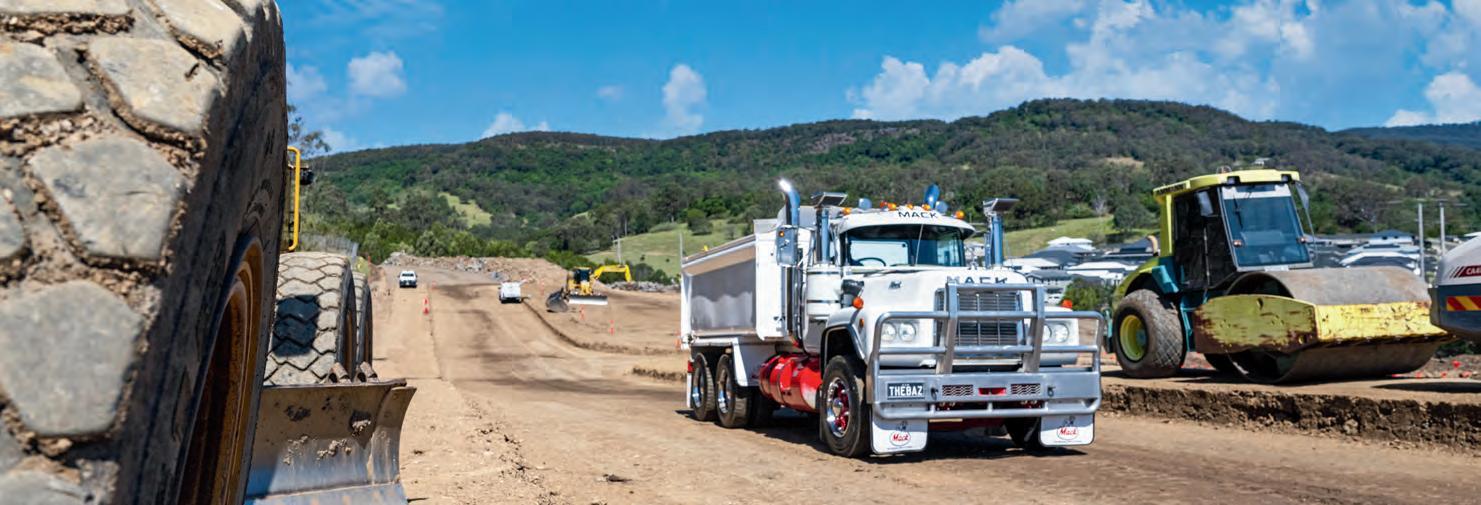
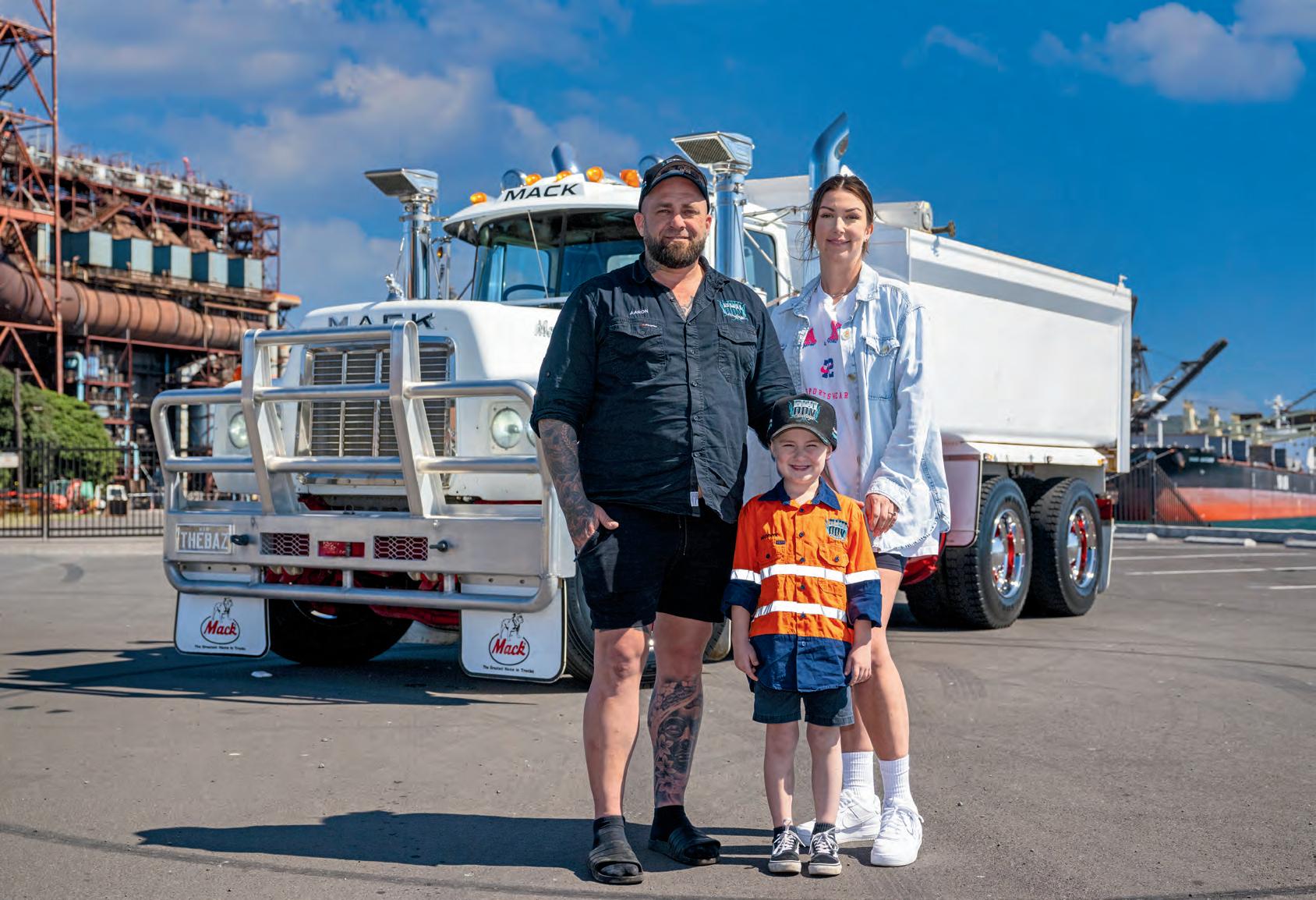
“As soon as I had my Ps and was old enough, I was straight into it. The first truck I ever drove was at Colmac Earthworks.”
skills by levelling up to some truck and dog work, this time carting all manner of civil product into sites around Wollongong and as far as Sydney. He mastered the art of putting the truck and dog combos into some pretty tight places.
While Aaron was expanding his truck driving repertoire, he was also trying his hand at a few other professions as well.
“Sometimes I’d get a bit sick of it and go try something different – I was actually welding when I met Krystal, then went back to trucking,” he says.
“I was on the tools for a while, then back to trucking. I even worked as a cook for a bit, but then ended up back in trucking. I just love it and always end up back trucking.”
Sometimes his trucking breaks were by choice, other times they were a little more enforced. An example was when Aaron realised he wasn’t destined to be a motorcycle stunt rider.
“I came off the Harley and ended up in a hip-toankle cast for 10 months – I wasn’t able to drive for a year so that wasn’t fun,” he says.
In 2021, the Vesey family first started floating the idea of starting their own business.
“At the time I was working for a mate feeding the Cement Australia plant seven days a week. I was go-go-go – big days, huge hours,” he says.
“We’d just taken a five-week holiday, the biggest holiday I’d ever had, and when we got back, I said to Krystal I can’t go back to working that hard.”
With two young kids at home, Aaron was missing so much with his hectic work ethic.
“I’d be away early in the morning and home in the arvo, but being old school, I had to wash the truck, get all the dust and dirt off and prep it for the next day, which would take a couple of hours, and I

was knackered by the time I finished,” he says.
“I’d be asleep on the couch before dinner.”
It is worth recognising Krystal here. Aaron is the first to heap praise on his wife, not just for putting up with the ridiculous workload he maintained, but also for the unwavering support when he floated the idea of starting AKV Haulage.
“Massive credit to Krystal, because there’s not many women who would put up with the hours
I was doing,” he says. “Then when we made the decision to buy the bogie, it was a huge sacrifice. We sold the caravan, sold her car, we were on the bones and she just supported and pushed me.” Keep in mind, Krystal is not from trucking lineage – in fact Aaron testifies she was terrified of trucks until she met him. When the couple were discussing the idea of starting a business, it was Krystal backing her hubby and family that led to the







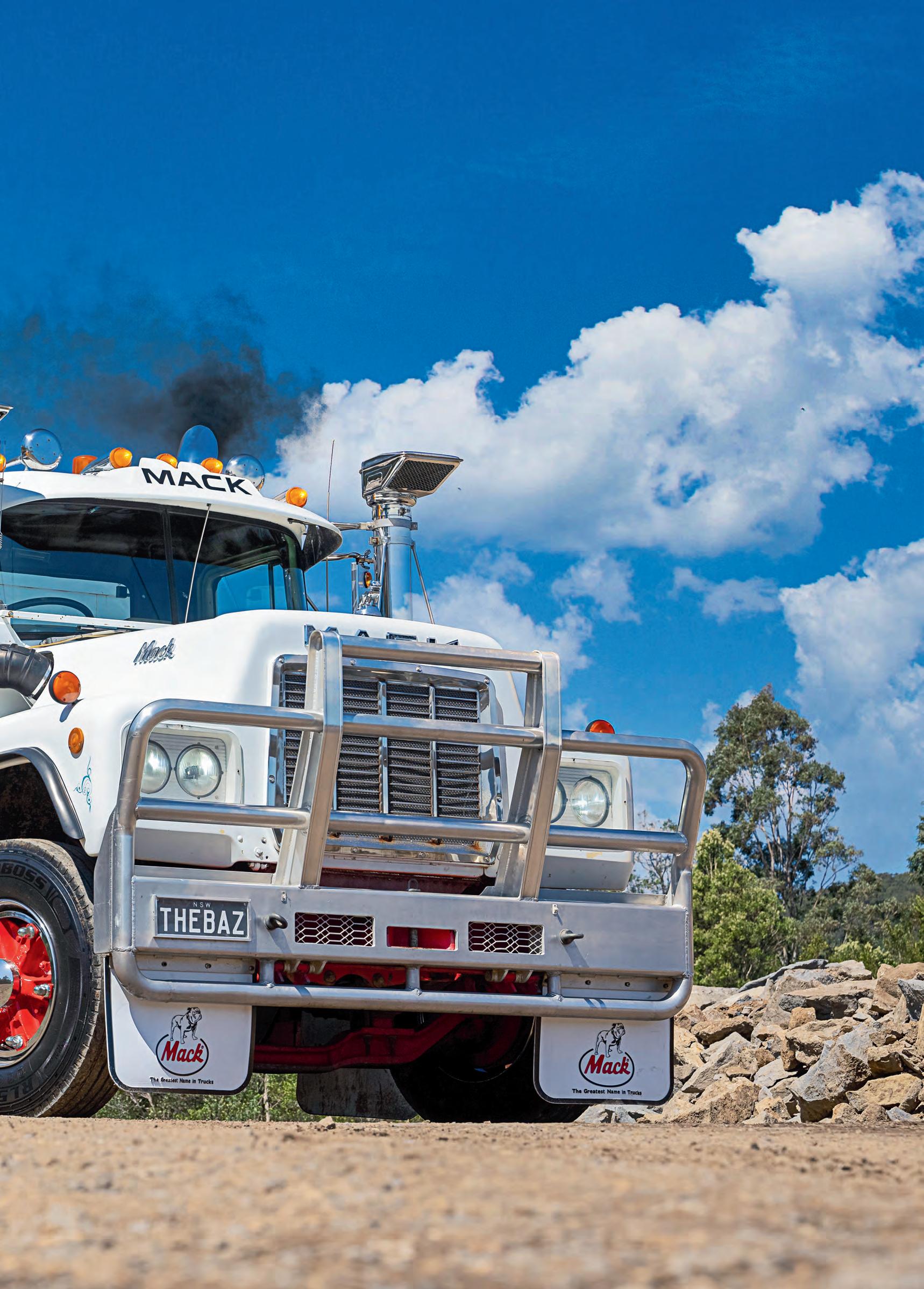
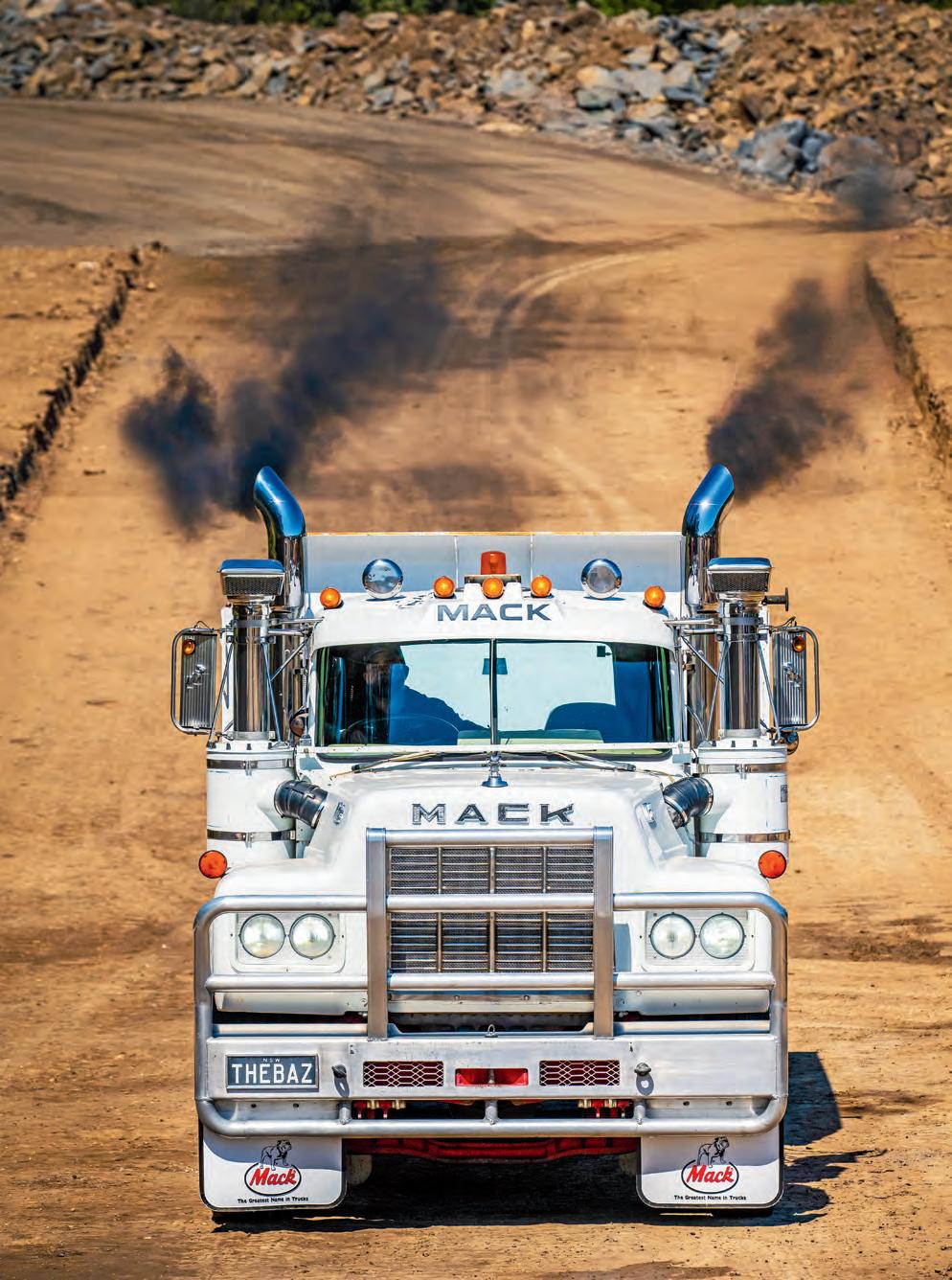
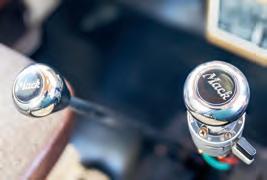
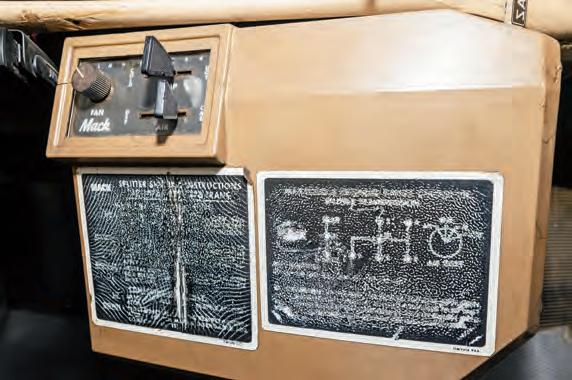
position they are in now. The idea behind starting the company was to give their kids the life they didn’t have growing up.
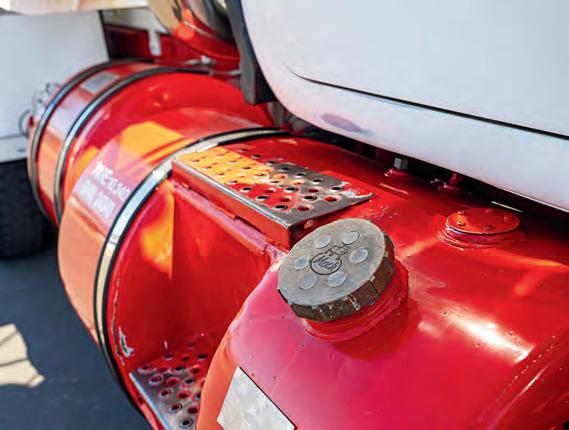
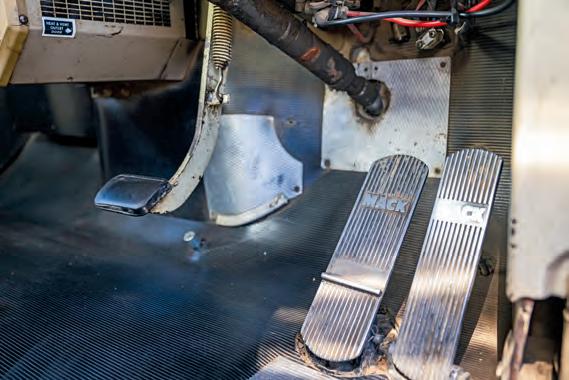
“Even as I was working the trucks, all I ever really wanted was to find dad’s Valueliner and bring it home.”
bought it and we were away.” Aaron’s work ethic, along with his enthusiasm, meant AKV picked up work quickly and soon found itself doubling in size within the first six months. It’s a fancy way of saying he bought a second truck.
“I ended up getting one of the first 10-wheeler Metro-Liners in Wollongong, we were really busy and it was exactly what we needed,” Aaron says.
“Things were rocking along – we got the 10-wheeler, hired a full-time driver and then along came the floods and COVID.” It was a real struggle for the new company for a while, but as Aaron and Krystal admit, if they could get through this, then they could get through anything – that’s just what they did. Once the flood effects subsided, and the COVID closures disappeared, AKV got back on track.
The Metro-Liner was sent packing and replaced with an extremely well looked after 2004 Western Star, packed with a big boy C-15.
Top, L to R: The other bonus of old school is that little bit of emission avoidance. The little 340hp Mack motor can still stir some smoke when she’s working; The Mack fuel caps are almost as iconic as the Bulldog on the bonnet; The stories these three peddles could tell. Over 40 years old and still doing the job
Above, L to R: One of the big ticks for Aaron when he went looking at this truck is the one thing that would put many younger drivers off — the Mack twin-stick. For Aaron though, it’s the best part; The old instruction plates are well worn after more than 40 years, but I am sure there are a few old schoolers that could tell us word for word what’s written here
“It was also for Aaron to be able to be there for things in their life, rather than always working and always for someone else,” Krystal says.
When I asked her how she approached the risks involved, her response was almost straight out of a motivational poster.
“If it didn’t work, it didn’t work, at least we knew we gave it a go and tried,” she says, though she quickly pointed out that she knew what Aaron was like and she knew it was going to work, although maybe not as rapidly as it did.
Once the decision had been made, the next task was getting a truck. Aaron had already locked in the fact he was just going to be chasing a single bogie tipper.
“I’d crunched all the numbers and with all the people I knew, plus people that knew the family name, I could make a go of it and just do it with a bogie tipper,” he says.
“I had a couple of mates steer me towards a guy selling a 2003 Mack Vision that he’d just done up and I went and saw it,
“The customers we were getting were keen on truck and dog combos, so we opted to sell the 10-wheeler and get our first combo set. It is still flat out to this day,” he says.
That has us up to date with how AKV started and where it is sitting now. What we need to focus on now is what was happening in the background while Aaron was moving dirt around the Wollongong estates.
“Even as I was working the trucks, all I ever really wanted was to find dad’s Valueliner and bring it home,” Aaron says.
“My best memories always go back to riding and sleeping in that truck. I always wanted to find it and buy it back. It’s that emotional connection to my dad.”
This underlying motive meant that when Aaron wasn’t working, cleaning or doing the family thing, he was not far from Marketplace and online truck sales.
“The idea has been there for years – even back when I was on the coal you’d get to talking to the old timers that knew dad
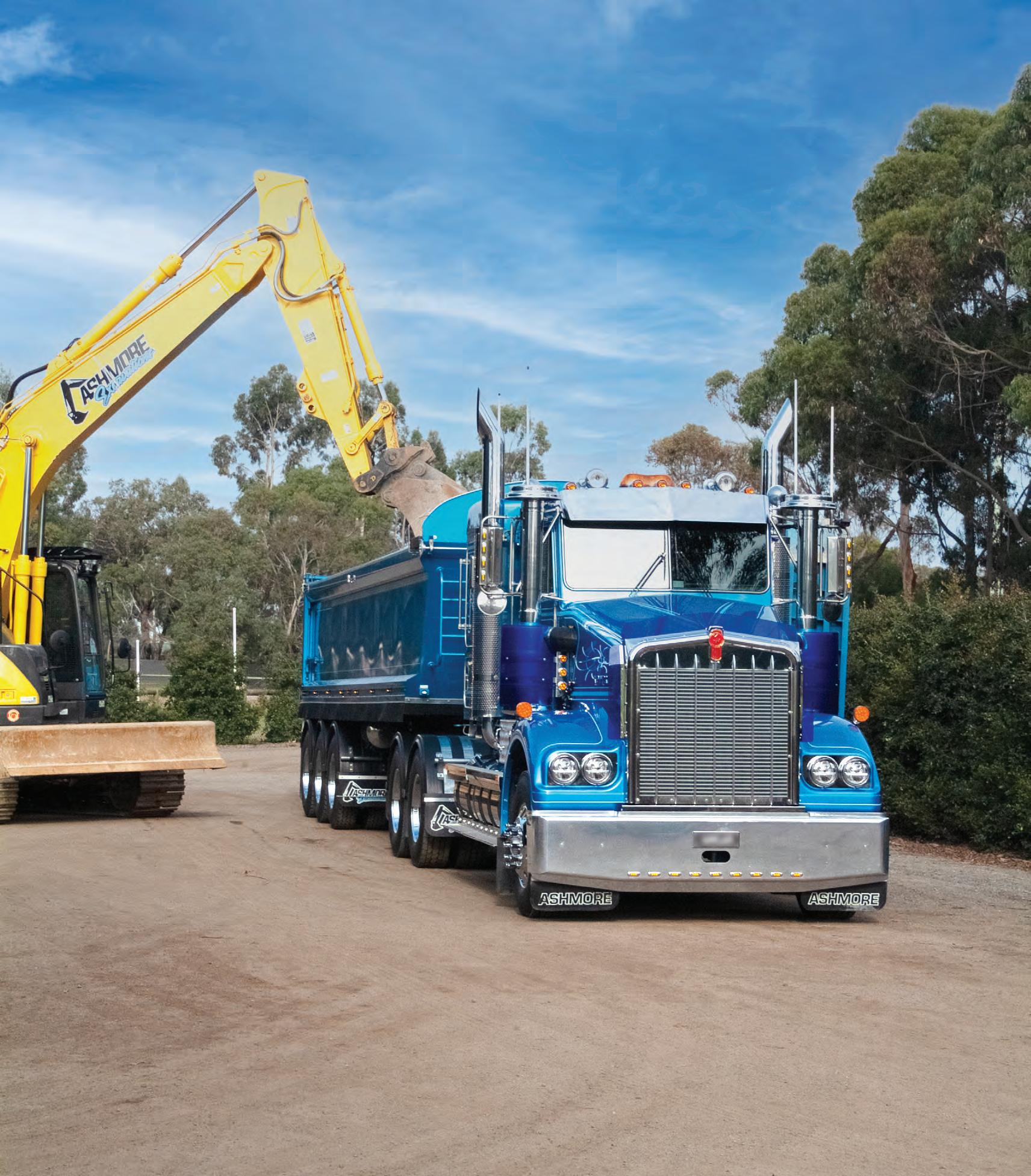
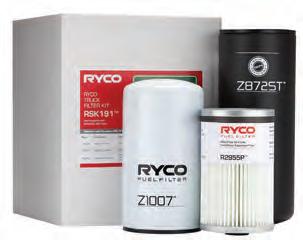

SCAN TO FIND FILTERS FOR YOUR TRUCK.









When you choose Ryco, you’re not just buying a part.
You’re buying round-the-clock technical support, market-leading innovation, and unparalleled filtration expertise.
Ryco’s Commercial Filter Range includes oil, fuel, air, coolant, crankcase, cabin air, AdBlue urea filters, transmission and Service Kits for a large range of popular North American, European and Japanese Trucks. So when your customers need superior protection, be Ryco Ready.






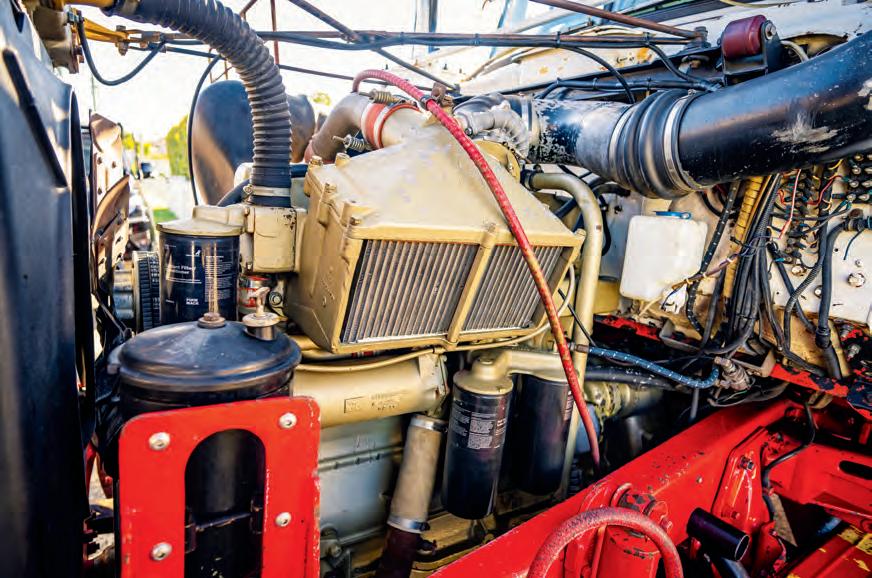
Above: Those that know the old Mack motors know, the old Coolpower engines may not have been the most popular but they were easily identified
Right: When Aaron got the truck he did look at adding his dad’s original plates to the truck. Instead he opted for THEBAZ and holds onto the original for when he finally tracks down his dad’s Valueliner
Below: It’s all original in the old Mack – it might be over 40 but it is still going strong.
Opposite page: The Mack has dropped back to a three-to-four day a week truck, with Aaron committed to a bit more office obligations these days. But when it’s out, it’s flat out; One of Aaron’s other workhorses happened to whiz by as I was chasing the Mack around worksites – his C15

Powered Western Star truck and dog and the truck and someone would have a story about it. I’d be trying to patch it all together to work out where it ended up,” he says.
Throughout the years of his research, and even with the assistance of the Mack Man himself in Gary Richards, it has been an unsuccessful hunt so far. Aaron filled me in on what they had learnt throughout the process.
“It got sold and went to Botany, Sydney and was carting boxes. They painted it red and it was carting for Owens,” Aaron says.
“Then, apparently, he sold it to his mate in South Australia on a sheep farm. From there, it’s disappeared. I have contacted Mack, checked VIN numbers and seen if anyone had ordered parts. I put posts up on all the social media sites and tried
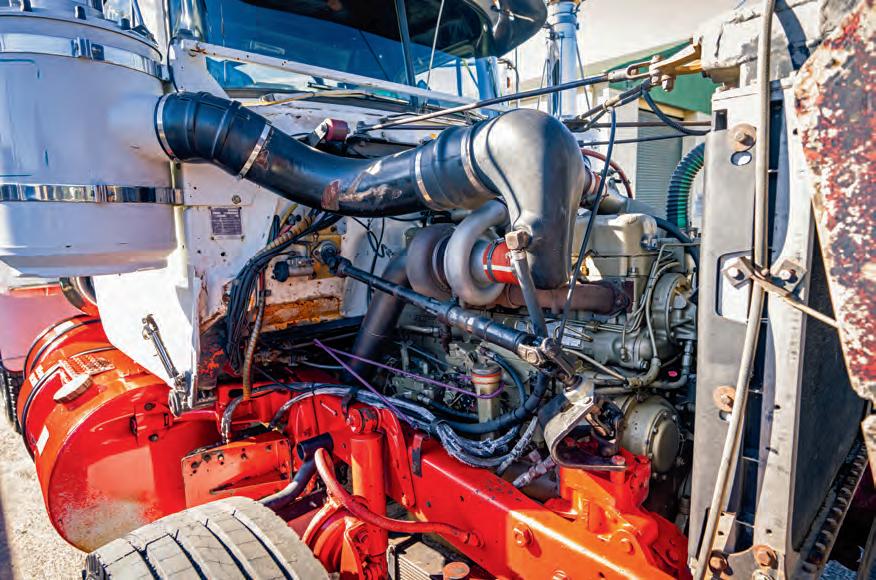
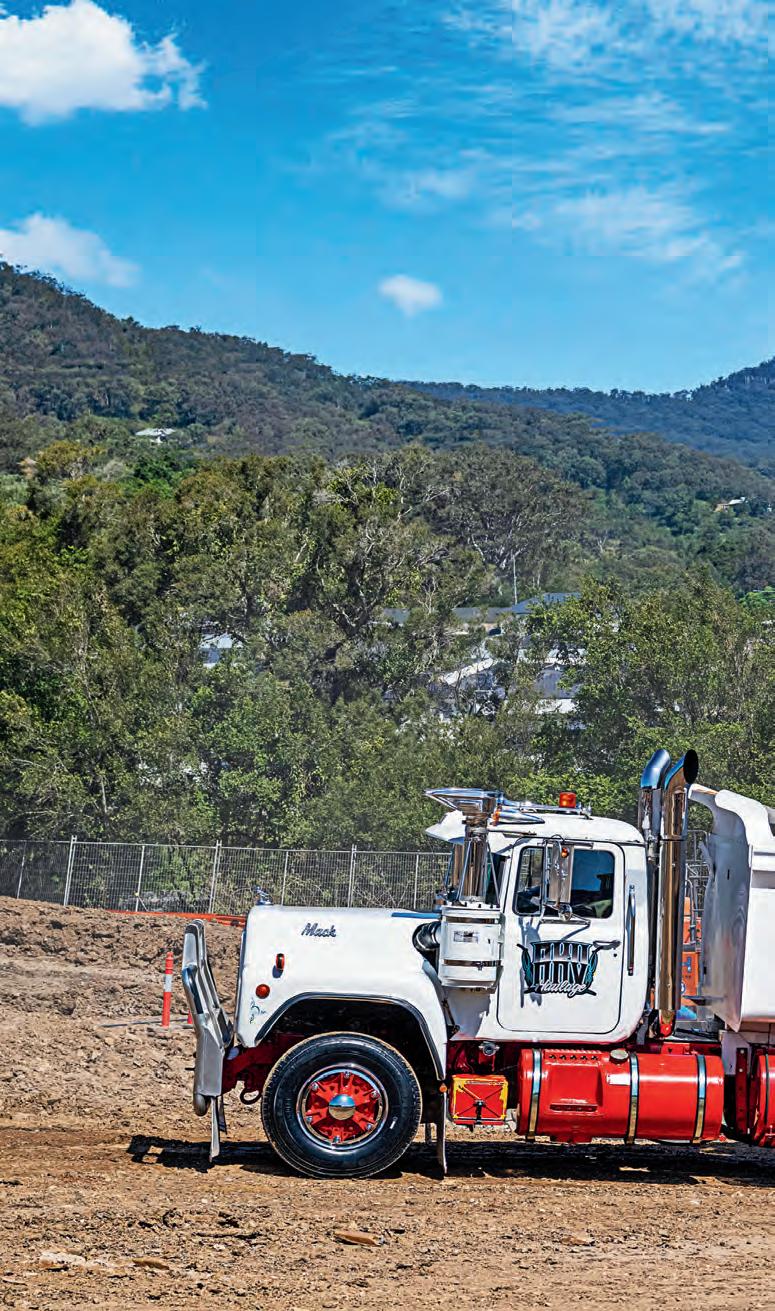
everything. It’s a very unusual truck, because to have that bunk on it was different. That’s how you’d know it, from that bunk.”
Unfortunately, everything seemed to come up negative and Aaron hit a bit of a brick wall last year. Then, during some Marketplace therapy scrolling, along came the R-model.
“I saw it and it was mint; it ticked all our boxes of having an air start, bogie drive and twin stick – I frothed at the air-start,” he says.
“It wasn’t dad’s Valueliner, but they are pretty much the same, just with different headlights. I was deciding over whether to buy it and Krystal piped up and told me to get it, as it was perfect and I’d wanted to get one for so long. She was the force behind it.”
The truck was located just on the ACT border and had pretty much been a one-company vehicle. In its former life, the 340hp Coolpower R-series had been used to haul machinery around to job sites before being converted into a bogie tipper. All it took was one look from Aaron to know the truck had been extremely well looked after.
“As soon as we looked at the interior and under the bonnet, we were sold. You just don’t see them in such tidy original condition,” he says.
After expecting to turn up and find it housing chickens or decaying in the back paddock, the Veseys snapped up the Mack and rushed it home.
“We thought it was going to be a big project, a full restore, but we pretty much came home, gave it a service, registered it and it was good to go,” he says.
“It’s not finished yet – I still have plans. Dad’s truck was signed and scrolled with ‘Jacob’s Pride’ on the back wall for my brother. This one will get the signs and scrolls and have ‘Barry’s Pride’ on it.
“I’m just taking my time. The condition it was in when we agreed to buy it meant I could take my time and do it properly.”
The progress so far has been steady. When the truck arrived at the Vesey household, it was running and weathered. It was
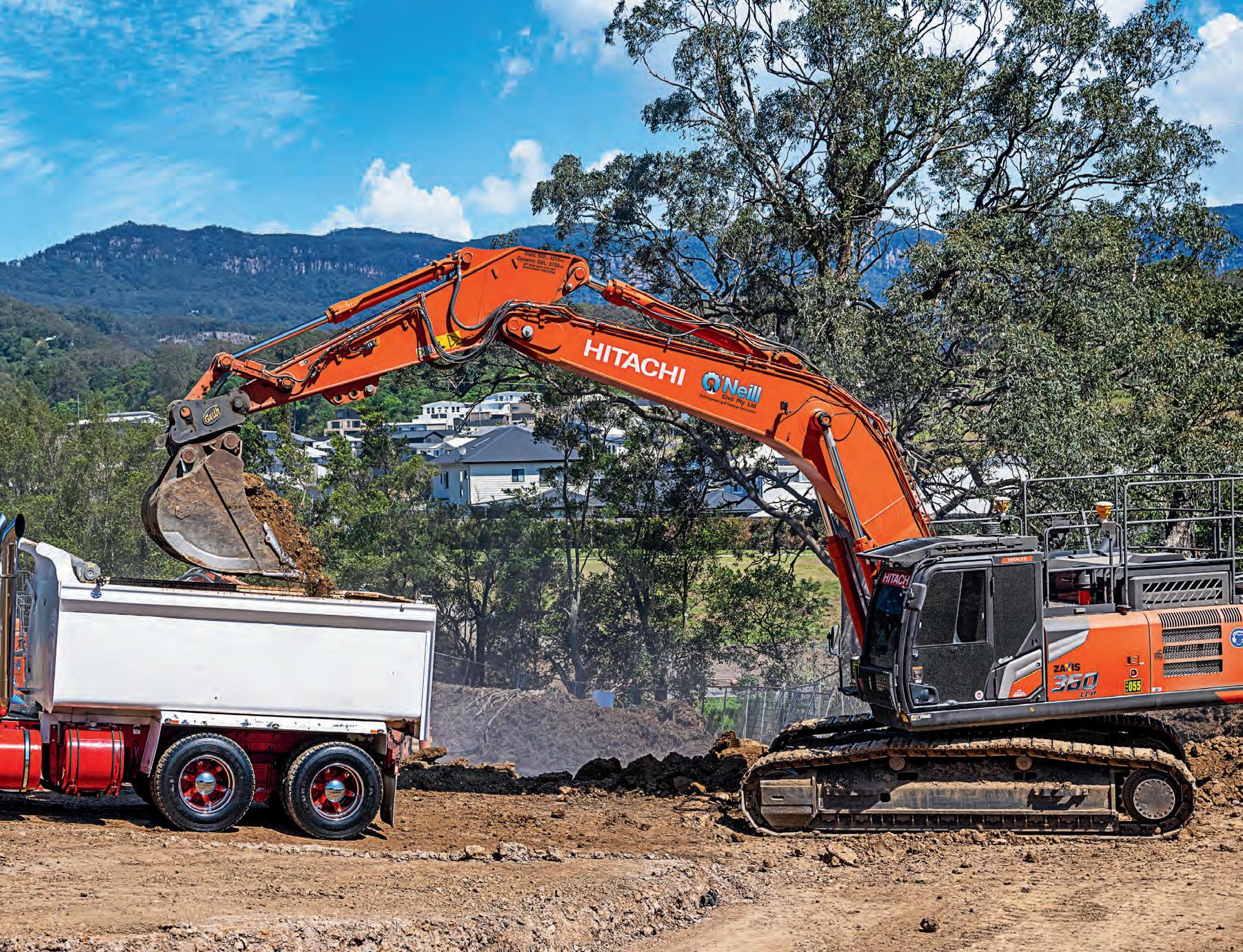
“You’re tired when you get home at the end of the day, you’re working it and you feel it, but you also have a smile from ear to ear. I love it, it’s a real truck.”
then given a full mechanical service and check over, scrubbed and rubbed back to base before it was repolished and shined up.
“When we got it, it had single stack on it, so I sent it into PJ at Muffler Centre and said it needs duals,” Aaron laughs.
“They did a full custom exhaust system, so it’s 5’ from the turbo into 7’ stacks.”
That was done last year – this year’s progression has seen the stunning super chrome wheels added to the little workhorse.
While the time is being taken to refurb the R-model, it is not getting itself an easy shed life. The small family company still needs to make money, and Aaron absolutely loves getting behind the wheel of the 43-year-old truck and finding his happy place.
“You’re tired when you get home at the end of the day, you’re working it and you feel it, but you also have a smile from ear to ear. I love it, it’s a real truck,” he says.
Aaron’s R-model does not contain any of the mod-cons many drivers are reliant on, and it doesn’t have all the smart features we also feel we depend on.
There’s no Bluetooth, no smart wheel and no climate control. It is not equipped with all the fancy air-ride systems or traction control braking systems
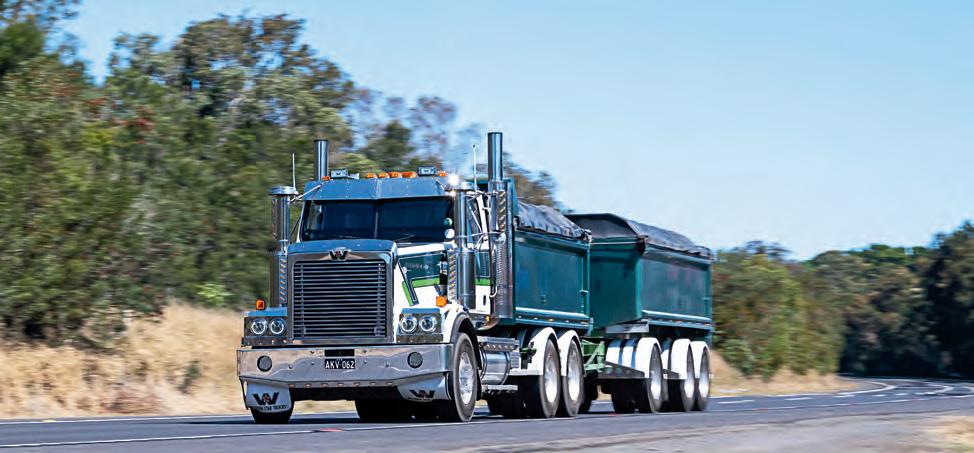
that make our lives easier as drivers. What makes this such an impressive truck though, is that it has character and durability and it allows Aaron to go to work with a massive smile on his face and, most importantly, it allows Aaron the luxury of family time when he wants it. All of those attributes ensure that the Mack is the modern machine for Aaron, Krystal and the family.
I wanted to finish up with a little wanted ad.
I did run this past the boss first (Krystal Vesey) and got permission, so let’s see if we can keep our ear to the ground and hunt out the Vesey Valueliner – VIN: VLR688RS12916. The truck 6FM01L08GALR00904 was delivered to Barry on April 20, 1990. Apparently, in 1999 a company called DAYNET P/L requested a load rating for it, other than that it’s a bit of a golden unicorn. Thanks for any assistance.


Rod Hannifey offers his feedback on recent HVNL review proposals and what drivers around Australia think of these suggested amendments to penalties
Goodaye all and a ‘trucking’ Good New Year to you for 2025. This could hurt, but it is intended as positive feedback, not just a whinge. This is my submission to the NTC Fines and Penalties review. It was already done and decided, but they have “consulted” with us? There is still so much wrong, but yes, if you look hard, you might see a glint of possibility, but you will have to look real hard and keep your rose-coloured glasses firmly fixed while having your fingers crossed behind your back.
I have two questions to start with and will then comment generally on where I feel we are at, following far too long for the current review process. Can you please tell me what the HVNL review has cost and do you believe we have received good value and significant change for the time, money and effort involved?
As a driver, I was one of the few who took the time and made the effort to respond to the long and drawn-out documents seeking feedback towards the review. I recognise that had many more drivers contributed, you may have seen the passion, need and years
of pain from them. Many hours of my time were spent genuinely seeking real and significant change to laws that were all too often onerous and severe and way above what other road infringements incur.
What we have received is the withdrawal of three fines, barely touching the real problems. Yes, there may be 21 reductions in penalties, but there are also 50 increases included and yet another substantial fine provided for driving while unfit – who will decide that? The NHVR has been visible and vocal with its intent to educate, inform and enforce, but the police have not! Fines issued by the NHVR can and will be reviewed by them, but any issued by police and the state revenue collections office, even when specific to the HVNL, will not be!
So, has the review really made a difference? From where I sit, no. We asked for some flexibility, recognition of the lack of rest areas, guidance on where we manage our fatigue and for the fulfiment of our need for the fines and penalties to better reflect the real road safety intent. It is often said by drivers that we are the only group fined for overtime – others actually

ROD HANNIFEY, a transport safety advocate, has been involved in raising the profile of the industry, conducting highway truck audits, the Blue Reflector Trial for informal parking bays on the Newell, the ‘Truckies on Road Code’, the national 1800 number for road repairs proposal, and the Better Roadside Rest Areas Group. Rod is the current president of the NRFA. Contact Rod on 0428 120 560, e-mail rod.hannifey@bigpond. com or visit www.truckright.com.au
get paid more. With the current logbook requirement to round up work and round down rest time, you can do less than your hours and yet still be fined for exceeding them, which is why we wanted a fair go for fines.
Yes, you have dropped the minor level, but how do our fines relate to other driving offences? They are exorbitant and can put drivers into a position of both physical and financial stress – do we really need that on top of the lousy roads and untrained motorists who risk our lives and theirs everyday while not enough is being done to teach them to share the road with trucks?
I recognise the issues with trying to get all the states and territories to agree, but I feel the police and others have held far too much sway. It seems they think we will all work 28-hour days eight days a week if you give us anywhere near a fair go for the job we live and the family lives we give up to deliver everything to everyone.
Fines for deliberate acts are there to educate people and try to improve road safety, yet our fines can be for simple mistakes or not ticking a box. I fought for the separation of offences, from one group to two – fatigue and clerical –yet again, some police will argue what offences fall into what category.
Then there is the lack of fairness in seeking a review. Many police are not trained fully to understand the HVNL – most drivers struggle to understand every single part of it, yet they will write a ticket and if you disagree, most often we are told “if you don’t like it, take it to court”. This is not fair justice when you take into account that we travel across states and the time and effort to appear can mean a large cost, even before getting the chance to have your say.

If you have not, from my point of view, given us real change, will you help support some fairness in court? Any ticket issued by police under the HVNL should be able to be reviewed by the NHVR as the body responsible for that law, not simply told to take it to court. That is not justice when the person giving the ticket may not understand the law themselves.
Many times I have been told of a mistake in a ticket written by police and when we then seek its withdrawal, we are told “yes, there was a mistake, but the ticket will simply be rewritten”, so they can make a mistake and simply rewrite it with no penalty or even an apology – we just get the fine still.
From where I sit, holding the steering wheel, the review has not provided real change, the review of the fines and penalties have not changed how we are treated and drivers will still be subject to large penalties for some things, many of which are out of their control and that often have little to do with road safety. I and many others are very frustrated at the time, cost and lack of change, so do you have anything positive for the future, or are we stuck with this failure into the future?
I do recognise some of the possibly most important changes you did win are behind the scenes and could lead to more change in the future, but for now, for drivers, most believe this has failed them. Safe Travelling, Rod Hannifey.

In four short years, heavy vehicle access permits could largely become a thing of the past.
NatRoad has proposed slashing 90 per cent of heavy vehicle access permits by 2028 in a submission to the National Heavy Vehicle Regulator (NHVR) Productivity Plan 2024–2029 and in our response to the review of the Heavy Vehicle National Law (HVNL). It seems obvious to us that the current access system needs a major shake-up – it’s clearly not working and just puts even more roadblocks in front of trucking operators. These operators are already struggling with the rising cost of living, escalating fuel costs and the driver shortage. The last thing they need is more red tape.
If we can improve access for heavy vehicles, we can move more freight in fewer trips, leading to lower costs, improved safety and reduced emissions. In my view, NatRoad’s
recommendations to fix access are just common sense. If we can make heavy vehicle access easier, it would reduce the number of individual trips and, of course, this would lower costs, improve safety and reduce emissions.
Central to our recommendations is replacing the current unworkable permit process with network-based access, the National Automated Access System (NAAS). Tasmania has shown this approach works through its Heavy Vehicle Access Management System. The proposed NAAS builds on the success of HVAMS and would see a transition from permits to network-based access. The benefits of such a system are clear. For heavy vehicle operators, automated access reduces red tape, saving time and money. For governments, it lightens administrative burdens, enabling resources to be better allocated elsewhere. For consumers, the knock-

BELOW: NatRoad wants 90 per cent of heavy vehicle permits to be slashed by 2028 in its latest submissions
on effect of improved freight efficiency is ultimately savings.
Of course, automation isn’t the answer to everything. There’s a danger it could just be a Band-Aid if we layer it over the top of an already dysfunctional system. What we really need is a new approach to networkbased access that slashes red tape for industry and removes administrative burdens for governments. The government must avoid reform just for reform’s sake without any real results.
We’ve seen the government take initial steps towards automated access but, to be frank, those steps aren’t enough. We need more commitment from government to make automated access a reality – we can’t risk this issue just becoming another talk fest. Governments must step up and show leadership and commitment. Either they embrace meaningful reform and unlock the productivity gains of a modern freight system or risk dragging their feet while costs and inefficiencies pile up.
NatRoad communications are intended to provide commentary and general information. They should not be relied upon as legal advice. Our advisers are available to clarify any questions you have and provide the right advice for your business and workforce. Contact NatRoad on (02) 6295 3000.
We’ve said far too often that nearly everything in Australia is delivered on the back of a truck, and it’s true. Heavy vehicles underpin our supply chains. This means the issues generated by the inefficient access permit system ripple through nearly every sector of the economy. The public may not understand the intricacies of the outdated permit system, but they certainly understand when there’s no bread on the supermarket shelves.
A government that ignores this issue does so at its peril. This is not an industry issue, it’s an Australian issue. Voters expect their leaders to make bold choices and it’s time for action.
“A government that ignores this issue does so at its peril. This is not an industry issue, it’s an Australian issue. Voters expect their leaders to make bold choices and it’s time for action.”
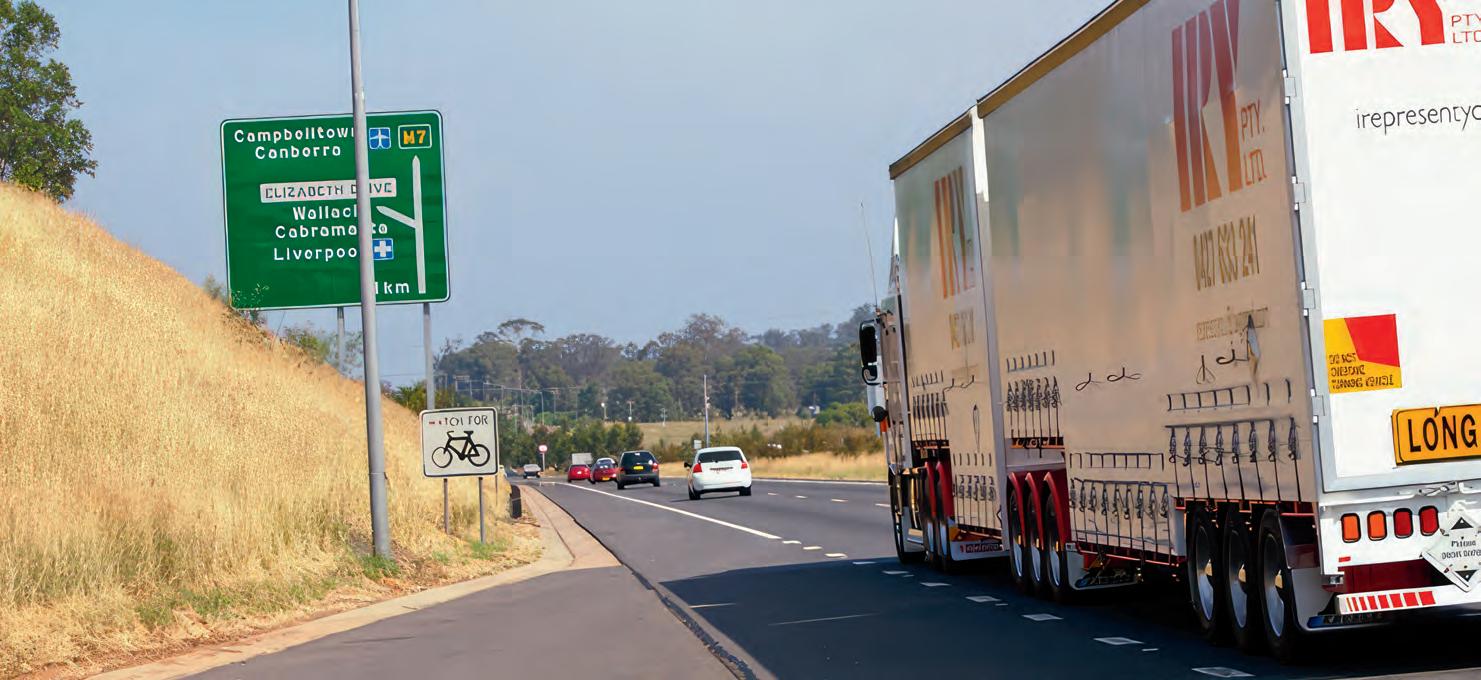
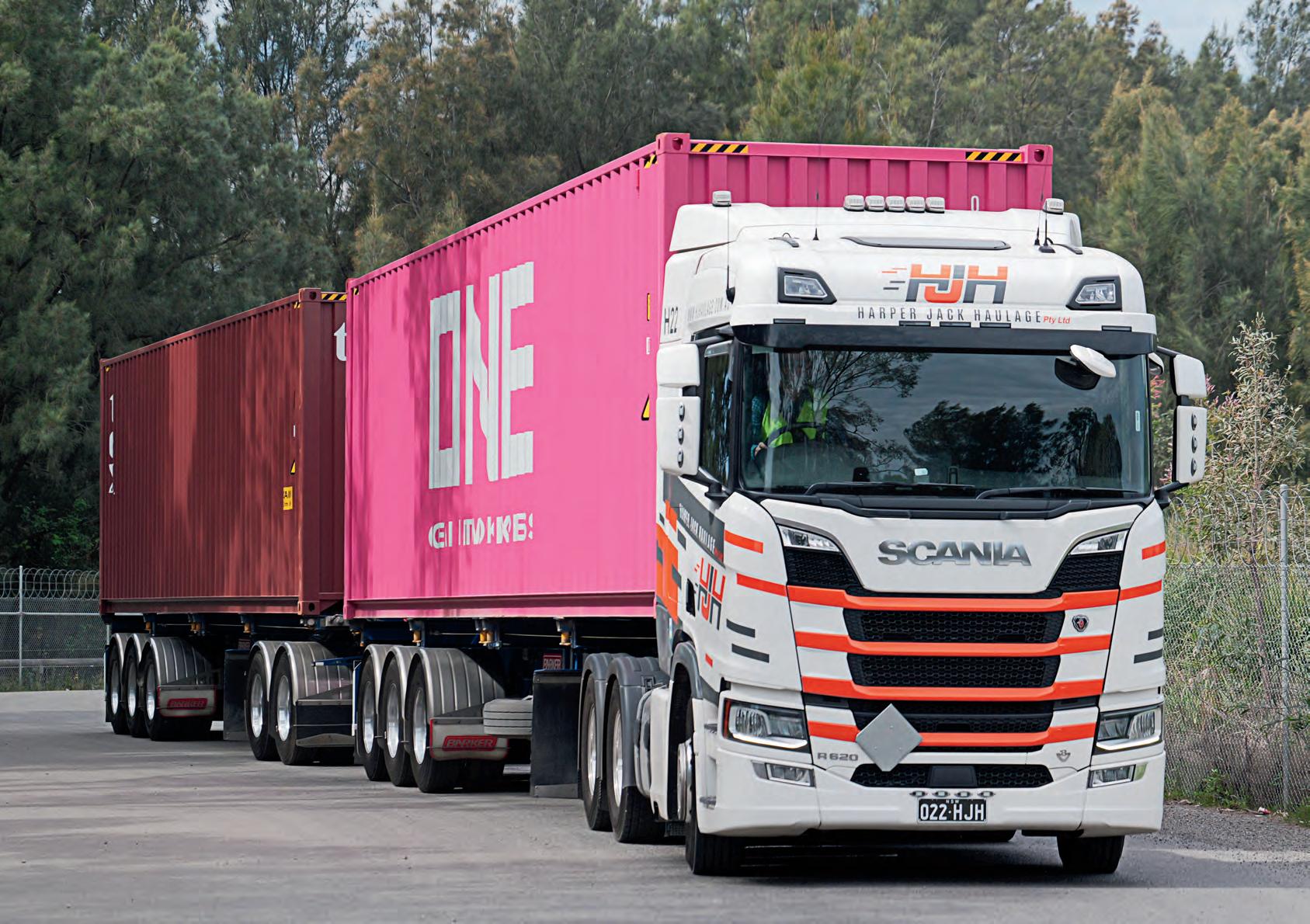
As a second-generation Scania customer, Rick Steadman, the owner of Harper Jack Haulage, had already been convinced that the Scania product was perfectly suited to his business model. After starting with the integration of some trucks not on the Scania repair and maintenance program, Rick soon saw repair costs spiking.
When it then came to merging a new acquisition’s assets into his existing fleet, the financial benefits of the Scania Repair and Maintenance contract once again shone through.
“The Scania R&M is a fixed cost. You know what each truck is costing you every year, your cost per kilometre, your cost per day, your cost per month, whatever,” he says.
“You don’t get any nasty surprises, plus the Scania Retarder is a big help reducing your brake servicing costs.”
The last time Rick can remember Harper Jack Haulage having a truck in for repair that wasn’t on Scania’s R&M program resulted in a cost of $7,000 –nearly the entire fee that Rick pays for Scania’s R&M program for a year. The financial benefits quickly stacked up, with Rick deciding to recycle his older trucks for new ones all the time to ensure his fleet remains covered by Scania’s program.
“We run trucks over five years on the Scania R&M program and then turn them over with around 400,000 km on them, so there’s still plenty of life left in them,” he says.
“One of the other key elements is, if you know what your costs are per day, you know what the cost is of having a truck off the road for a day, and that’s before you even consider the impact on your customers and the business.”
Rick started off in the trucking industry working with his dad. When his dad retired alongside his brother, the family operation had roughly 10 trucks.
Following his dad leaving the industry, Rick chose to take his own path with Harper Jack Haulage. Now, the operator has 26 trucks, 23 of which are Scanias.
“Dad and I started off with Scanias and we just never really looked at anything else,” he says.
“I know the equipment and I know the truck – if there’s something wrong, I generally know how to fix it or what to do.”
Nowadays, Harper Jack Haulage moves containers from the wharf to its new distribution centre in Camellia, New South Wales, before then moving them out to customers. The company moves about 150 containers per day, largely picking up new business through word-of-mouth.
While Rick knows Harper Jack Haulage may not be the cheapest option in the market, the company prides itself on delivering the best service, and Rick likes that his customers respect that.
“People come to us generally because of our service – they’re happy with what they’re getting from us, and they’re not receiving calls from upset customers,” he says.
“Our customers are happy that we deliver them
happy customers.”
Rick says he also gets calls daily from drivers looking for work.
“We have no problem with drivers. We just pick the good ones, give them a trial and set a high bar. It’s attitude as much as being able to steer,” he says.
“We haven’t had a high turnover of staff at all. I think once you’re offering good, clean equipment, they’re keen to stay.
“We offer a really good atmosphere, there’s plenty of work, and many of the drivers live close by. Many of our newer drivers are Indian, and they’re so polite, they don’t take sickies, I think they’re fantastic.”
Currently, Rick is running a day shift with 26 drivers and seven people in the office who may also run the reach stackers. The Harper Jack Haulage fleet includes a wide range of Scania trucks, from new R and G-cab Supers in 460 and 560hp to R-cabs with V8 engines up to 620hp, as well as some older R and G 540 and G 450s. Rick admits the fleet works hard in stop-start traffic, with one client in the ACT requiring Rick to send an A-double out every day.
“We tend to keep one driver in the truck, which helps ensure they’re really well looked after,” he says.
“The drivers are responsible for how clean and tidy they are inside, and we’ll look after the outside. You can look in any truck and it will be spotless.”
Rick says the efficiency provided by Scania trucks is enhanced by finding trailer solutions that build on these savings. HJH has recently acquired three splitquad axle side-loader trailers that allow them to carry
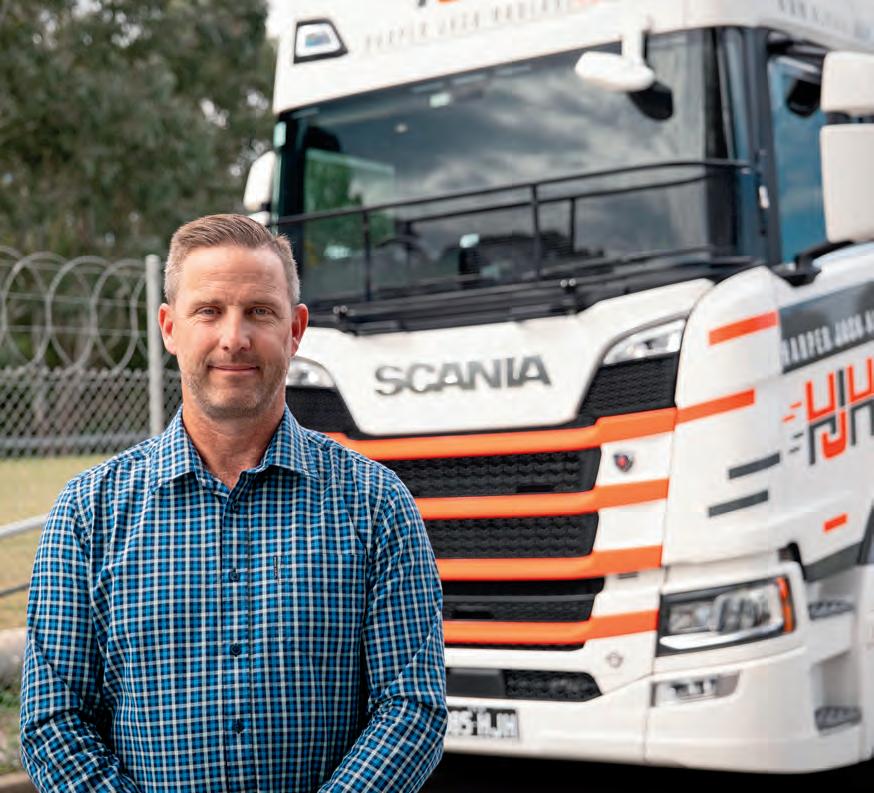
a heavy load directly to the customer without needing to send a second truck to manage the offloading.
“The split quad is a relatively new idea, and there’s not a lot of them around in Sydney,” Rick says.
“They run on PBS permits but deliver us and our clients a huge advantage. They can cope with about one-and-a-half times the weight of a container that can be handled by a standard sideloader, with a maximum of 34 tonnes, which is handy for imports of pavers or other dense materials. It means our customers can fill up their containers more by volume than weight, helping reduce their shipping costs.
“Now we don’t have to send two trucks to a job for an overweight container. A standard side-loader can cope with a 22-tonne gross container, so when we have a 26-28-tonne load, we had in the past to put it on a flat-top and send a side-loader to lift the container off, whereas now we can avoid that. We’ve now got two Hammars and one Steelbro split-quads – our Steelbro was the first on the road and it was the unit on display at the last
OPPOSITE TOP: The 620hp R model Scania has performed well for the fleet
BELOW: Having different sized trucks for different tasks helps to juggle the costs of running a fleet
Brisbane Truck Show in 2023.”
HJH is on the move, literally, having shifted from a depot of 5,000sqm to a new location that is four times as big in 2022, but the small business mentality continues to permeate the way Rick thinks about his customers.
“We’ve gotten bigger, but we still have that small business attitude. We like to be personal with our client base – my phone is on all the time,” Rick says.
“If anybody has a problem and they can’t get hold of the office, they know to call me and we’ll get the problem sorted. I’ve made a point of speaking to clients and going to see them, especially if there’s been a problem, I want them to know that I want to know what the issue is so we can resolve it.
“I like the size we’re at now – if you are going to grow, you should grow step-by-step and don’t jump from 25 to 50, but instead take small steps.”
Dealing with Scania Preston’s sales manager Kaashief Boonzaier, Rick simply has to call when he needs a truck before being sorted by the team.
“Scania has always helped us, even from back in the days when Scania was at Chipping Norton. The (R&M) programs have tidied up a lot of things and the branch’s communication is fantastic,” he says.
“When we send a truck in for a service, within a couple of hours we’ve got an email to let us know if they have identified any other issues that need to be fixed.
“Kaash always picks up the phone, even at seven o’clock at night he’ll answer, because he knows you don’t ring him at that hour unless it’s urgent. I think that Scania’s aftersales service really helps keep me as a customer.
“With the R&M, the tow truck service and the 24-hour Scania Roadside Assistance hotline, there’s always a step-by-step process that we follow. If it’s towable, we’re straight onto the hotline and they’re there quickly.”
Despite this pristine service, HJH switched to working with Scania Easton Creek once the site opened, due to its closer proximity.
Scania NSW sales manager Kaashief Boonzaier says HJH is a perfect example of an efficiently run business that is careful controlling its costs and managing its growth.
“We have been very pleased to be a partner with HJH in its growth over the past few years,” Kaash says.
“Rick has a firm, process-driven operating strategy, and he’s benefited from the Scania Repair and Maintenance contracts to take the worry out of ensuring his fleet uptime, as well as compliance with roadworthiness.
“His vehicles are more than just well maintained – they are also well driven and looked after, which gives them extra appeal when he comes to swap them out for newer models.
“We look forward to working with HJH into the future and watching their continued success.”
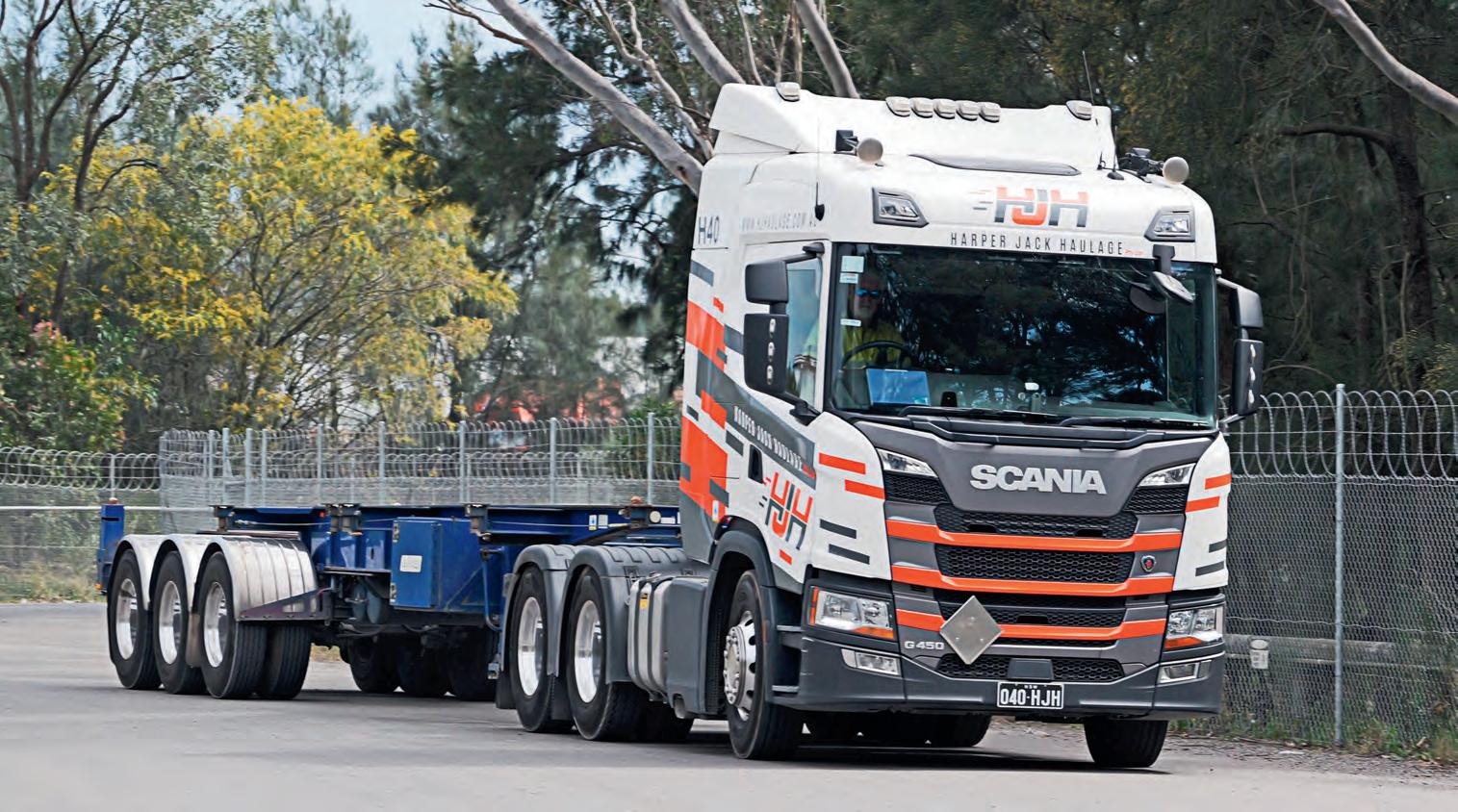
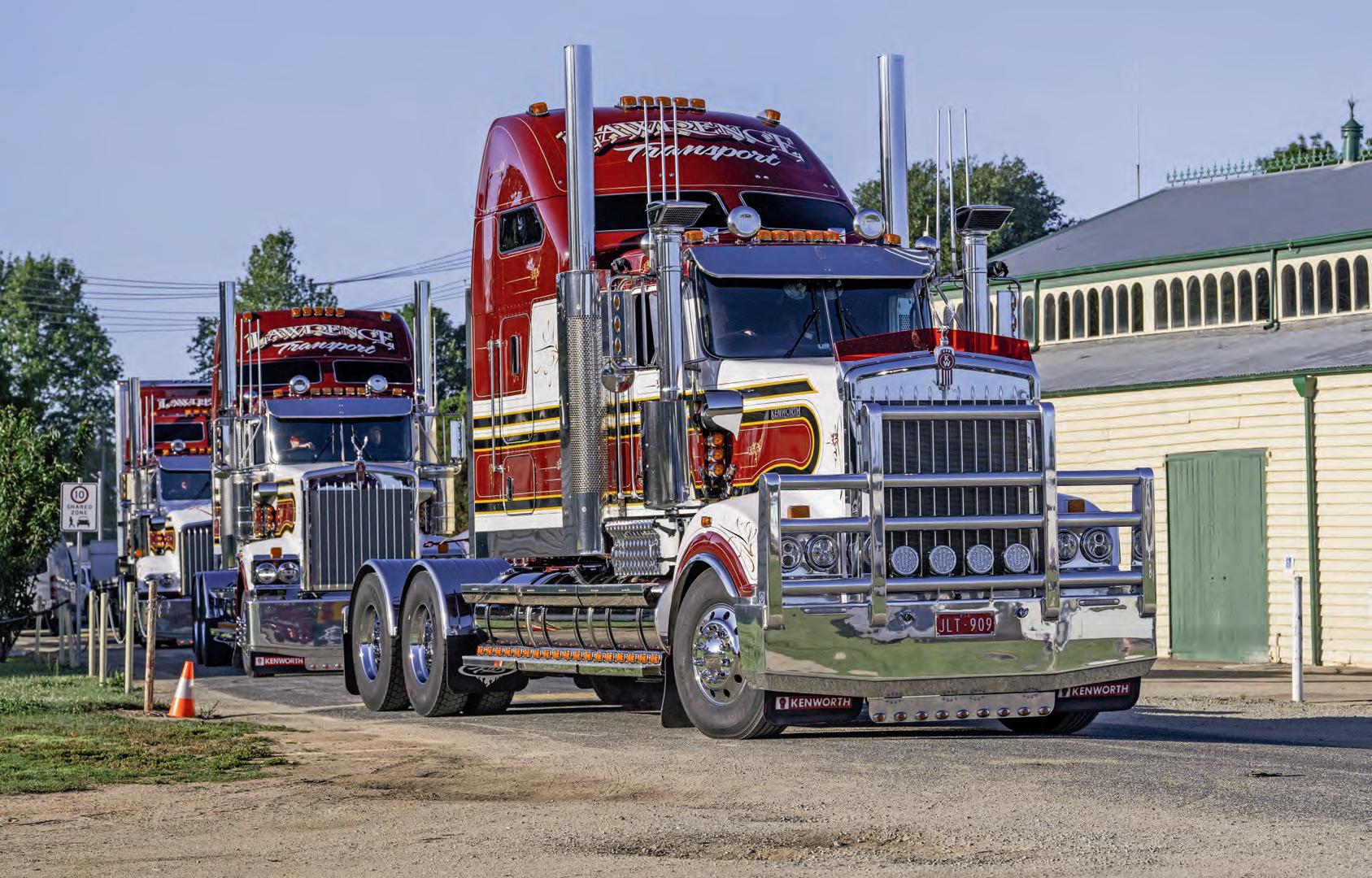
Heading to Bathurst for another busy year for the Dane Ballinger Memorial Truck Show, Warren Aitken saw a variety of shiny rigs and caught up with the back-to-back winner of the King Rig award
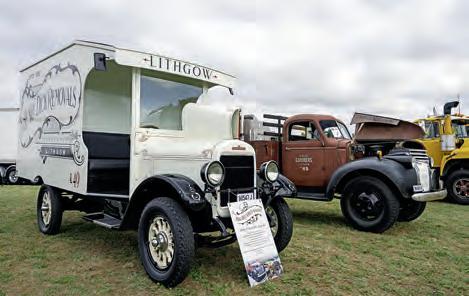

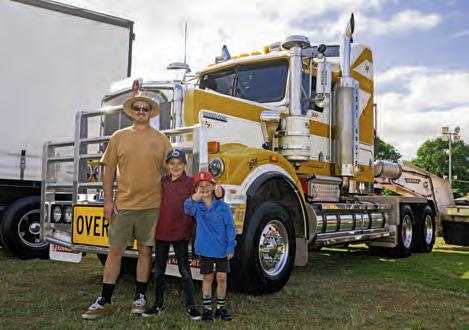
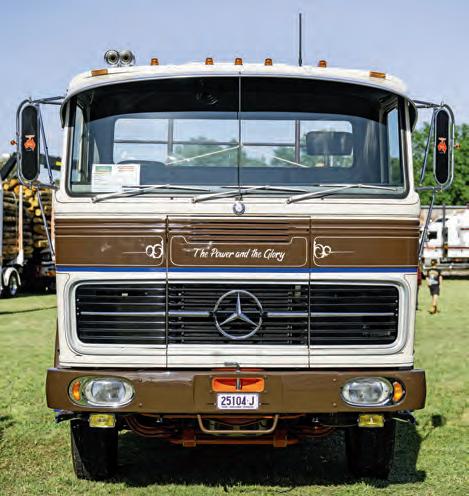
Heaping praise on a parking warden may be a weird way to begin a truck show wrap up and I appreciate that, but I am still going to do it though. I was witness to the stresses involved and I feel it is only fair that we begin this year’s Dane Ballinger Memorial Trophy wrap-up with a shout out to the man of the moment, the prodigy of parking, the maestro of manoeuvrability, the virtuoso valet himself, Jamie Woods.
Jamie is a lifelong friend of the Campbell family, who in turn are lifelong friends of the Ballingers and subsequently they are all important cogs in the truck show machine that is the annual Dane Ballinger Memorial Truck Show. I am singling Jamie out for he was the conductor of the silky symphony of shiny machines this year.
Yes, the responsibility traditionally lands at the Bondwoods Transport manager’s feet anyway, but this

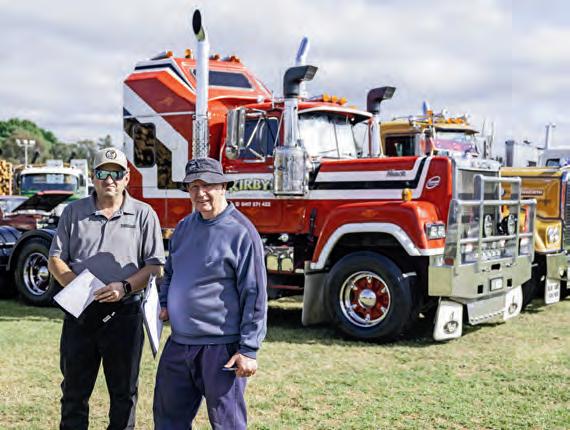
year the pressure was elevated. In an attempt to make the layout more user friendly, it was decided at the 11th hour to restructure the arena for this year’s event. The stage and stalls were moved to centre field and as such a new parking permutation was needed. Before you start quipping about how it’s not that hard, keep in mind the majority of this was getting done between midnight Friday and 3am on show day.
It was being done with only partial indication of how many entrants were coming for pre-staging, and limited knowledge of what configurations would need to be accommodated. If you weren’t already aware, the Dane Ballinger Memorial Show is one of very few shows where you can turn up bobtail, B-double, even bring an oversize load in if that’s what floats your boat. It is an all-inclusive show, which is great for the appreciative truck enthusiasts like me, but it creates plenty of challenges for the preordained prince of parking, Jamie Woods.
Hence credit to Jamie – not only did his Tetris techniques manage to fit in all of this year’s entrants, but he did it with the flare and panache of an overpriced interior design expert. I will try and soften the salutations by pointing out this year’s show saw a small drop in numbers, but nonetheless it was still a great job. Somehow, he managed to squeeze everyone into the Bathurst Showgrounds without making it feel as claustrophobic as the Monash Freeway on a Monday morning.
Now let us get onto the show itself. As I just mentioned, there was a small drop in attendance this year, truck attendance at least. This, however, is a double-edged sword. It wasn’t for lack of desire – Jamie himself normally leads a flotilla of fancy rigs down from Brisbane for this tribute show, however a hectic workload saw just the one Bondwoods truck free to make the journey south to Bathurst. Several other Dane Ballinger regulars were restricted by the availability of trucks as well. We can never begrudge unavailability due to work though; times are tough in trucking and you have to make hay while the sun shines. From a purely selfish standpoint, however, we always want to see more and more quality gear on display – it’s like cold beer. Sure, one is good, but we will always appreciate more.
While the numbers were down from last year’s record 174 registrations, there was still over 160 meticulous machines on display this year and, as the old saying goes, it’s the quality, not the quantity, that counts. This year’s quality once again raised the bar.
Dean Campbell’s jaw-dropping display of luxurious loggers were a very confusing site. When you inspected them, as well
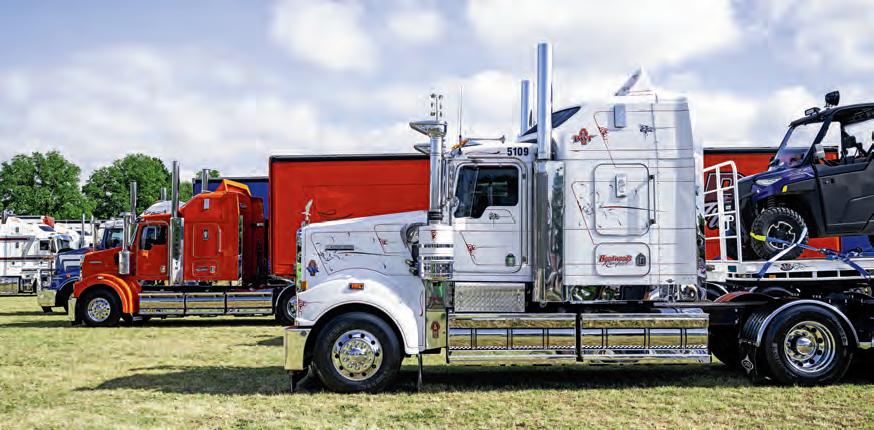
Clockwise from above left: Please excuse the grumpy judge James Miller, it was a hard day for him and judging partner Andy Nash but they got the job done and still had time to enjoy the show; There may have only been one truck representing the Bondwoods brand but what a weapon it was in Bondwoods’ stunning T950; Two of the hardest workers at the Dane Ballinger Memorial Show, Wayne Maslen and Jamie Cantrill were busy all day getting the judging done in a sea of stunning trucks; Whichever side of the fence you fall, there is something in this shot for all the truck lovers; Sadly I don’t have any details, but I made sure I snapped some shots of the striking Star of McPherson Haulage; The new Kenworth K220 looks the part rolling into this year’s show with a full oversize load in behind it; GRS Towing had their state-of-the-art old school cool SAR Legend, with Brad & Leanne Blunden taking good care of it
Opposite top: After some Friday night rain on the way up from Sydney, the Lawrence Transport team had a late night getting their amazing Kenworths up to their high level of presentation
Opposite midde, L to R: It is always a pleasure to peruse the old classics and it doesn’t get much older than this amazing 1926 Reo Speed Wagon; Tamworth based truck polishers DMH Polishers made the trek over for their first Bathurst truck show, which they loved – Dylan Myles & Natasha Herfurth with Ashlyn Knights and Kai Dailey; One of my favourites at this year’s show was this amazing restoration project in Les Birds’ 1967 LPS1418 Mercedes-Benz
Opposite bottom, L to R: Clinton Stares, with Kohen and Tully, were keeping a very close eye on Tri-Clark Brothers’ stunning C501; Another well represented local fleet was Topsoil Organics who had these two stunning 9ohs on hand
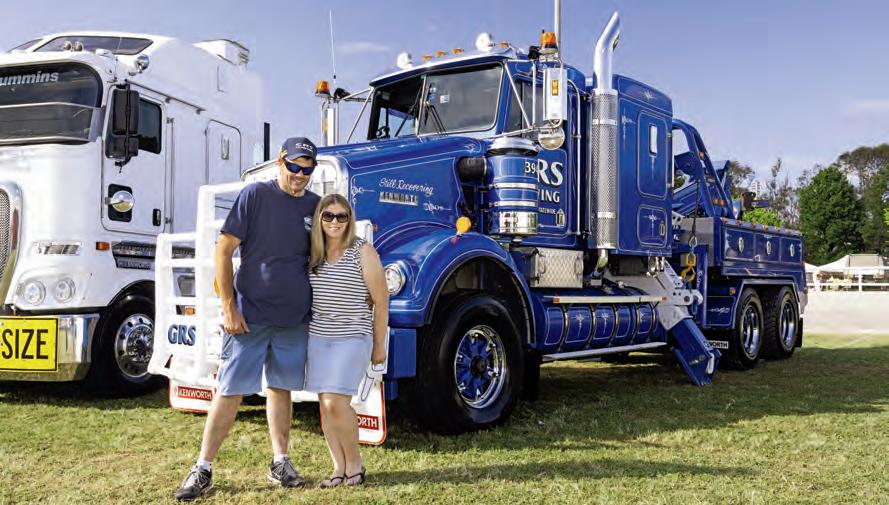
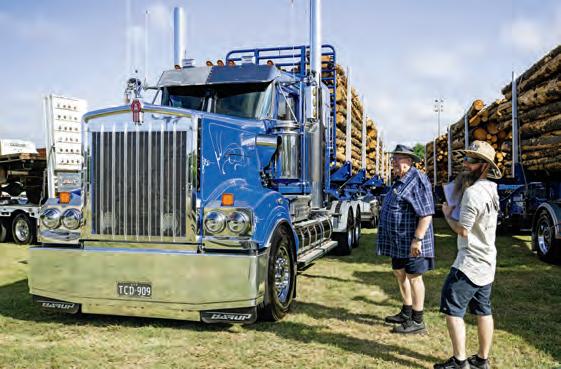

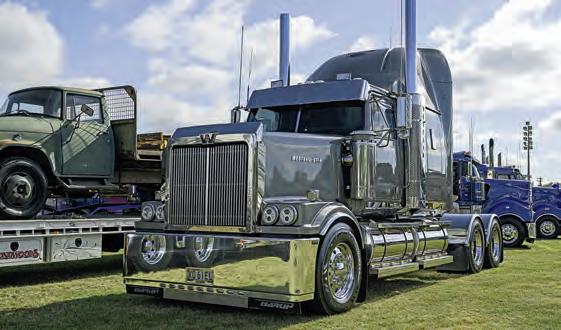
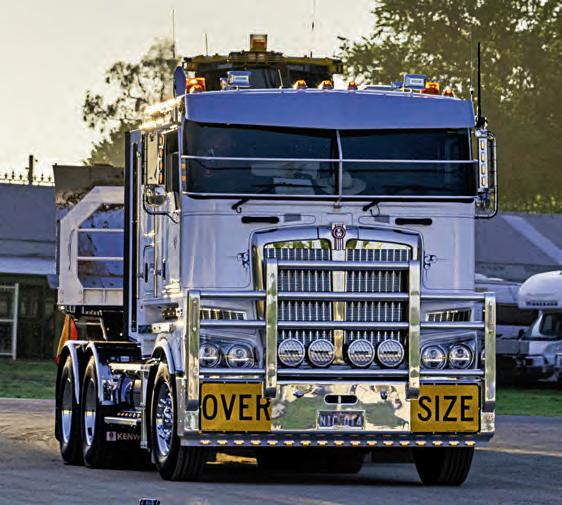

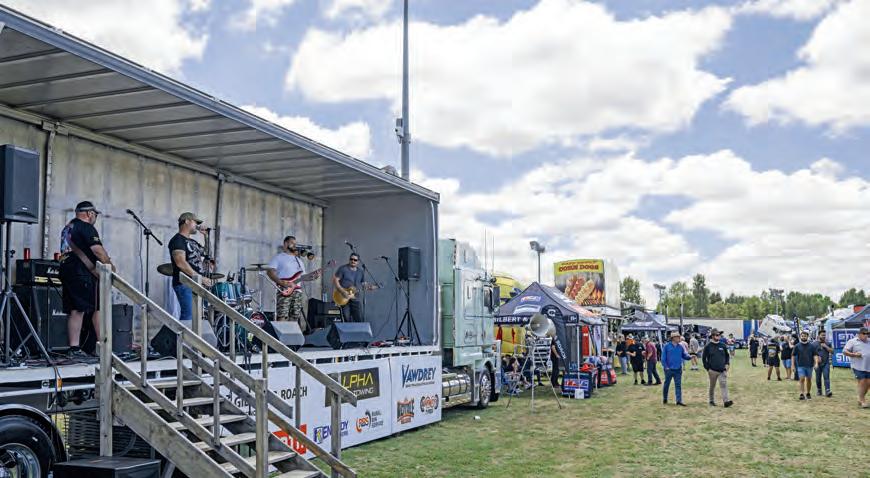
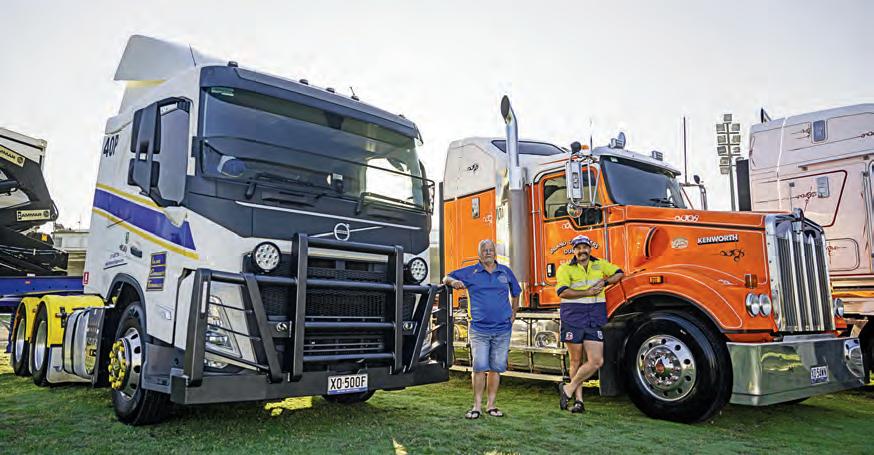

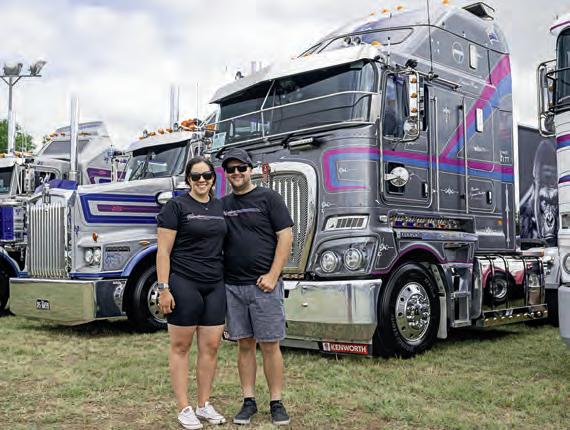
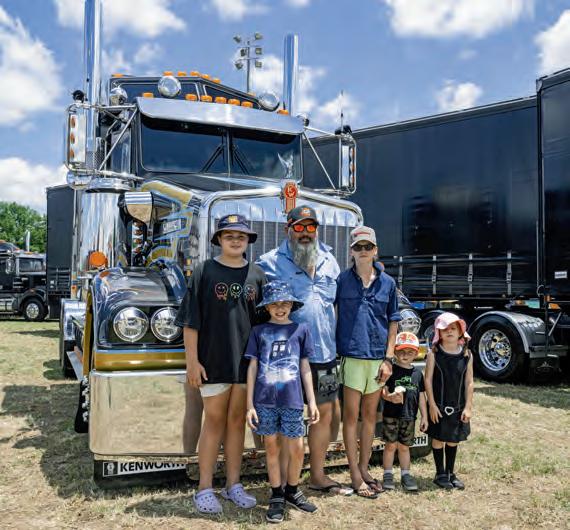
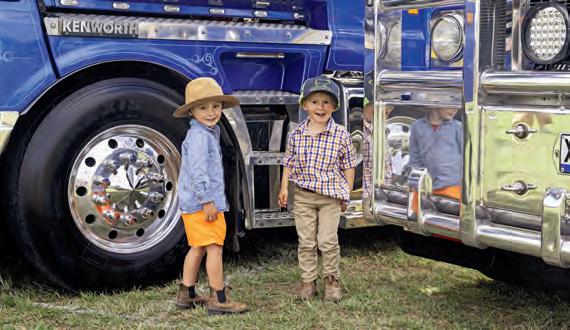
as the amazing C&T Dwyer Loggers, you could be forgiven for thinking that NSW have been replacing their bush tracks with golden highways. The log trucks were cleaner than my tarseal only ute, and I wash it three times a week. Even the logs looked perfectly manicured.
The Lawrence team rocked up from Sydney with their always immaculate Large Car fleet and happily sat centrefield doing what their trucks always do – looking cool. As is the norm, Nathan Smith and his entourage from Winston Express made the journey through Friday’s rain to put on another stunning display of shine with some big bonnets, big cabs and big characters.
The local transport companies are always out in force – the likes of Cranstons put on a prize-winning display with their Kenworth fleet. I reckon it was their workaholic Mack they had in the corner that got them over the line for the best fleet award though.
It wasn’t all about the big rigs – the Dane Ballinger Memorial Show also includes a historic truck show segment as well. There were several epic looking old working girls, as you will see in the photos, but it was Les Bird’s 1967 1418 Mercedes that ticked all my boxes. This stunning restoration, named ‘The Power and the Glory’, was a classic looking piece of history.
As I have happily recalled during every Dane Ballinger Memorial wrap up, another great feature of this show is the fact it parallels the Bathurst Outdoor Expo and Christmas markets. This allows bad planners like me to stock up on either quaint Christmas gifts, obscure animal remedies, tantalising tasty treats or just buckets loads of biltong, all of which I managed to cover. Having the two events run simultaneously is a real benefit
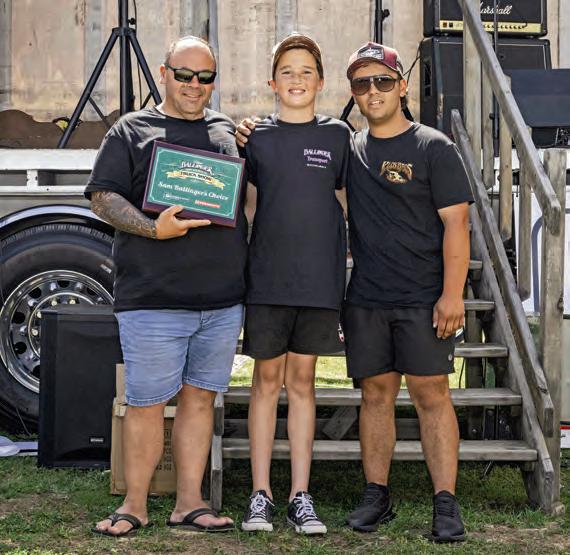
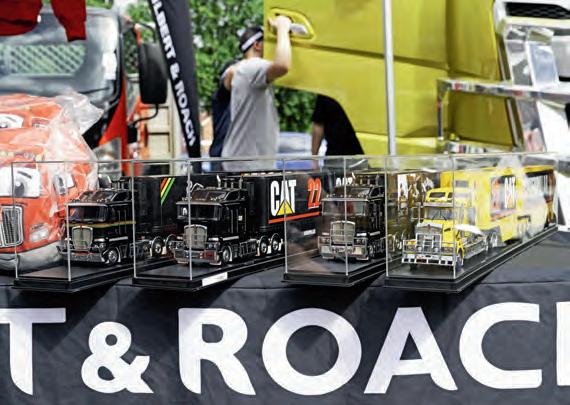
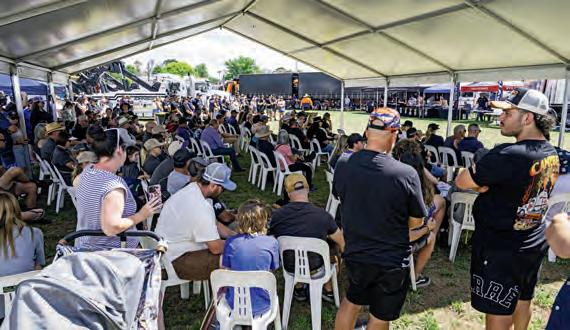
to both events. Aside from just lazy Christmas shopping, there is plenty to see and do with markets and stalls as well as the truck show. It is nice to take a wander to the outfields of the showgrounds and have a peak at the country markets. It also means the locals out and about for the markets end up lured in by the chrome and polish. This was especially evident this year with hordes of first timers walking through the show and appreciating the amazing rigs, as well as Jamie’s outstanding parking plan.
Winning a show like Bathurst is a tough feat – there is shine upon shine, staunch upon staunch and worthy winners upon worthy winners. Honestly, you could have crowned at least half a dozen King Rigs, that’s how tough the competition is at this event.
Winning the show twice in a row is a feat even Adrian Fenech never even dreamed of achieving. However, the young man behind the wheel of his own K200 did just that.
“I really can’t believe it,” he says when I catch up with him after the show. “I am blown away, I did not expect this.”
While the young father and one-truck owner may not have expected back-to-back wins, when you get up close to his stunning K200, you can understand why. For a truck that spends most of its time covered in dust and debris, it is absolutely immaculate. Even after a trip up from Sydney in the rain, Adrian had the K200 glistening and rightfully earned his back-to-back trophies. The question is, can he be the first to achieve a three-peat?
You will just have to add the Dane Ballinger Memorial Trophy in Bathurst to your truck show list for 2025 and come and find out. If that’s not enough of an incentive, you will learn some creative parking techniques from the guru of guiding, Jamie Woods, because he will definitely be back next year.
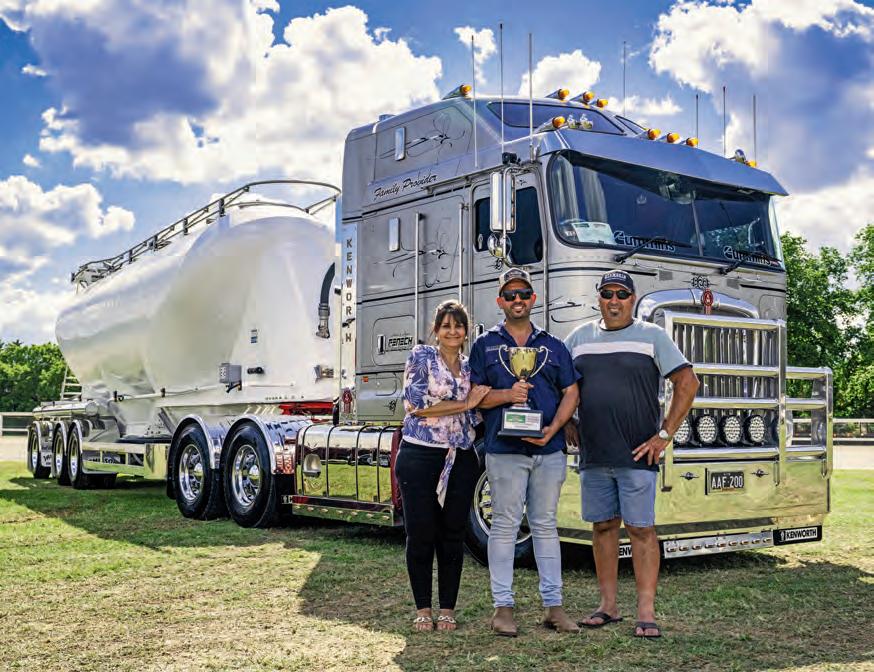

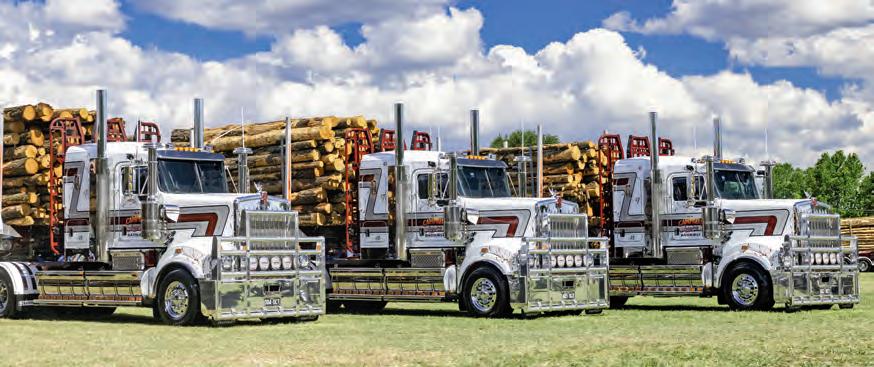
This page, clockwise from top left: Sam Ballinger with this year’s recipients of the Sam Ballinger Choice award. Sam’s choice was the stunning JDN T909; Congratulations to Adrian Fenech on a deserved second win at the Dane Ballinger Memorial Trophy. I caught up with him and his mum and dad Rob and Doris Fenech; Chris Tibbits and the Best Large Car winner – the stunning Schaeffers K200; Just a few of the D A Campbell logging fleet looking the part; It’s getting to the point where the outdoor gazebo needs to get a little bigger. Better Bathurst weather and increased interest in the show means it gets a little cramped under the canopy these days; Thank god for carry on limits when flying, otherwise these awesome Gilbert & Roach models would have flown home with me
Opposite page, clockwise from top left: The Ballinger fleet looked as stunning as ever at this year’s event. It’s a scene Dane would have been immensely proud of; I was focused on the stunning Winston Express K200 and thought I should include driver Alex ‘Pose’ Gutteridge and his lovely wife Meaghan; It is all about the family fun day at Bathurst. I caught up with Jarrad Gould and a full tribe of truck nuts Surayah, Liam, Ditch, Ollie and Evelyn; three year olds Lewis and Clancy were dragged down to the markets with mum and dad but were much happier when they found their way into the showgrounds with all the shiny trucks; Local company Balls Transport had another impressive display, picking up several trophys with their outstanding trucks; Father and son duo, Robert and Todd Thompson from Inland Container Services had their rigs shined up early and are ready to sit back and enjoy the day; The stage was well set and ‘The Rock Cartel’ keep the entertainment rocking throughout the day.







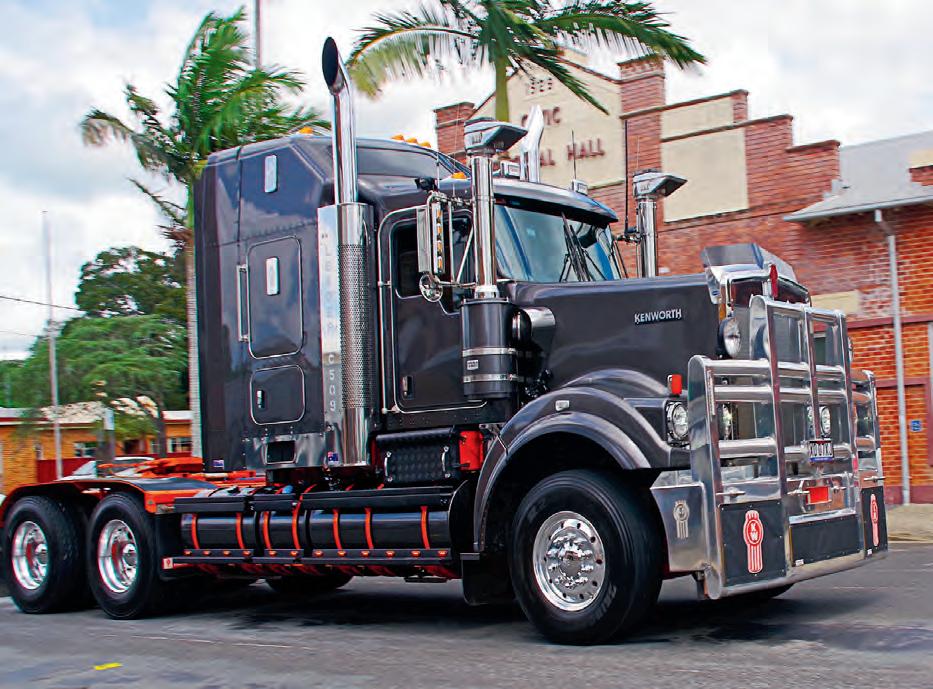



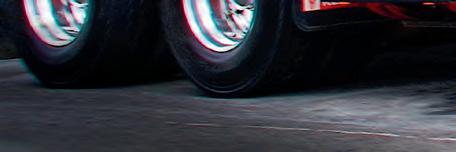





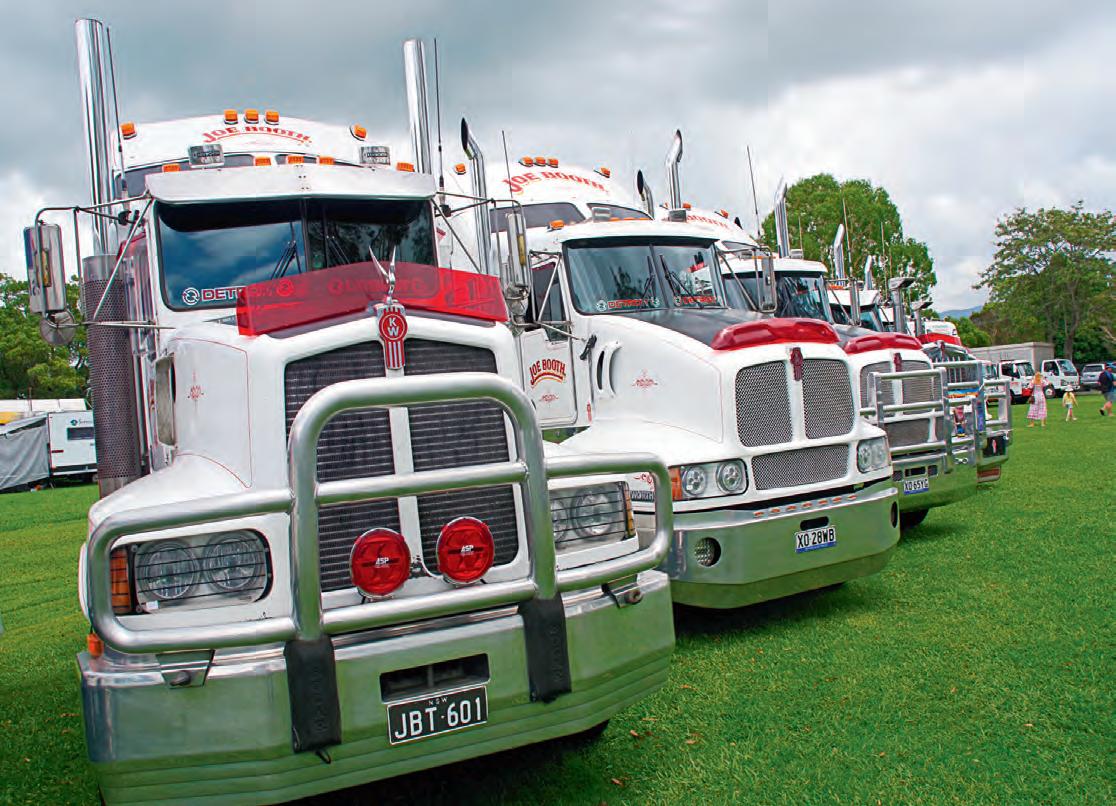



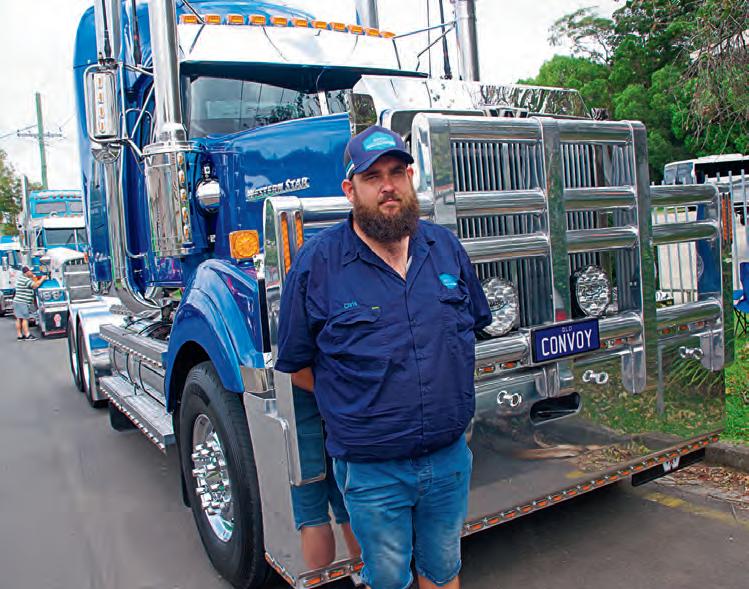


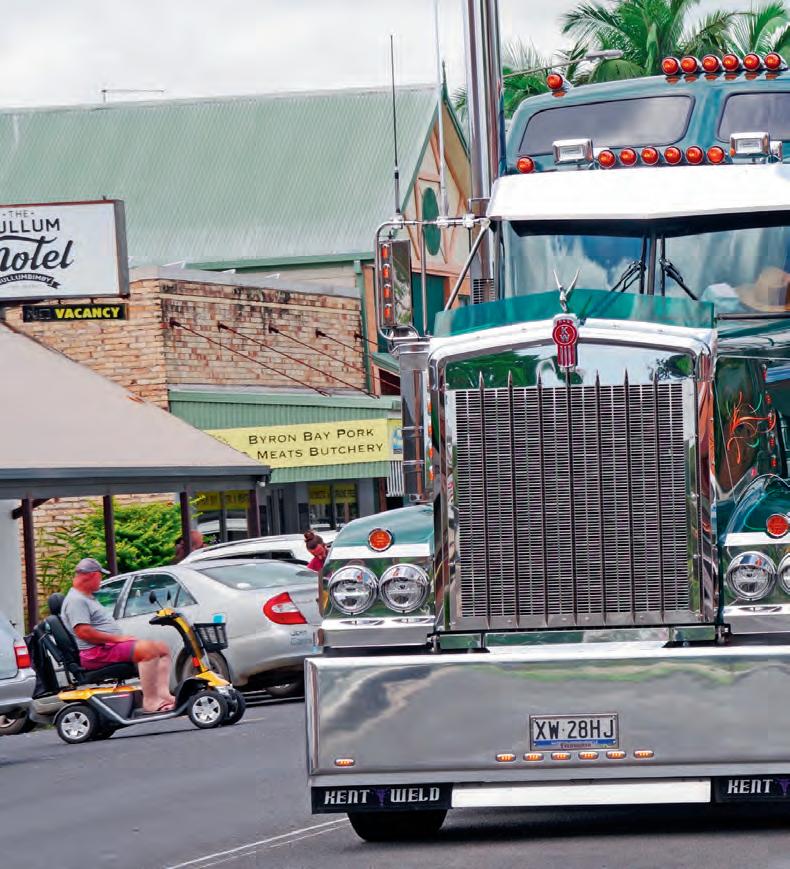






The annual Mullumbimby Truck Show, while not the largest event of its type on the calendar, simply beams with quality and camaraderie set in one of the most picturesque towns in Australia. Greg Bush writes
The roar of diesel-powered trucks of various makes and models broke the serene ambience of the northern New South Wales town of Mullumbimby on November 9. The occasion? The running of the Mullumbimby Truck Show. As in previous years, the not-for-profit truck event was held in conjunction with the annual Mullumbimby Agricultural Show, the trucks being a vital part of the three-day rural show.
However, unlike similar truck shows around the nation, local organisers are happy to keep truck numbers within a manageable range.
“We normally get about 80 to 90 trucks,” says Mark Ward, owner of Wards Truck and Machinery Centre at nearby Tyagarah. “Ninety is good for us; it’s a good crowd.”
Mark and his wife Nikki have been organising the truck show since its inception in 2009. Mark, a former interstate truck driver, had originally planned to hold the inaugural event at the local rugby league club. However, the Ag Show committee saw the trucks as a way to add value to the annual three-day event, persuading Mark to join in on the festivities.
“The industry was having a bit of a bad name back then, these local people didn’t know anything about trucks and I wanted to show them up close how big a truck was to create a bit of truck awareness,” Mark says.
There was plenty of opportunity for the general public to view the big bangers at close range at the showgrounds. Earlier that day, the truck show participants gathered at Mullumbimby’s industrial area on the town’s east side, registering the trucks
while enjoying a bacon and eggs breakfast put on by Mark and Nikki. Right on 11am, the truck convoy wound its way through the town’s streets to the showgrounds.
Typically, the Kenworth brand made up the majority of entries, although one could be mistaken in thinking that the Mullumbimby Truck Show was a reunion of Brown & Hurley customers, especially from the Kyogle dealership. For regular attendee Carl Bursle, that connection holds extra significance.
Carl drove his K200 to the show from Lismore, the truck categorised by the large banner on the grill commemorating his father John Bursle. John passed away from bowel cancer 15 years ago after a long career sub-contracting to TNT.
“Dad originally came from Kyogle and went to school with Jim Hurley,” Carl says. Hence, just like his























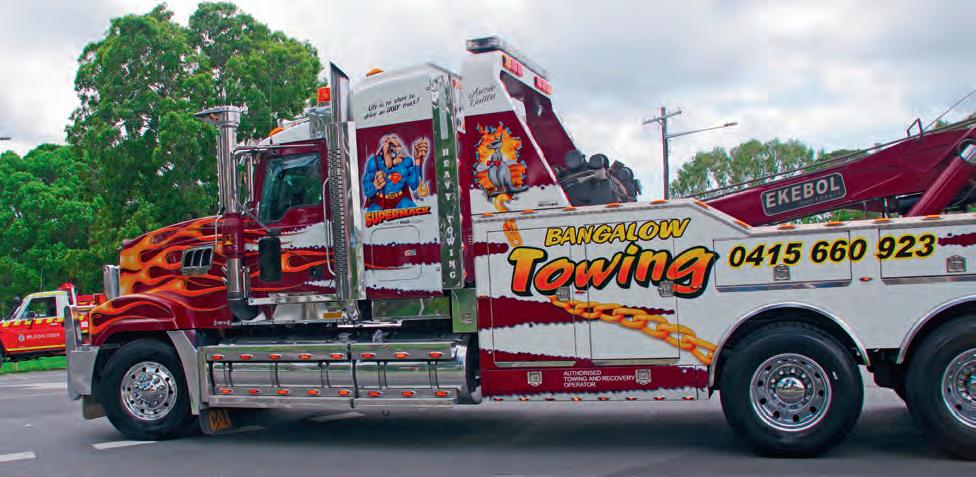







front of you, you’ll have an AB-triple when Coffs Harbour and the Hexham Bridge are done, so blokes will probably lose jobs because you’re getting another A-trailer. None of the depots are big enough.”
A one-truck owner, Carl bought the K200 two and half years ago for his nightly runs between Brisbane and Sydney. Even then, he was planning ahead.
“When I picked this up, I got Drew Anderson at Kyogle to order another one for me. It’s getting done up now,” he says.
“I’ve got this one sold; I’ve got five blokes chasing it now.”
Carl’s Kenworth cab-over wasn’t the only K-model in town by a long shot. Jeff Campbell, who was born and bred in Mullumbimby, rolled up in one of AJ Flynn’s K200s, one of seven in the company’s fleet. A former interstate driver, including a stint with Shoobridge Transport, Jeff now confines himself to local runs from Lismore to Brisbane and back. However, despite the K200 looking the goods, he wasn’t overly concerned about winning a Mullumbimby trophy, mostly due to his young passengers in tow – nephews Harvey, aged 4, and Hughie, 3.
“Their grandfather is Mark Ward. My sister married Mark’s son Mitch, so if we win an award later on, don’t think it’s preorganised,” he says.
Jeff is another unashamed Kenworth devotee, although he drove a Scania for Shoobridge in his interstate years.
“I’ve been at Flynn’s for about two-and-a-half years. But back when I was 19 and 20, I started with Tony Flynn, Andy’s brother. It was the other Flynn Transport with the fridge vans that went bust,” he says.

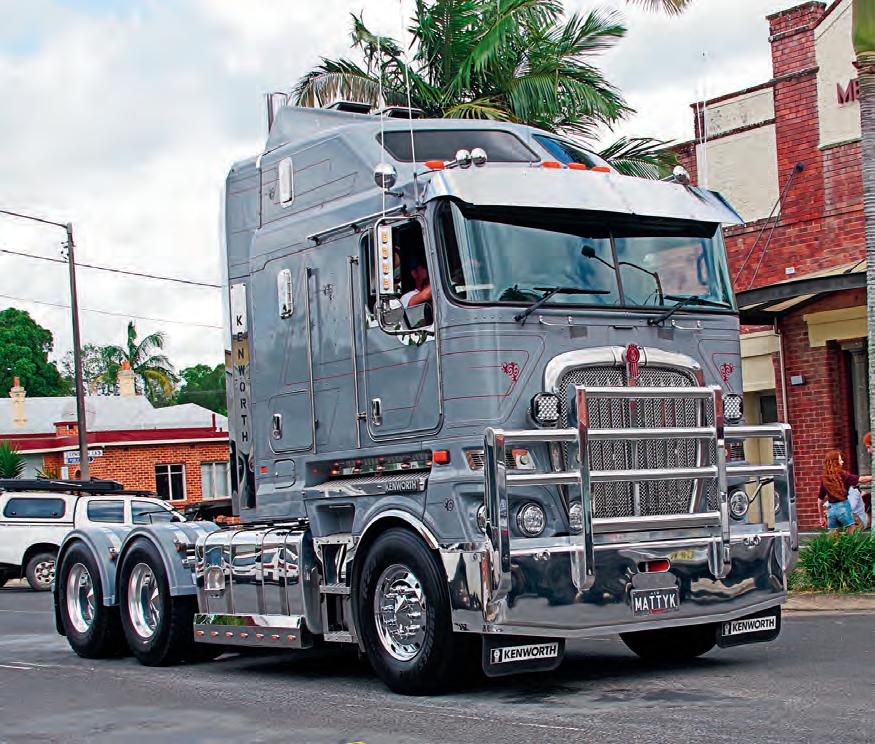
“That’s where I got my start, so it feels like I’m home again.”

The Kenworth numbers were boosted further with Joe Booth Transport, who won the Best Fleet trophy, edging out Shoobridge Transport with its mixed makes. Hardy’s Haulage, with its fleet of Kenworths, was another worthy contender in that category. Hardy’s long-term driver Graeme Russell, who regularly pilots a T610 SAR for the Pottsville-based business, says work commitments usually take precedence over attending truck shows.
“We’re always busy, always working, but we were lucky when everyone got into the yard yesterday where the trucks are all kept in good condition,” Graeme says.
“Everything is in really top nick.”
That’s somewhat surprising because Graeme points out that many of the trucks run on dirt and out in the bush.
“We do tippers in Queensland, NSW and Victoria,” he says. “I run mainly down south, across to Adelaide and down to Melbourne.”
Hardys celebrated its 50-year anniversary in 2020, and it has continued to buy its Kenworths through – you guessed it – Brown & Hurley, Kyogle.
Local representation
It wasn’t all Kenworths, though, as other truck makes managed to snare plenty of interest throughout the day. Mullumbimby Reliable Removals, with its fleet of Scanias, flew the flag for the local transport industry. Adam McKenzie, along with fellow co-owner Chris Mott, have operated the business for the past 18 years.
“It used to be Stan Robinson Removals, which was around 60 or 70 years before us,” Adam says.
“Every week we’re either in Melbourne or Sydney, or once a month in Cairns.”
With most of their customers intent on moving north to swap the rat race for greener pastures in northern NSW and
Top, L to R: Winner of the Best Truck 0-2 Years was Leader Earthworks’ Kenworth C509; Mullumbimby Truck Show organiser Mark Ward, ready to lead the convoy through to the town’s showgrounds; Jeff Campbell from AJ Flynn and his nephews Harvey and Hughie ready for the ride through town in the company’s K200
Above, L to R: Joe Booth Transport’s Kenworths were at Mullumbimby in full force, winning the Best Fleet trophy; Chris McSweeney’s revamped 2008 Western Star 4900 was undoubtedly a popular entry, winning the Crowd Pleaser award; Bangalow Towing’s Mack Super-Liner, winner of the Best Tow Truck category; Matt Biddle Transport’s stunning Kenworth K200, driven by Dylan Estreitch, on its way to winning the Best Cab-Over trophy




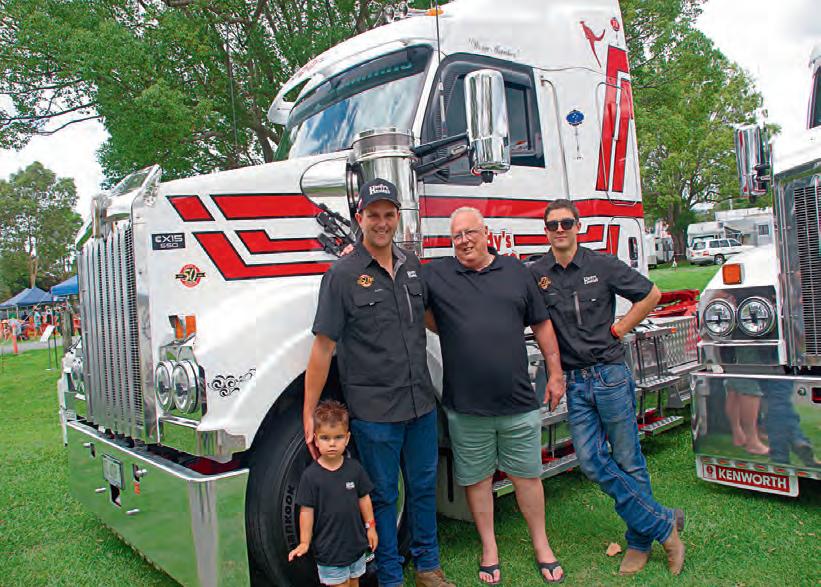








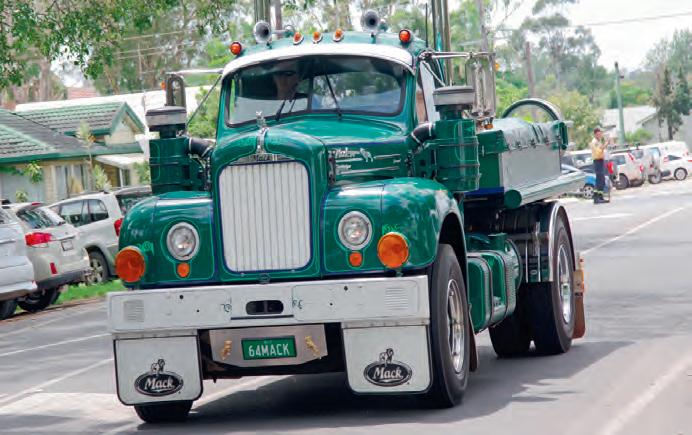












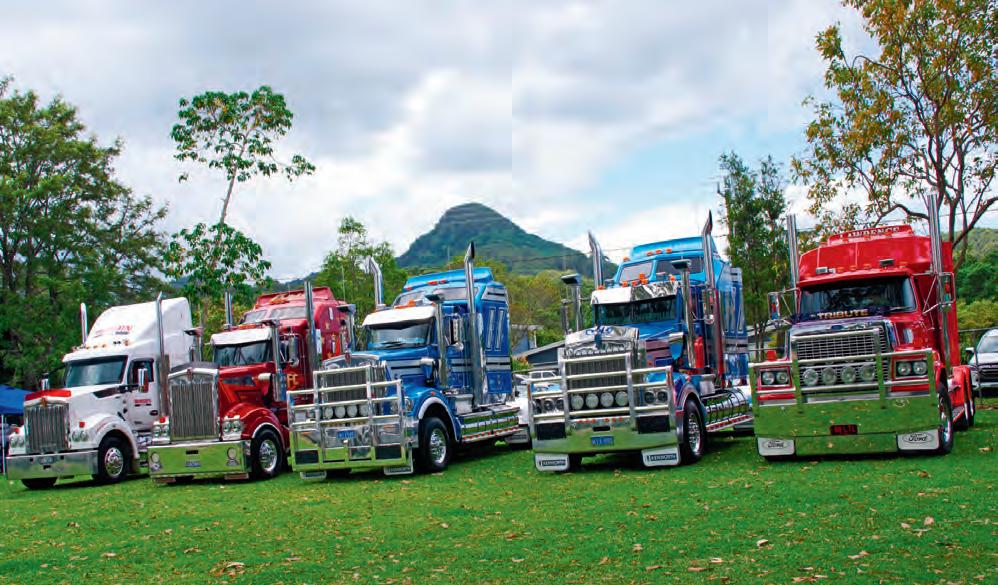




award; Hayden Lyons, under the banner of Darren Powell Transport, brought this Kenworth T659 to Mullumbimby; It was a great day for Tony Abood and his Truck of the Show-winning 50th Anniversary Kenworth Legend SAR
Above, L to R: Mullumbimby boasts a picturesque setting for truck show attendees; Brad Heppell’s 1979 Atkinson won the Best Heritage Truck award; The trucks lined up at the Mullumbimby Showgrounds; Carl Bursle commemorates his father, the late John Bursle, every year at the Mullumbimby Truck Show
its early years, drove a Mack Trident to the show. Owned by earthmoving outfit J & M Bashforth & Son, the Trident boasts a 535hp Mack MP8 engine.
“I think I’ve been coming here since 2010. I put my old Trident in then and it won, but there weren’t may tippers in that year,” Tony says.
Bashforths operates almost all Macks, with one sole Scania in its fleet.
“I drove mostly just local, just tipper work and landscaping supplies, but we do a bit of stuff out of Bribie Island,” Tony says.
At the other end of the tipper scale, young Blake Wheatley drove his Kenworth T350 down from Bilambil near Tweed Heads. In his first appearance at Mullumbimby as a driver, Blake was proudly there with his father, Rob Wheatley, who entered a T604 in the show.
“Dad’s always had trucks, that’s why I’m into it,” Blake says. “I live and breathe trucks. You grow up with it and it’s in your blood; there’s nothing you can do about it.”
Still on his P plates, Blake is slowly building up a customer base, despite being currently limited to a rigid licence.
“I’m still on green Ps on my car, so I’ve got to wear it until I get my full car licence,” he says.
A 2007 model with 60,000km on the clock, Blake explains that the T350 was originally sent to Japan to operate as a fuel truck.
“Someone brought it back here and it’s been used as a yard truck in Brisbane ever since, and that’s how we got it,” he explains.
Since purchasing the Kenworth, Blake has added niceties such as square tanks, stainless rims and carbon fibre front springs. That work was completed just two weeks before the Mullumbimby show.
The T350 wasn’t the smallest truck at the show by any means. Not including a mini-Mercedes-Benz that took part in the convoy, vintage Macks and Internationals harked back to a bygone era of Australia’s road transport industry. Also looking dwarfed by the presence of big prime movers, a couple of Japanese trucks from Frank Vanz Lismore Tyre Company shone through with one of its


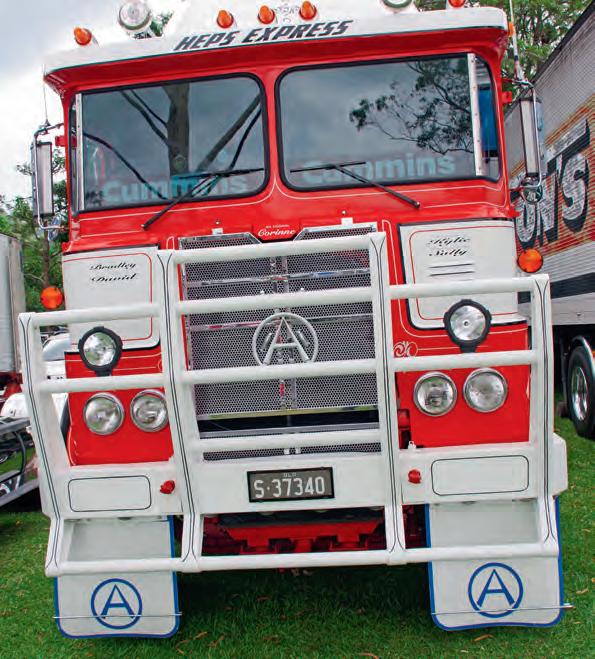
Isuzus winning the Best Light Rigid trophy.
wheel of a company-owned Hino 300 with his wife Kahlia and niece Lila in the passenger seats. Sadly, as Fredie explains, his dad Frank Vanz passed away eight months previous.
“Dad’s been coming here for years,” Fredie says. “That’s my mum and dad on the side of the truck,” pointing to the livery on the Hino’s van.














“I thought I’d come up this year because we got this new truck, the Hino 300. It’s like a little go-kart, a good truck to drive around in.”
As well as the local area participation, truck and drivers also arrived from south-east Queensland and from points further south. One such driver, Chris Kerrigan, drove a Cromack Transport FH Volvo up from Grafton in a sort of homecoming.
“I’ve been living down there for 20 years now,” Chris says. “I grew up in Byron Bay and went to high school there. Byron Bay was a nice town then.”
Chris’ plans for the day were to catch up with mates, have a couple of beers, stay the night and head back on the Sunday morning.
A little closer to home, Chris McSweeney brought his 2008 Western Star 4900 down from Casino. With the Star recently being refurbished, he thought Mullumbimby was a great opportunity to show it off.
“It’s had a paint job, a new 14-litre Series 60 Detroit, and lots of lights,” Chris says.
But it was the truck’s ‘convoy’ number plates that attracted extra interest.
“They were originally on a Freightliner, bought for the Convoy for Kids in Brisbane,” he says.
Chris spent the previous day washing the truck, although a sprinkle of rain on the drive from Casino meant a further touchup on the morning of the show. However, despite winning the Crowd Pleaser award at the show, Chris’ Western Star and the other contenders ultimately lost out to Abood’s Crane Trucks 50th Anniversary Kenworth SAR Legend for the coveted Truck of the Show trophy. The company’s founder, Tony Abood, has been based at Tweed Heads since 1988, moving up from Sydney where he had worked for his father, Cedric Abood. Tony ordered














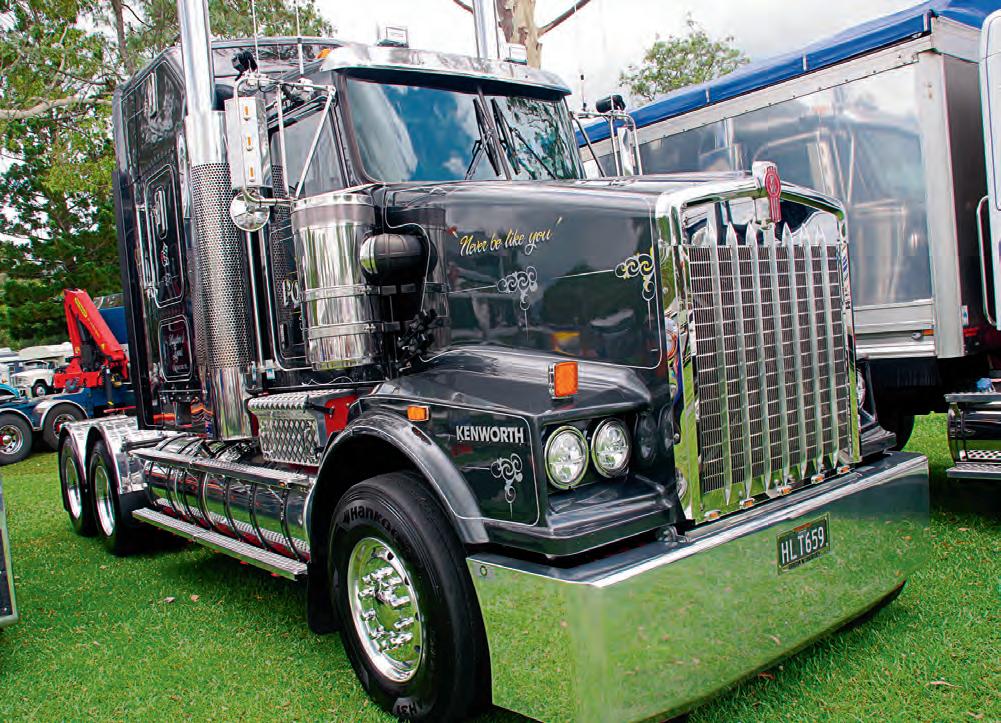








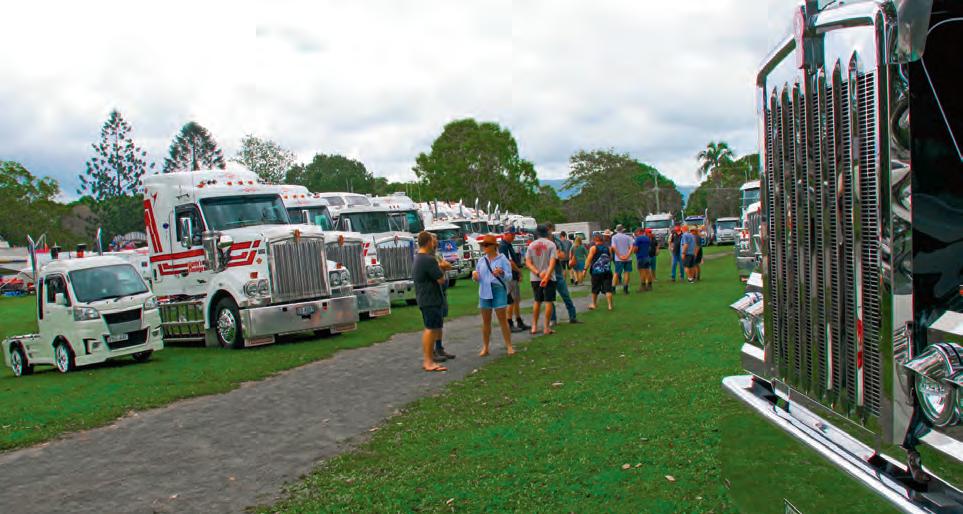
the Legend in 2021, but only picked it up in March this year from Brown & Hurley, not from Kyogle, but from the Yatala dealership between Brisbane and the Gold Coast.
“It’s been a long-winded project,” he says, adding that the initial delay was due to COVID.
“They couldn’t get parts and a lot of people had big orders, so when you only order one you go back to the end of the queue a bit.”
Despite the delay, Tony was delighted when he picked the truck up from Yatala.
“Kev Hurley came up from Kyogle to hand over the keys, which was a bit of an honour,” he says. “I’ve been buying trucks off them for over 30 years now.”
It was Tony’s second Mullumbimby Truck Show, bringing along a T410 as well as the Legend. But with the prized trophy now on his mantlepiece, he’s almost certain to be back to the charity fundraising event next year.
As Mark Ward explains, monies raised at the truck show cover costs as well as making donations to various local worthy causes.
“What we make out of the nominations, we buy trophies for the trucks,” he says.
He also runs a separate bar for the truckies and their families, with the keg beer raising money for the truck show and the packaged beer sales going to the Ag Show, of which Mark is also president.
“The money out of the keg beer we split into three or four different charities – Marine Rescue Helicopter, the Brunswick Surf Club who also run the bar, and Our Kids in Lismore which looks after sick kids,” he says.
“We give them some money, but not every year. We try and work it out to whoever needs it. At the end of the day, no-one makes a dollar. We start with nothing and we end up with nothing.
“The show doesn’t see any of that money. That’s how I like it because I catch up with all these guys, have a few beers and give them another serve of bacon and eggs in the morning. When you can see what the effort that these guys put in, it makes it all worthwhile.”
The Mullumbimby Truck Show is a unique event and it’s back in 2025 at its regular date of the second Saturday in November. See you there!












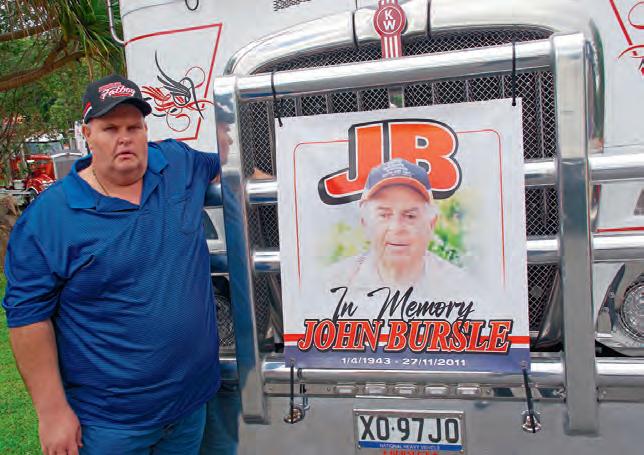
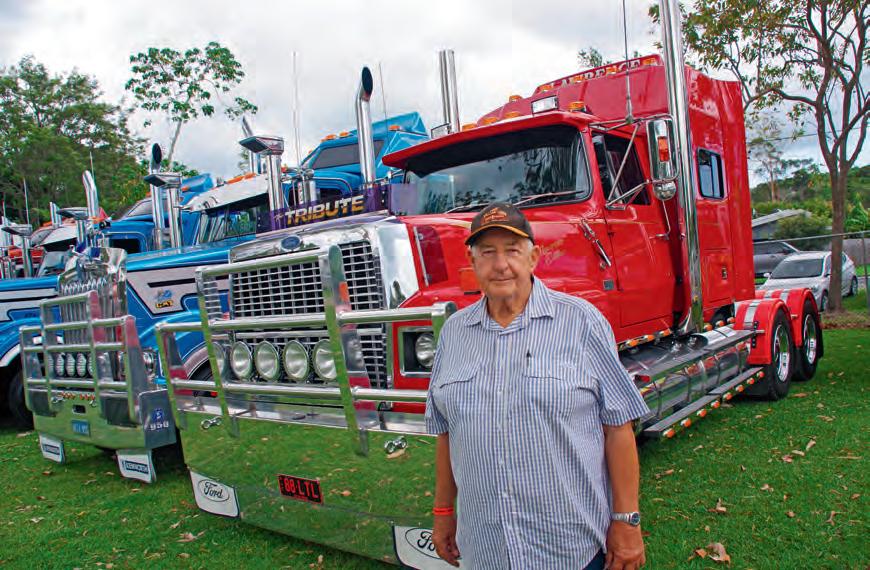



John Lawrence no longer drives interstate. Nor does he operate a transport company. He’s long retired, but he still maintains a love for the industry with his showpiece 1988 Ford LTL 9000.
The former owner of J & L Haulage, John and his son Brad bought the old Ford three years ago with the aim of giving it a makeover.
“It wasn’t in good condition,” John says. “We spent about 18 to 20 months rebuilding it in the shed. All the work was done in-house.”
John is well familiar with the Ford brand through his former transport business, but they proved to be impractical in the long run.
“We used to have trucks on interstate and we always had a Louisville,” he says.
“We went to Kenworths then because of the lengths. The long-bonneted truck was over length.”
The old Ford’s appearance is a credit to John and Brad. The ‘tribute’ moniker on the truck was Brad’s idea – a tribute to his dad.
Nowadays, gone are the days of worrying about regulations, although despite the Ford running under heritage registration, he still calls in at weigh stations.
“If they’re open, you pull in,” John says. “But they usually don’t worry you and wave you through.”
The truck regularly takes its place at shows not too far a drive from John’s home at Mt Warren Park in south-east Queensland, including Lowood, Lights On The Hill, Casino, Beaudesert and, of course, Mullumbimby, where this year the Ford was runner-up in the Best Heritage Truck category.
To make the truck show life easier, John has a caravan-hauling LandCruiser accompanying the Ford to event locations. For Mullumbimby however, he made an exception, pointing to the Ford LTL 9000’s cab.
“I’ll sleep in this tonight,” he smiles.

With decades of experience under his belt, Shane Pendergast shares the importance of regular brake maintenance for heavy vehicles with Tiarna Condren
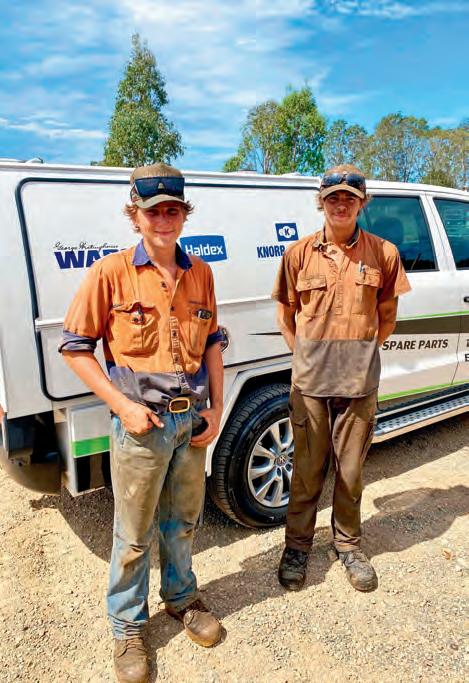
Ionce crashed my car.
It was a stupid mistake, my teenage self tempting fate by going ever so slightly over the speed limit on a dirt road.
Taking a corner, it wasn’t long before my wheels got the best of me and suddenly, I was spinning out of control.
While the front end of my 2004 Ford Focus went head on into a sand bank, luckily, my braking system enabled me to stop the vehicle from ploughing into a sea of trees.
Since that day, I have always ensured that my brakes are well-maintained and take pride in getting them serviced.
While a top-notch braking system is imperative for cars, it’s even more critical that the trucks heading down Australian roads are fully equipped.
Data from Transport for NSW indicates that a B-double travelling at just 40km/h can take up to 44 metres to stop. If travelling at 60km/h, that same truck would need approximately 90 metres to come to a standstill.
Imagine if the brakes weren’t up to speed?
Sitting down with renowned service technician Shane Pendergast from Air Brake Systems in Sydney, he warned of the importance of these systems.
“You may only ever call upon that safety system once in your whole driving career, just once,” Pendergast told OwnerDriver
“And the day you call upon that system to work, you need it to work. It may be the only thing to get you home safe to your family.”
Shane earned the prestigious Craig Roseneder Award for Technical and Maintenance Excellence back in 2023, as recognition for the work he’s done both in his service role and in educating the industry around EBS and rollover systems.
Working in the industry for decades, Pendergast has managed to pick up a tip or two that he feels are incredibly important.
“Don’t ever ignore a warning light on your dashboard,” he cautions.
“The warning light is there for a reason – it’s to
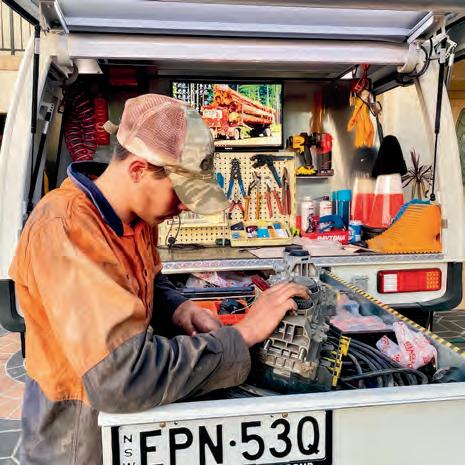
tell you that the system has got a fault in it and don’t ignore it.”
He says one of the major issues he has come across is drivers ignoring the signs that indicate that something is clearly wrong.
“Whether they’ve been driving for six months or 50 years, some drivers think that everything will just be ok, but that’s not the case,” he says.
“You need to be vigilant and constantly checking to make sure it is up to scratch.”
One of his biggest takeaways is servicing the braking systems every time the trailer is serviced.
For those who have purchased the diagnostics and the connection cases to do the diagnostics every time a trailer is serviced, this is made even easier.
“Every time a trailer is serviced, a fault free download from that trailer is captured,” he says.
“This is the perfect opportunity to double-check the systems and something that I always teach for fleet training.
“Also, if you feel that something is wrong, get involved. Ring, call. Keep calling. Don’t let a small problem develop into a huge problem.”
While Pendergast can only do so much when it
comes to educating drivers, he dedicates a lot of his time to teaching the next generations of service technicians.
“My speciality is EBS braking and roll stability control systems, focusing on the maintenance, upkeep and education around the systems,” he says.
“That’s now developed into a lot of my time spent actually training mechanics how to maintain them and keep them working.”
One of the best ways to ensure the newcomers will be successful, he says, is to get them excited about the work.
“The first thing with our current generation is to try and get them enthusiastic, because if you don’t have a passion for your chosen trade, you just shouldn’t be involved at all,” he says.
He says the fast-tracked way of building this excitement is by walking them through the history of the trade and the industry as a whole.
“Most people that are involved in transport do have a passion for trucks and trailers and machines and engines and all that stuff, so it does go hand-in-hand,” Pendergast says.
“But I will sit with them, find out their favourite brand or truck, and then use that as a way to start teaching and training them about technology in a way that will get them interested.”
His methods have been proven to work, accumulating praise and accomplishments over the years that are a signal of the work he has done.
“I just want to ensure that every truck that hits the road is safe, and that the driver will make it home,” he says.
“Being able to share years and years of experience to younger guys is just so enlightening.”
Pendergast and Harry Chard, his first ever trainee
Opposite top: Pendergast teaching a workshop session at TMC
Opposite middle: Teaching Riley Donoghue, another trainee the ropes
Opposite bottom: Both trainees after a long day under the cab
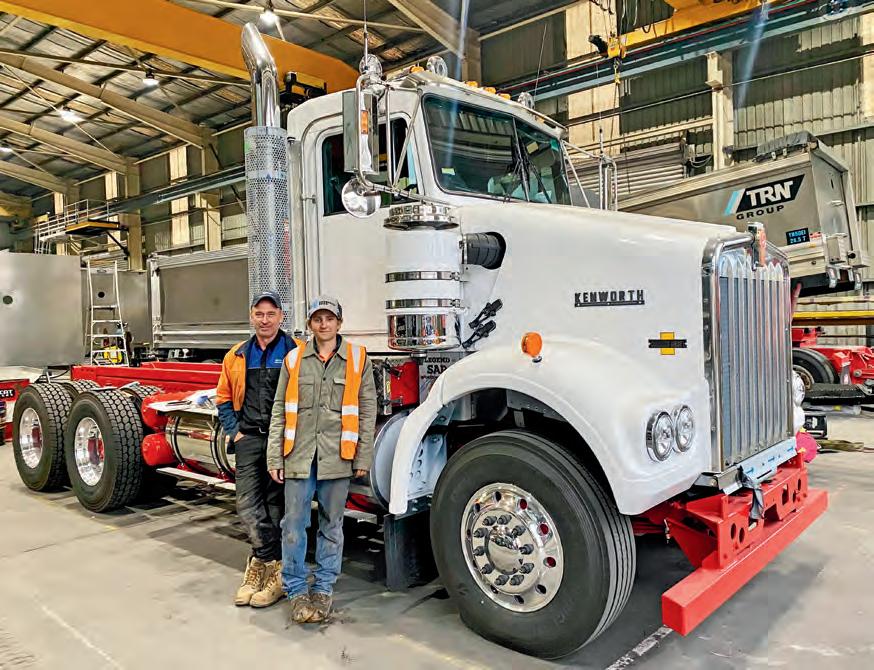




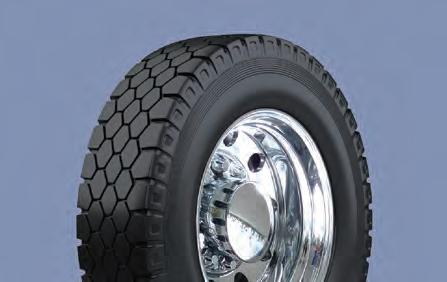

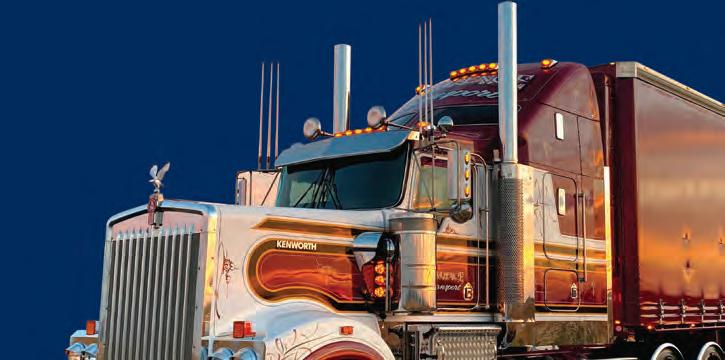
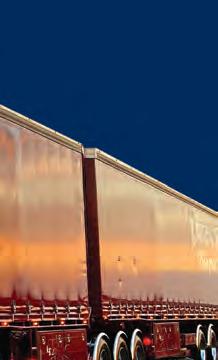

















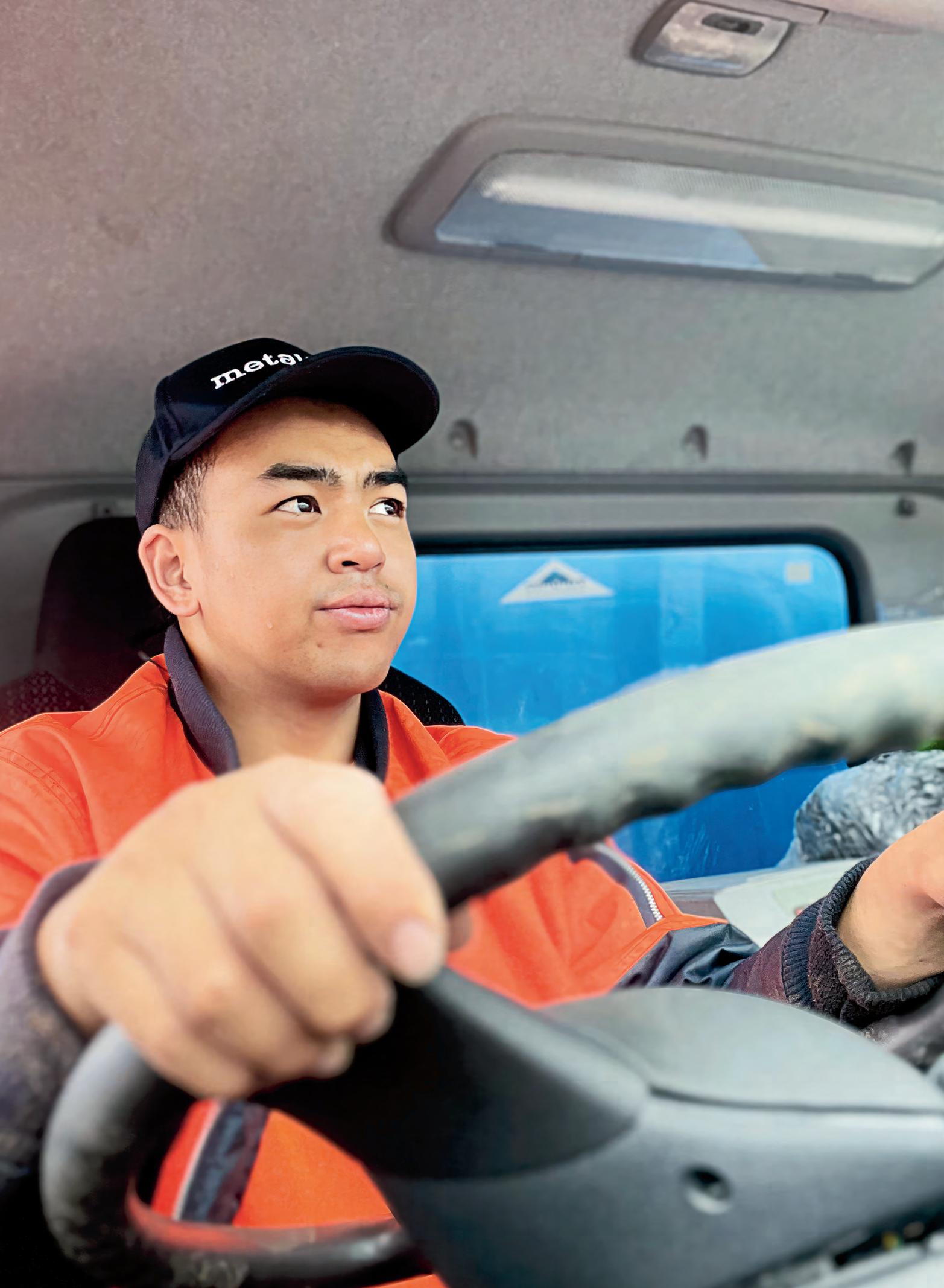

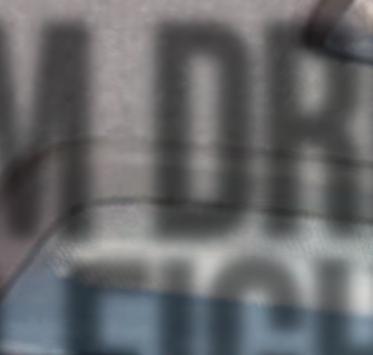




While Ben Nguyen is part of the younger generation of truck drivers enjoying life behind the wheel by day, Sean Mortell found out at night he becomes Happy Kai – the emerging local wrestler


Images: Ben/Happy Kai

For many, driving trucks is an allconsuming lifestyle, with long hours spent behind the wheel and the time in between spent resting and seeing loved ones. While plenty of Australian truck drivers hit the road each day without a thought of their life outside of their family, friends and career, there are some drivers who have plenty going on beyond the transport industry.
Ben Nguyen is one of these people, with the young man also living his dream of becoming a professional wrestler when he’s not behind the wheel.
“I would be lying to you if I said I got into wrestling as a kid and didn’t watch WWE all the time,” Ben told OwnerDriver.
“It’s a staple for any of us wrestlers. When I finished high school, I tried to get into the filmmaking business, where a friend of mine introduced me to a university project that involved local Australian wrestling.
“I didn’t even know there was a local scene for wrestling, I only knew about WWE.”
While wrestling was always a passion for Ben before he stumbled into the local scene in Melbourne, he also had a deep love for trucks that started with watching garbage trucks complete their weekly runs on his street.
“As a toddler, I just loved how garbage trucks worked and how big they were,” he says.
“I also used to love Transformers, and my favourite was Optimus Prime, who turned into a truck, so I always had a soft spot for trucks and anything to do with them.”
Despite this passion, Ben never had a strong urge to be a truck driver when he was older. However, as he went through his schooling years, he began to develop a feeling that fate would intervene and he would become a driver. Despite this sense, he tried his hand in some other fields before once again falling into the sector.
“I was first a baker for five years before I got sick of the super early starts – I remember reaching breaking point when I did a 17-hour shift – I knew then I had to find another job,” Ben says.
“I then got a job working at a truck and trailer yard, which reignited my interest in trucks. From doing that gig, I learned the basics of hooking and unhooking trailers as well as working with different trucks and prime movers.
“Following that, I got my own licence and got work with a truck company where I began completing deliveries of roofing supplies before moving to now
delivering split systems and units.”
Nowadays, Ben loves driving around by day and completing local deliveries over set hours each day. While some drivers love the long haul work, Ben’s schedule allows him to explore his passion for wrestling outside of truck driving that has already seen him rise in the local Melbourne wrestling scene.
“After getting introduced to wrestling after school, I started training with wrestling coaches and learning the tricks to the trade,” Ben says.
“Melbourne City Wrestling (MCW) had an academy at the time and I tried out for it.
“It was such a tough circuit that was designed to make people throw up.
“I did the trial with 32 others, including a bunch of different athletes who played AFL and other sports. It was tough but I survived, with 12 of us left at the end.”
Ben then entered the little-known world of wrestling schools, where he became part of a community learning the art of wrestling. For three years he honed his craft at Professional Championship Wrestling (PCW) in Melbourne’s Ferntree Gully before COVID intervened and he took a break.
“By then I didn’t think it was for me, so I had some time off,” he says.
“By the time COVID lockdowns finished in Victoria, I had the itch to get back into it, so I started training with Relentless Wrestling.
“I still train there now – it’s one of the best wrestling schools out there. It’s like one big family with a wonderful culture.”
that you’d get a pathway through to the events, but I didn’t, I had to jump through different hoops just to get there, but it made it all the more special when I did get there.”
In the lead-up to the event, Ben went all around Australia, wrestling in interstate matches to prepare for the MCW night and improve his skills.
While he is adamant that he is improving his craft each time he wrestles, he has had some tough nights with the crowd.
“Most of the time, the stuff I do works and the crowd loves it, but there are times when I would wrestle in different places where it isn’t that easy,” he says.
“In places such as Adelaide, I’d try and do the same shtick to the crowd and it wouldn’t go as well. Luckily, MCW still appreciated what I did, and on the night the crowd reacted well.”
Now, Ben is looking to continue his wrestling journey while enjoying his time spent behind the wheel each week. On the truck driving side, his goal is to further develop his skills and capabilities to become a safe and efficient driver until he can drive bigger trucks.
“I am aiming to enjoy my driving and eventually I’d love to get my heavy combination licence so I can drive larger models,” he says.
“Driving with a trailer is cool – I just love driving anything. Eventually I want to do everything I can and take whatever opportunity comes my way.”
Simultaneously, Ben will keep working hard on his wrestling, looking to hone his skills and move closer towards being a popular member of the MCW clan.
“As a toddler, I just loved how garbage trucks worked and how big they were.”
Combining years of training and slowly building his craft in the scene, Ben has now been wrestling for nearly seven years. Like all skills, this dedication means Ben has gotten pretty good – good enough to be chosen to wrestle in the pre-show of one of MCW’s events in late 2024.
Coming out as a warm-up act that got the crowd going at Melbourne’s Thornbury Theatre on October 19 for the MCW’s ‘Fight to Survive’ event, Ben got the chance to wrestle under his name ‘Happy Kai’.
While not taking the conventional route through academies to get to the night, Ben was rapt to get the chance to show his wares at the event.
“It was such a surreal experience – I was so excited to do the pre-show,” he says.
“You’d think if you went through the MCW academy
While most days you’ll see Ben behind the wheel in Melbourne, he’s also dedicating plenty of time to the team at Mayhem Pro, where he now wrestles, to work hard on becoming the next big name in the local wrestling scene as Happy Kai.
“It’s cool to be a stage with my wrestling where I know what to do with MCW wrestlers – we train to the point where we can reach each other’s mind,” he says.
“I appreciate the spot I’m in and the opportunity I have – I am so grateful for Mayhem Pro for the chances they’ve given me.
“I have such a strong passion for both wrestling and trucks. I’ll continue taking any good bookings that come my way and soak it in whenever I get to wrestle in front of a crowd with plenty of energy.”

BarbeCURE® is Cure Cancer’s national fundraising campaign, encouraging the Australian community to get together and turn their next BBQ into a BarbeCURE® –an Aussie barbie that raises money for cancer research
This summer, we’re inviting you to turn your next BBQ into something truly impactful. By hosting a BarbeCURE®, you can enjoy good food, great company and help raise funds for life-saving cancer research. It’s simple: gather your family, friends and community, fire up the grill and ask your guests to donate. Whether it’s in your back yard, at the beach or a local park, your BarbeCURE® can be anything you want it to be. The funds raised will support brilliant scientists working across all cancer types, funding cutting-edge research that improves treatments and outcomes for patients.
Why your BarbeCURE® matters Cancer continues to take a devastating toll, claiming nearly 10 million lives every year and affecting millions more. The only way to change this is through research. Since its inception, Cure

Cancer’s BarbeCURE® campaign has raised over $1.5 million, directly supporting emerging cancer researchers who are improving cancer care.
This year, we’re aiming to raise $200,000 to fund two years of groundbreaking cancer research. By hosting a BarbeCURE®, you’ll be part of a movement that accelerates breakthroughs, saves lives and brings us closer to a future where cancer is no longer a threat.
One of the researchers supported by BarbeCURE® is Dr Ben Wylie, whose groundbreaking work focuses on childhood sarcoma. Based at The Kids Research Institute Australia in Perth, Dr Wylie and his team have developed an innovative immunotherapy gel. This gel, crafted from natural materials found in the body, targets surgical areas to activate the patient’s immune system, helping to eliminate any remaining cancer cells. For children facing aggressive cancers like sarcoma, this research offers renewed hope for safer, more effective treatments and a brighter future.
“Most new cancer treatments are developed for adults and then adapted for childhood cancers, but children are not little adults,” Wylie says.
“Support for childhood cancer research is vital to develop better treatments for cancers like sarcoma and improve outcomes for children and their families. This project funded by Cure Cancer will enable me to conduct cutting-edge research with the potential to create more effective treatments with fewer side effects.”
Your BarbeCURE® can help fund critical research like Dr Wylie’s, creating a brighter future for cancer patients and their families.

Hosting a BarbeCURE® is as easy as it is rewarding. Here’s how:
1. Plan your event
Decide on a date, location, and guest list. Whether it’s a casual weekend BBQ, a Christmas celebration, or a New Year’s gathering, any event can become a BarbeCURE®
2. Register and share
Register your event at barbecure.com.au and invite your guests to join in. Use your social media to spread the word, tag @curecancerau and use the hashtag #barbecure.
3. Grill and fundraise
Fire up the grill, enjoy delicious food, and encourage your guests to make a donation. Every contribution, big or small, helps fund lifesaving cancer research.
4. Celebrate and reflect
Share your success with photos and updates. Let your guests know the difference they’ve made by supporting cancer research.
Our BarbeCURE® ambassadors – Manu Feildel, Gary Mehigan, and Anna Polyviou – are passionate about supporting cancer research and can’t wait to see how you make your BarbeCURE® special. Take inspiration from their creativity and enthusiasm and explore their delicious recipes on our BarbeCURE® website. Why not try Manu’s chargrilled pork cutlet with thyme-roasted grapes and verjus sauce, Gary’s charred green vegetables with wasabi dressing and sesame, or Anna’s peach melba pavlova smash for a show-stopping dessert?
Join the movement
As the holidays approach, it’s the perfect time to combine good times with a meaningful cause. By hosting a BarbeCURE®, you’ll be creating unforgettable memories with loved ones while contributing to life-saving cancer research. Since its launch, BarbeCURE® has proven that even small gatherings can have a big impact. Together, we can raise the $200,000 needed to support two years of pioneering research, giving hope to patients and families everywhere.
So, why not turn your next barbecue into a BarbeCURE®? Register today, and let’s grill for good! Register at: barbecure.com.au
join the cause and help
to reach its $200,000 fundraising target




There’s plenty of rock history in January, with Simon Smith walking us through the big dates to start the year in Australian rock music history
From famous birthdays to heartwrenching deaths and number one singles, plenty of Australian rock music history occurs in January.
Here are some key milestones, birthdays and anniversaries in Australian rock ‘n’ roll history for the month of January, from the Australian Truck Radio Rock ‘n’ Roll Diary:
JANUARY 4
1947: Bernard Neeson, better known as ‘Doc’, was born in Belfast, United Kingdom. After his family emigrated to Adelaide aboard SS Strathnaver, Doc would grow up to become the front man of the popular hard rock band The Angels. From the band’s formation in 1976 through to 1999, Doc was leading the way, before being part of the band’s reformation in 2008 following a lengthy legal battle.
JANUARY 6
1953: It’s another AC/DC reference for you music lovers, with popular founding member, rhythm guitarist and backing vocalist Malcolm Young being born on this day. He served in the band from its inception in 1973 until 2014, when he retired for health reasons.
JANUARY 8
1959: One of Australian music’s most diverse members was born in this day in Paul Hester. After serving as the drummer for Split Enz for their last year together until late 1984, Hester then became a co-founding member and drummer for popular band Crowded House. He later went on to become a television personality on top of his successful music career.
JANUARY 11
1949: One of Australia’s best known rock music members was born on this date in Daryl Braithwaite. Well known for his hit songs ‘The Horses’ and ‘You’re My World’, Braithwaite was born in Melbourne before becoming the lead vocalist of Sherbert and extending to his successful solo career.
JANUARY 15
2011: A sad time in English and Australian rock music history as guitarist Harvey James passed away. Known for his time spent in bands such as Mississippi, Ariel, Sherbet and the Party Boys, James passed away aged 58.
JANUARY 16
2011: A day later in the same year, Australian music lost another beloved member in English-born drummer Steve Prestwich. Prestwich was renowned for his involvement as a founding member and the long-term drummer in Cold Chisel after its formation in Adelaide in 1973.
JANUARY 19
1935: We take it back in time to Bondi Junction in the ‘30s when Australian rock music pioneer Johnny O’Keefe was born. Also known as ‘The Wild One’, O’Keefe had hits including ‘Wild One’, ‘Shout’ and ‘She’s My Baby’, going on to become the first Australian rock’n’roll performer to tour the US and make the local Top 40 charts.
JANUARY 22
1960: Moving forward but staying in Sydney, the lead singer of INXS, Michael Hutchence, was born. For a 20-year period spanning from 1977
SIMON SMITH is the manager and producer of Australian Truck Radio. He has been in the radio game for 44 years and has been customising playlists for truckies for at least 20 of those. For great tunes 24 hours a day, 7 days a week, download the digital app for your phone at www. australiantruckradio. com.au
ABOVE RIGHT: Get on board with Australian Truck Radio
BELOW: Daryl Braithwaite had a birthday and a number one single in the month of January
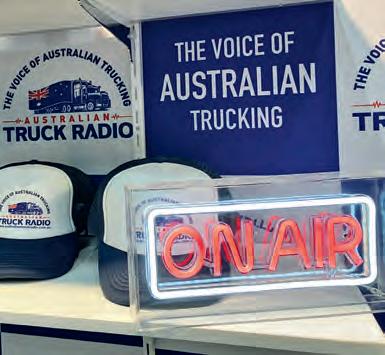
until his death in 1997, Hutchence was the popular front man of the Australian cult hero band that sold over 50 million records worldwide, making them one of the country’s highest-selling music acts ever.
1970: Sitting alongside Elvis Presly’s ‘Suspicious Minds’, Johnny Farnham, as was then known as, rose to the top of the charts with hit single ‘Raindrops Keep Fallin’ On My Head’.
1975: Daryl Braithwaite returns for a second dip in this month’s column through his popular single ‘You’re My World’, which peaked at number one in 1975.
1982: Probably their most popular song, renowned Australian rock band Men at Work reached number one in the early ‘80s with the enduring classic ‘Down Under’.
From the beginning of careers that ended up going down in Australian music history as incredibly memorable through to two tragic days and some hit singles, January is steeped in history for the local rock’n’roll scene.
“For a 20-year period spanning from 1977 until his death in 1997, Hutchence was the popular front man of the Australian cult hero band that sold over 50 million records worldwide, making them one of the country’s highest-selling music acts ever.”


There is plenty on the agenda for the NRFA in 2025, with the HVNL review, an NHVR focus in Queensland and rail bridge strikes being high priorities
As we gear up for another action-packed year, the board of the National Road Freighters Association (NRFA) would like to extend a warm welcome to 2025. We hope you’ve enjoyed a restful holiday season with your loved ones. For many of us, including myself, stepping away from the truck to spend quality time with family is the best way to recharge and prepare for the challenges ahead. With 2024 now behind us, I’m excited to see what opportunities and advancements 2025 will bring to the road freight industry.
NATIONAL ROAD
February is just around the corner, and so is the much-anticipated NRFA National Conference! This year, Brisbane will play host to an event that promises to be bigger and better than ever. Featuring international guest speakers like Dean Croke and Chuck Snow (CEO), the conference will be packed with invaluable insights and industry discussions.
Supported by all levels of government, road transport regulatory enforcement agencies and our incredible industry partners, this event is the perfect platform for you to have your say, share your experiences and be part of the solutions shaping our industry.
Adding to the excitement, we’re thrilled to announce a raffle sponsored by our mates at Moore Trailers. One lucky attendee will win a custom-built Moore Trailer Bar – a prize valued at $5,000 and not available for purchase. Tickets are limited, priced at just $50, and half of the proceeds will go to support Childhood Cancer Support, a cause close to our hearts. For tickets and more information, visit our website at www.nrfa.com.au.
Over the holiday break, many drivers took time to reflect on the challenges they face on the road. A recurring topic of discussion was the sense of unfair targeting by state road policing commands and, occasionally, National Heavy Vehicle Regulator (NHVR) officers. While many comments were critical, they also highlighted an opportunity to improve enforcement approaches.
The NRFA board strongly supports advocating for the inclusion of an ‘Inform, Educate, Enforce’ model into the Heavy Vehicle National Law (HVNL). This approach emphasises providing drivers with the knowledge and tools to comply with regulations before punitive measures are applied. The NHVR is already on board with this idea, and its recent response to the HVNL Constitution Regulatory Impact Statement outlines a similar direction. Under this model, safety and compliance officers would gain the ability to issue roadside warnings without escalating to fines or penalties. This proactive approach could transform the relationship between drivers and regulators, making compliance a collaborative effort rather than an adversarial one.
The NHVR’s expanded role in Queensland has been a breath of fresh air. Many drivers, myself included, have found roadside and inspection station interactions with NHVR officers to be professional, respectful and focused on proactive safety measures. Unfortunately, the same cannot always be said for Queensland’s statebased road policing command, which continues to take a different approach. With support from government and industry stakeholders, I am hopeful that 2025 will see further alignment between enforcement agencies, leading to better treatment and understanding of our profession.
The issue of driver training remains a hot topic. While training providers often bear the blame for inadequately prepared new drivers, the root of the problem lies in the curriculum itself. To better support new drivers and ensure they are road-ready, we need a unified and practical education framework. This will be a focus for the NRFA in 2025, and I’ll have more to share on this soon.
Queensland Rail reported an alarming 386 bridge strikes in 2024, with hotspots including Corinda, Chelmer and Rocklea. These incidents often result from drivers failing to plan their routes or being unaware of their surroundings.
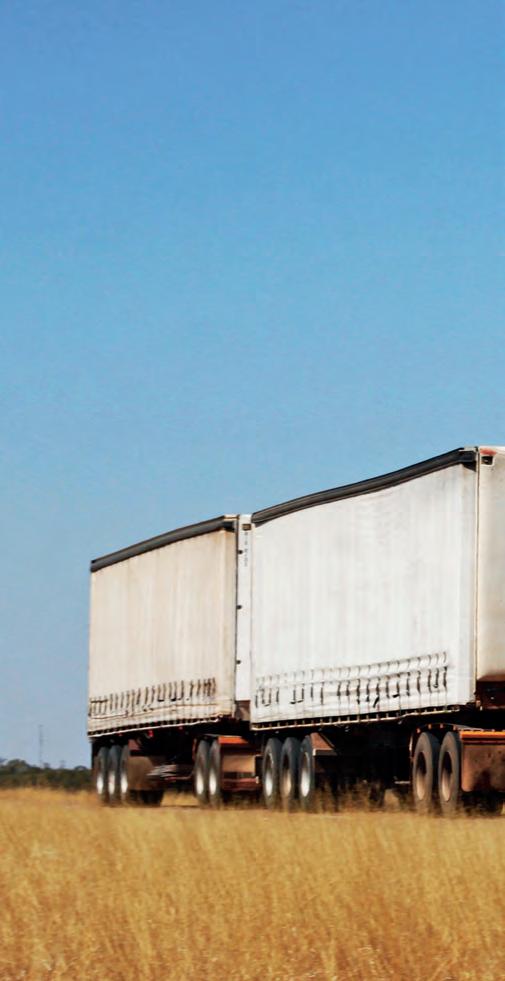
With fines of up to $2,580 and 11 demerit points for striking a rail bridge or protection beams, the stakes are high. This highlights the urgent need for better driver education on route planning and height awareness. The NRFA is actively engaging with federal and state governments to support road safety initiatives aimed at addressing this issue, and I’ll provide updates as they develop.
As we tackle these and other pressing issues in 2025, I look forward to keeping you informed and involved. Together, we can work toward a safer, fairer, and more sustainable industry. Until next time, stay safe out there, look out for one another, and let’s make 2025 a year of positive change for us all.
“This proactive approach could transform the relationship between drivers and regulators, making compliance a collaborative effort rather than an adversarial one.”
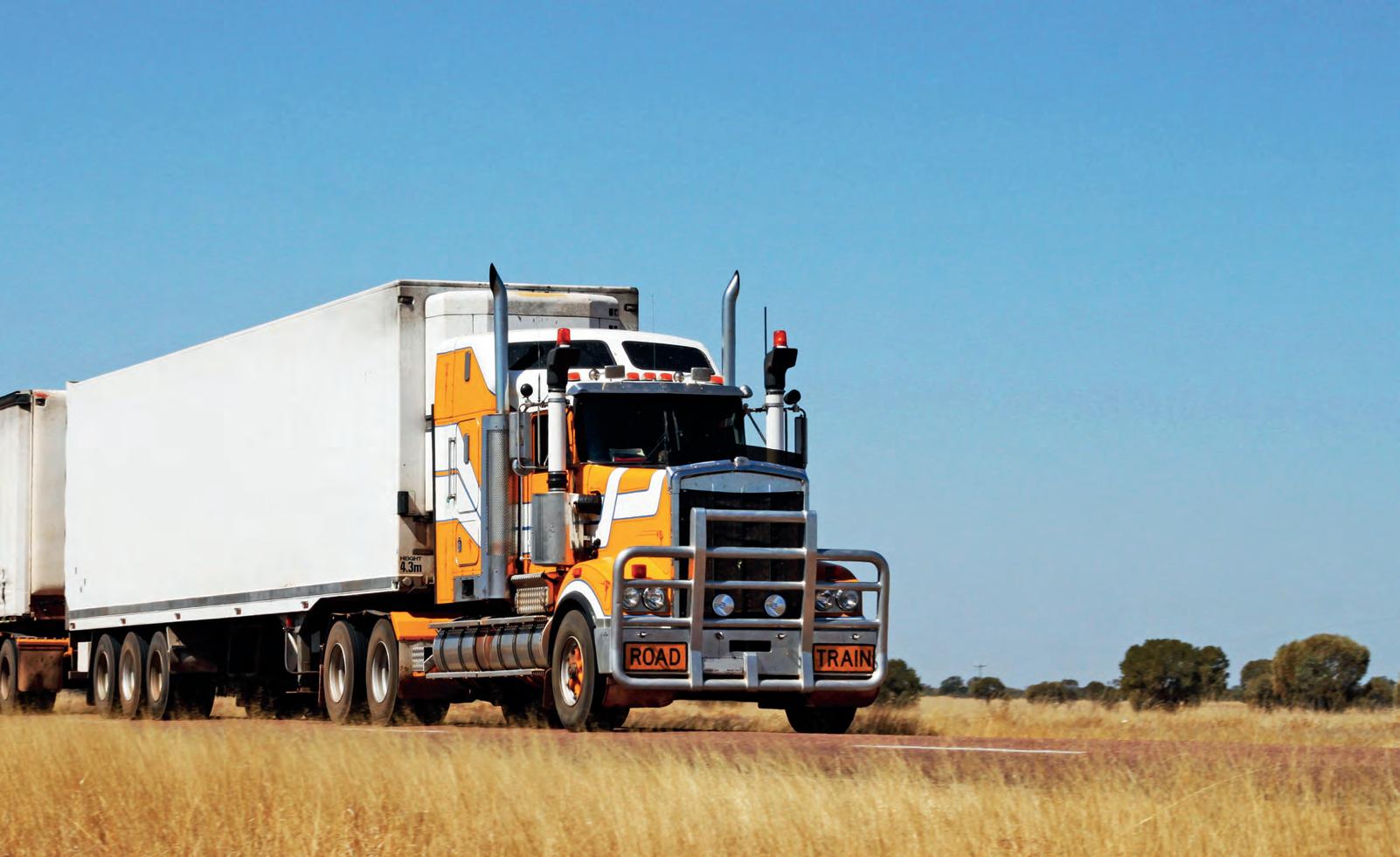

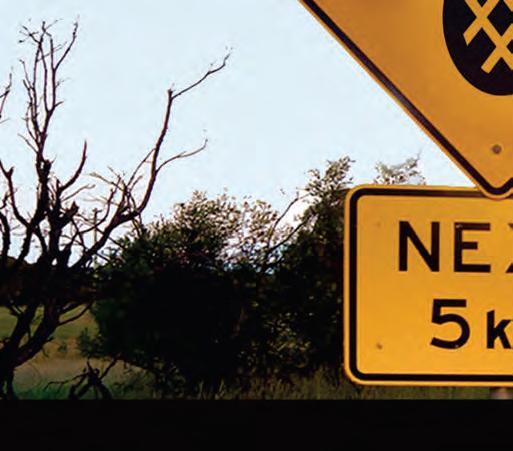
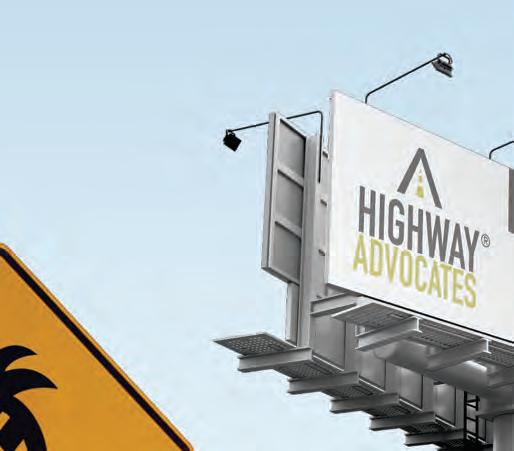
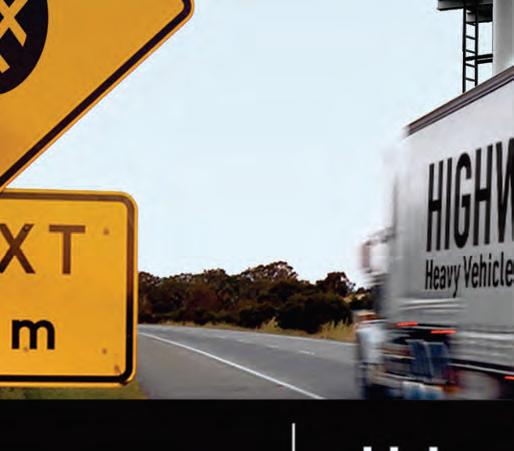
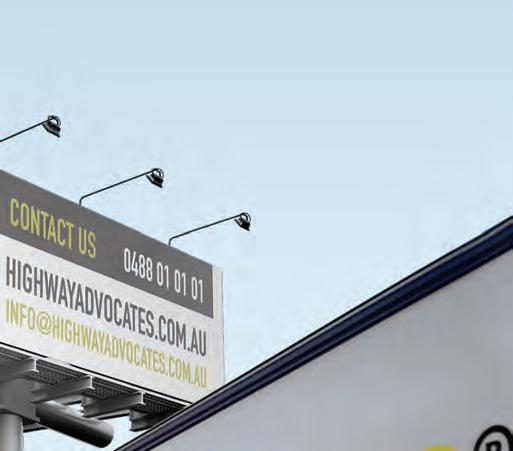
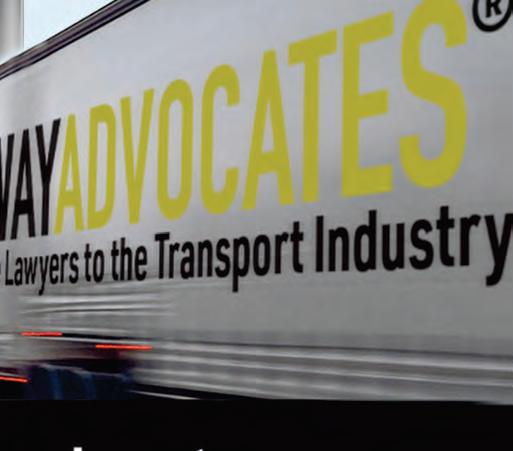
Through a mix of pilot programs, online resources and useful diet information, Healthy Heads in Trucks & Sheds has many ways of promoting healthy lifestyles for truck industry workers
As a truck driver or a warehousing team member, you’re no stranger to long hours, tough shifts and a lot of hard work. But here’s something you might not always think about – the food and drinks you consume on the job can have a big impact on your mood, energy and mental sharpness. When you’re putting in long hours on the road or in a warehouse, it’s easy to grab whatever’s quickest to eat – like a pie, some chips or a sugary snack. That stuff might give you a quick burst of energy, but later it’ll have you feeling sluggish, tired and even moody. Poor food choices can affect your brain function, your concentration and your overall mental health, and they don’t do your mind or body any favours in the long run.
That’s where Healthy Heads in Trucks & Sheds (Healthy Heads) comes in. We’re all about getting people in our sector to make better, healthier food choices for themselves and their workplaces. That’s why we’ve teamed up with the National Nutrition Foundation to create a bunch of resources to help educate and raise awareness about nutrition. These new information packages aim to make it easier for everyone working in our sector to choose foods and drinks that keep them feeling physically, and mentally, good to go.
Our nutrition information packages, which are full of useful info for drivers, warehouse team members and businesses, are free and easy to find on our website. Nutrition can be complicated, so we’ve made sure these materials break everything down into bite-sized, easy-to-understand pieces of advice that you can follow the next time you’re looking at a fridge, freezer or shelf. The information package includes a series of downloadable posters, infographics, recipes and social media tiles, all of which can be displayed at work and shared with mates.
Some of the key lessons you’ll learn from these posters and infographics are how to swap fatty foods and sugary treats for healthier alternatives that keep you feeling better throughout the day. You’ll also learn how to build a healthier lunchbox with balanced,
nutrient-packed foods, read nutritional information panels on foods to make smarter food choices and pick snacks that keep you energised and help you fight off energy slumps and tackle fatigue while on the road or at work.
Another way we make more nutritious food available is through our bp Healthier Choices Menu, currently available at 32 bp sites. This menu is perfect for truck drivers on the go and is a 24-hour option that offers freshly cooked meals that are all rated green according to the Victorian government’s Healthy Choices food guide. Best of all, users of the Healthy Heads App will receive an instant $5 discount on select items when purchasing from this menu. So, the next time you pull into a bp truck stop, why not go for the healthier choice instead?
We also have Nutrition in Sheds, a new pilot program focused on getting healthy food options into sheds and warehouses to make sure that, no matter where you work, you have access to healthier food that fuels your
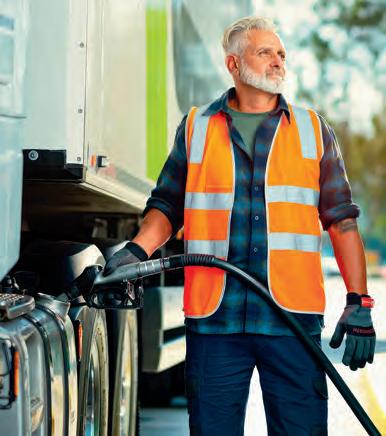
body and mind throughout the day. With the support of Be Fit Foods, we also trialled some ready-made, easily transportable meals. This trial program led by dietitians proved that access to dietitian-designed meals can help truck drivers and warehousing team members lose weight and improve their quality of life. Healthy Heads is now working closely with Be Fit Foods to promote the results of this eye-opening trial to the industry, to encourage wider participation and greater access to healthy pre-prepared meals.
All our nutrition work focuses on demonstrating that eating the right food doesn’t just keep you feeling good physically – it helps your mind stay sharp, your mood stay positive and your overall mental health improve. Healthy Heads is here to help you make some simple changes, so you can feel your best at work, both on the road and beyond. By making simple swaps and planning your meals carefully, you can get a serious boost in energy, concentration and overall wellbeing. So, the next time you’re grabbing a snack or thinking about your next meal, consider what might help you feel even better – not just for now, but for the long haul ahead.
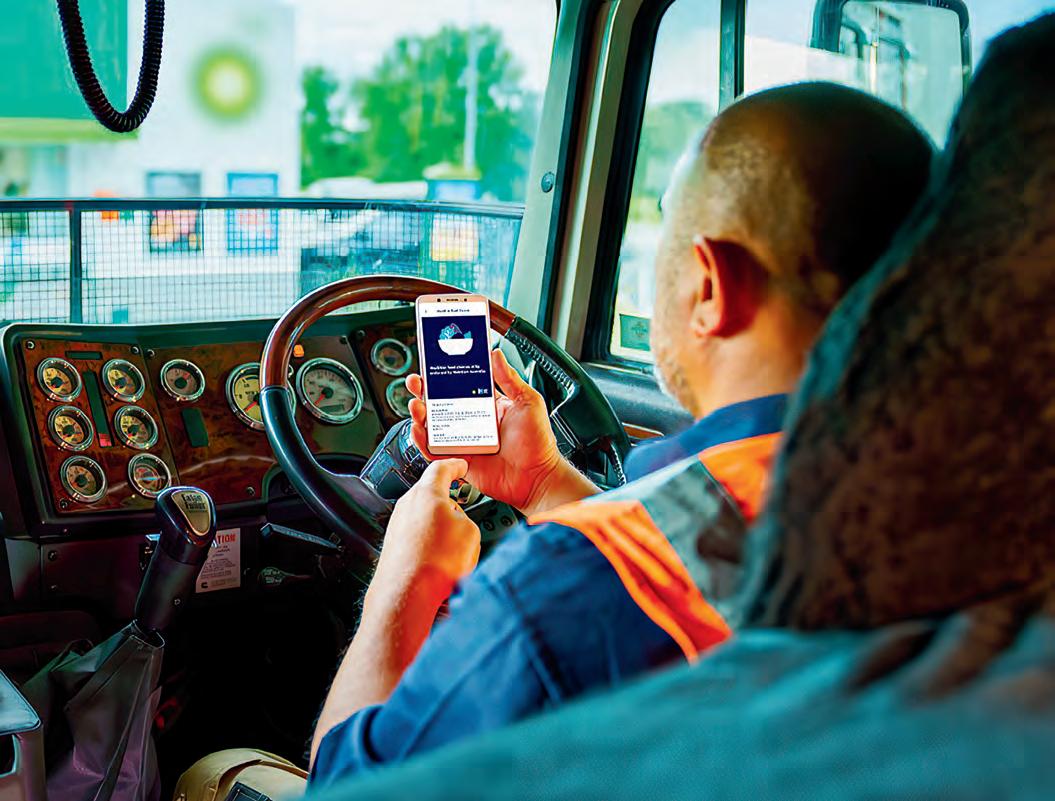









Ihelp lots of drivers who’ve been breached for errors in their work diary. I find there are a couple of common mistakes that cause most of the problems. Thankfully, they’re mistakes that are easy to avoid with a good understanding of the work diary rules.
By far, the most common mistake I see is drivers miscalculating their 24 hour period. A small miscalculation can lead to drivers being well over their allowable hours, resulting in having to attend court, large fines and demerit points.
I hope these few tips will help you avoid trouble.
The first step is to understand where to start counting your 24 hour period from.
The period is counted forward from the end of every ‘relevant major rest break’ applicable to the 24 hour period in your hours option, i.e. the minimum continuous rest break the law requires you to take for a 24 hour period.
The National Driver Work Diary instructions contain a list on page 22 outlining where drivers operating under each of the hour options should start counting their 24 hour period from.
fit in all required rest breaks. I know that sounds obvious, but a very common error is not fitting the entirety of the minimum continuous rest break into the 24 hour period.
Often I see cases where a driver will start a long break close to the end of their 24 hour period. The start of the break falls within the 24 hour period, but the end is outside of the 24 hour period. For example, a driver who is required to take a seven hour continuous rest break within a 24 hour period works for 20 hours into the period then stops working, resting for 10 hours. Although they’ve had more than seven hours of rest, only the first four hours counts towards that 24 hour period. This put them in breach of the rest requirements.
It’s a good idea at the start of your journey to make a note when you need to stop working for the day to fit in your required continuous rest break. That way you can avoid losing track of time if things go off schedule.
The other very common mistake I see is thinking that taking a second ‘relevant major rest break’ resets the clock. Unfortunately, it doesn’t work that way.


SARAH MARINOVIC is a principal solicitor at Ainsley Law – a firm dedicated to traffic and heavy vehicle law. She has focused on this expertise for over a decade, having started her career prosecuting for the RMS, and then using that experience as a defence lawyer helping professional drivers and truck owners. For more information email Sarah at sarah@ainsleylaw. com.au or phone 0416 224 601

BELOW: Calculating rest periods is no easy exercise
If you take another ‘relevant major rest break’ within a 24 hour period, what actually happens is that the first clock keeps running and you also start a second clock that runs concurrently. You need to make sure you comply with your work and rest hours for both of the 24 hour periods you now have running.
For example, if a solo standard hour driver’s 24 hour period starts at 10am on Monday, they need to make sure they don’t work over the allowable hours and take the required breaks between 10am on Monday and 10am on Tuesday. If the driver were to stop work between midday and 7pm on Monday, they have now triggered a second 24 hour clock. Now they need to make sure they comply with the work and rest requirements between both 10am Monday to 10am Tuesday and also between 7pm Monday to 7pm Tuesday.
This mistake often results in drivers working over their allowable hours. The reason for this is that some of the time from the second day counts towards the first. While a driver might have worked under their allowable hours in the first part of the trip, a couple of hours from the second part of the trip might still fall within the original 24 hour period.
The best thing to do is, after any relevant major rest break, make a note of when your 24 hour period ends. If you take another long rest break, make sure to keep track of both 24 hour periods.
CHECK THE NHVR’S WORKING My final tip is to check NHVR’s calculations if you do receive a Court Attendance Notice or fine. Recently I have seen an example where the NHVR officer calculated the 24 hour period incorrectly. Using the correct calculations, the driver was compliant with their hours for that period. Had we not carefully checked, he might have copped a fine and demerit points for an offence he did not commit. If you do find yourself breached for your work diary hours, my team at Ainsley Law are always happy to help you understand what’s alleged and check if the NHVR has made a mistake.
“Once you’ve identified when a 24 hour period starts and finishes it’s important to make sure you don’t exceed the allowable work hours and also that you fit in all required rest breaks.”
For example, solo drivers working on standard hours need to take a minimum continuous seven hour break in 24 hours, so they start counting their 24 hour periods from the end of their seven hour or more rest breaks. However, twoup drivers working on standard hours are required to take a minimum five hour continuous rest break in a 24 hour period, so they start counting their 24 hour periods from the end of their five hour or more rest breaks.
Once you’ve identified when a 24 hour period starts and finishes, it’s important to make sure you don’t exceed the allowable work hours and also that you
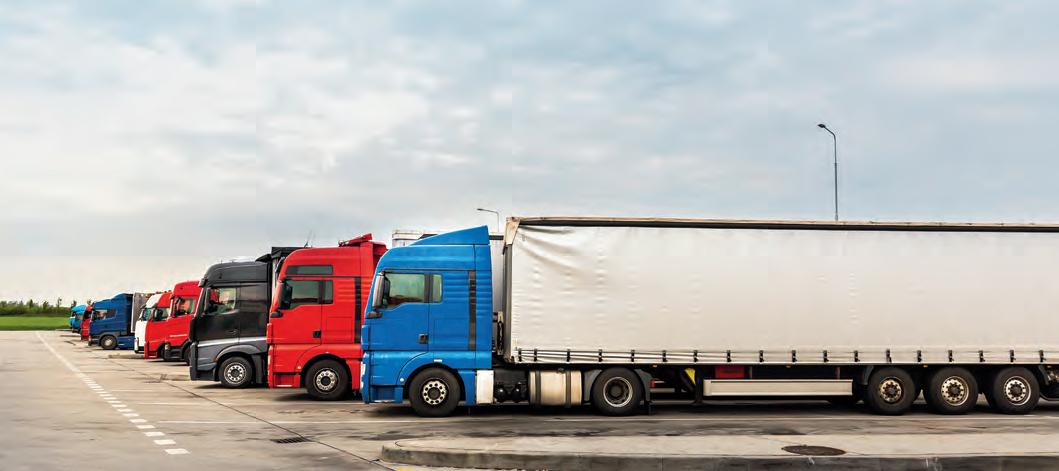
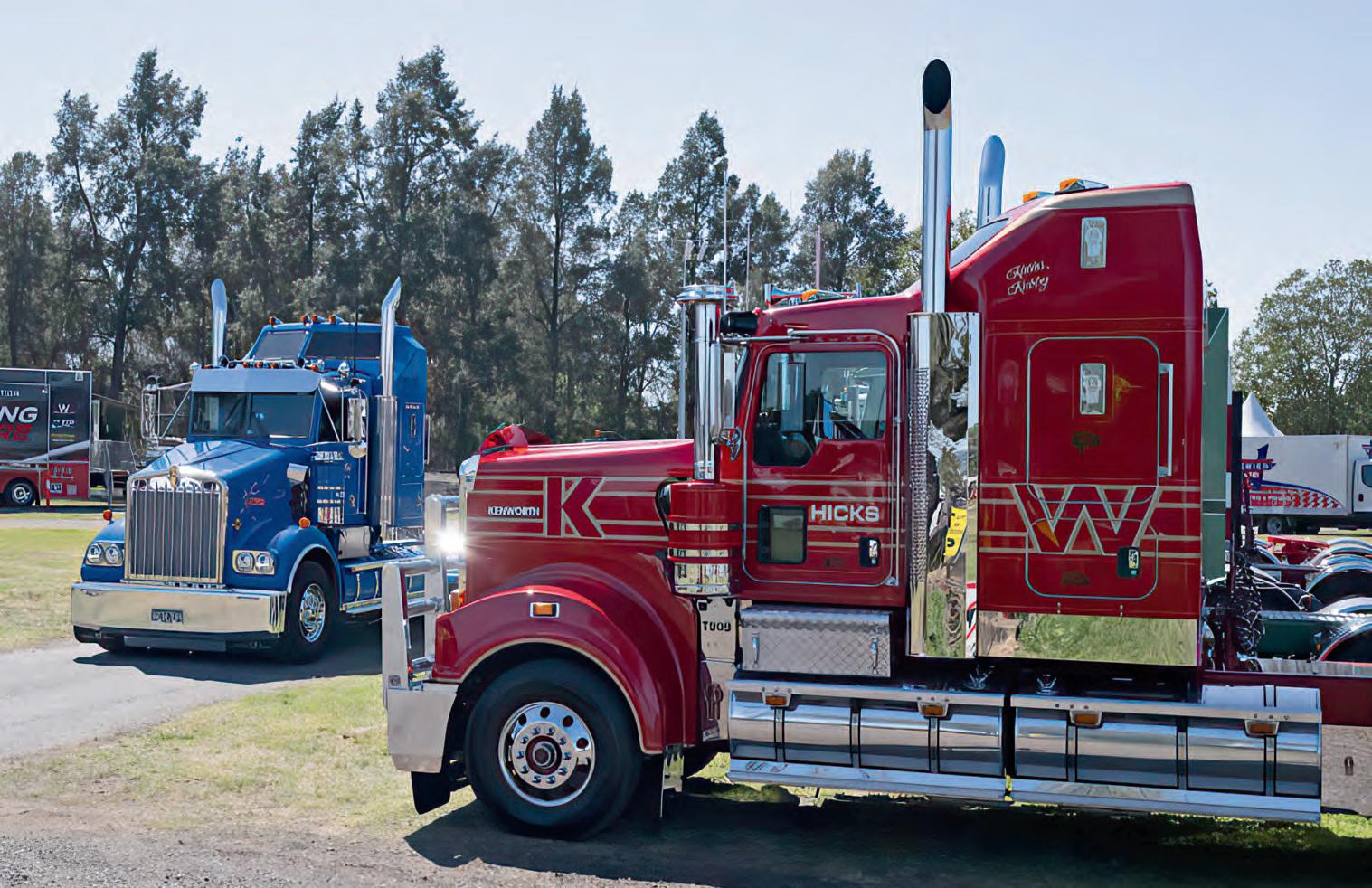

A dominant November from some of the local truck industry’s biggest players has seen Australia’s truck industry sales continue to progress towards the end of the year
The Truck Industry Council (TIC) T-Mark sales data has been released for November, with a further 3,345 heavy vehicles being sold in Australia for the month.
Taking the total to 36,592 trucks for the year to date, continued strength in the heavy and medium duty markets is allowing the numbers to fly before the year ends.
Total trucks
A total of 3,345 trucks sold in November means the momentum is continuing overall, with Isuzu once again leading the way with 1,152 trucks sold during the month.
Another big month allowed Isuzu to bring its 2024 year-to-date tally to 12,218 truck sales by November’s end, with a strong month from Hino (456) seeing it claim a clear second for the year with 4,649 sales. From there, Fuso narrowly edged away from Kenworth with 347 November sales compared to Kenworth’s 338, with Fuso (3,504) appearing to have claimed third spot for the year over Kenworth (3,416) with a month to go.
From there, 218 sales for Volvo means it was set to pass the 3,000 mark in December, currently sitting on 2,973, while Mercedes-Benz (140 for November) inched ahead of Iveco (135) in November. However, for the year-to-date, Iveco (1,716) still sits in front of Mercedes-Benz (1,677).
Scania (99) nearly scored a ton in November to bring its year-to-date sales to a healthy 1,364, while
MAN (67), Mack (62), UD Trucks (56), Fiat (54) and Renault (54) all remained very tight in November’s sales.
In the year-to-date field, Mack (897), UD Trucks (841) and Fiat (820) all have plenty to play for in December.
The heavy duty sector continued to post strong numbers, with 1,387 sales in November seeing the year-to-date tally hit 15,771.
Kenworth was once again a leader in the segment, with 338 November sales taking its annual tally to 3,416.
From there, Isuzu finished second in November with 225 sales, finishing just ahead of Volvo (215), with the latter still holding sway overall for 2024 with 2,904 sales compared to Isuzu’s 2,261. A gap opened after this, with Mercedes-Benz recording 103 sales to Scania’s 99 to bring its tally to 1,008 for the year – Scania sits on 1,364.
Hino continued to progress with 71 November sales, while Mack (62), MAN (59), Fuso (54) and UD Trucks (50) all remained very close throughout the month. Mack takes the cake between these brands in heavy duty sales for 2024 so far with 897 sales, with UD Trucks (754) and Hino (718) not far behind.
The medium duty sector improved on its October efforts, with 703 sales for November seeing the
market excel yet again. Leading the way was Isuzu, with 323 November sales bringing its 2024 number to 3,771 in the market.
Hino rounded out the month with 222 sales to sit a clear second for 2024 so far with 2,156 sales, while Fuso’s 113 November sales sees it round out a clear top three with 934 sales to its name for 2024.
From there, Hyundai and Iveco couldn’t be split in November with 12 sales apiece, meaning Hyundai remains narrowly ahead of Iveco for 2024 – 132 to 127, while MAN’s eight sales sees it edge further up the table ahead of the like of UD Trucks (six) and Volvo (three).
There were plenty of positives in the light duty market for November, with 1,255 sales seeing some of the market’s big hitters come out swinging.
Isuzu continued its strong form in the segment, recording 604 sales for the month to sit at an amazing 6,186 for the year-to-date. Next best was Fuso (180) who held off the likes of Hino (163) and Iveco (105) to sit second overall with 1,893 sales for the year so far. Hino’s strong November sees it sit third with 1,775 for 2024, while Iveco looks set to finish fourth with 1,253.
From there, Fiat and Renault couldn’t be split on 54 sales for the month each, while Mercedes-Benz was next best with 35. LDV (19), Volkswagen (16) and Ford (10) all remained close in November, with LDV now on 129 sales for the year so far.



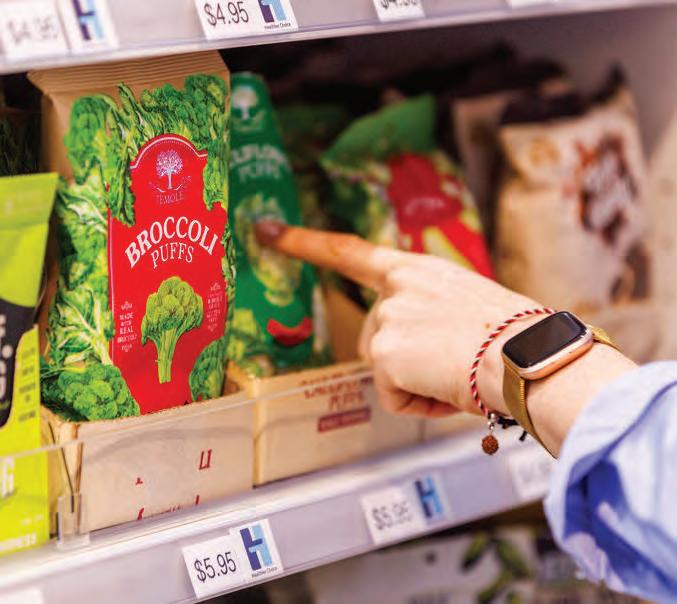


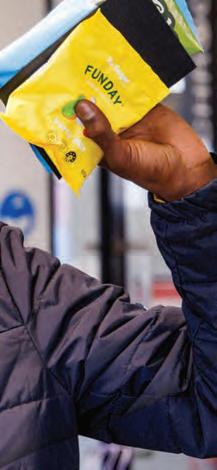



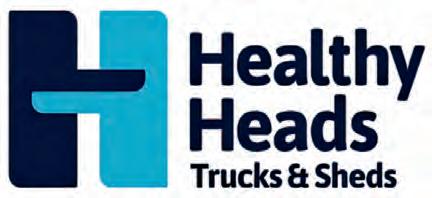

January 11-12, 2025
The Geelong Classic is back for another year in 2025, featuring trucks, classic cars and bikes, vintage tractors and steam engines at the Geelong Showgrounds for the two-day spectacle. Various clubs will also be in attendance, from Lego Club to Model Clubs. Entry for adults is $15, kids under 15 and exhibitors go free.
January 25, 2025
Held at Victoria Park in Koroit, the town of Koroit will come alive once again for its annual truck show, with a large truck display being joined by a motorcycle performance and a state wood chopping competition. With live music, market stalls and more all ready to go for late January, don’t miss the popular truckie sprint and the tug of war in Koroit!
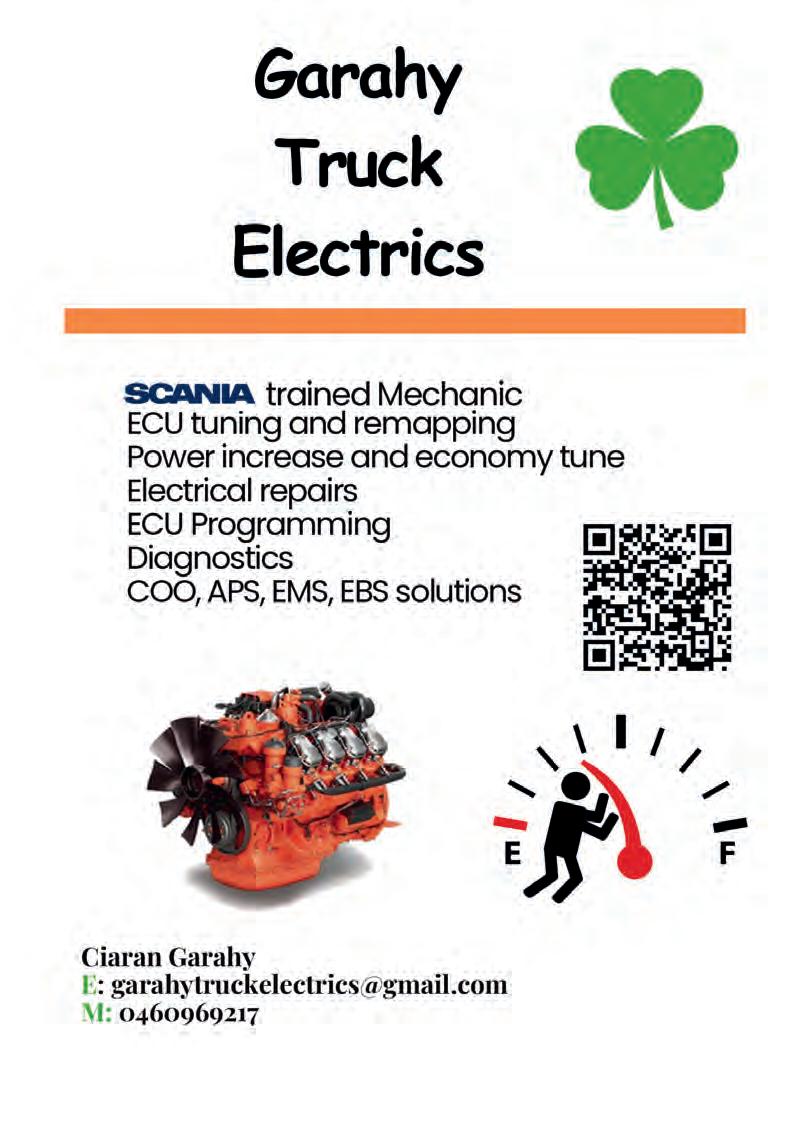
February 1-2, 2025
Heading into February now, with the dates already set for next year’s Lardner Park Heritage Vehicle Display. Held at Lardner Park in Victoria, a range of historic, classic and veteran vehicles (25 years and older) are welcome, with vehicles ranging from trucks and cars, to tractors, motorbikes, caravans and more welcome.
February 22, 2025
Head over to Angaston in South Australia for the Angaston Truck Show & Shine in late February. Held on Saturday February 22 in conjunction with the Angaston Show, the space welcomes trucks of all ages, conditions and uses from all areas, both locally and from far afield. Keep an eye out for more details to follow.
February 23, 2025
The Convoy Geelong Family Festival is a free event packed with entertainment and experiences catering for kids and adults alike. Pack yourself up and head to Victoria’s Beckley Park for a range of food vans, rides, face painting, roaming entertainment, live music, a fundraising awards ceremony and, of course, the opportunity to cheer on the returning convoy and check out all the trucks and vehicles at the show’n’shine. Everyone is welcome for a great afternoon of activities, while showing support for kids facing cancer.
March 1, 2025
Road transport history, both past and present, will be celebrated at the annual Lockhart Truck Show. The event features historic and modern trucks and other vehicles such as motorbikes, and classic and vintage cars, on display in the pavilion. There will also be food and prizes for winners in a wide range of categories. Camping i s available overnight for a donation and includes a Sunday morning breakfast.
March 9, 2025
The annual Clunes Historic Vehicle Show, brought to you by the Historic Commercial Vehicle Club of Australia’s Ballarat branch, will see trucks descend on Clunes. The event has something for everyone, with a vast array of vintage and classic vehicles and motoring memorabilia. Expect food vans, photos and working displays with likeminded people displaying their vehicles, engines.
March 15-16, 2025
It’ll be a big deal at the Kyabram Showgrounds in March when the 100th Australian White Truck Muster sees trucks, buses, cars, tractors and memorabilia displayed. There will also be a Saturday night white truck muster dinner featuring a guest speaker, visual presentation raffles and auction.
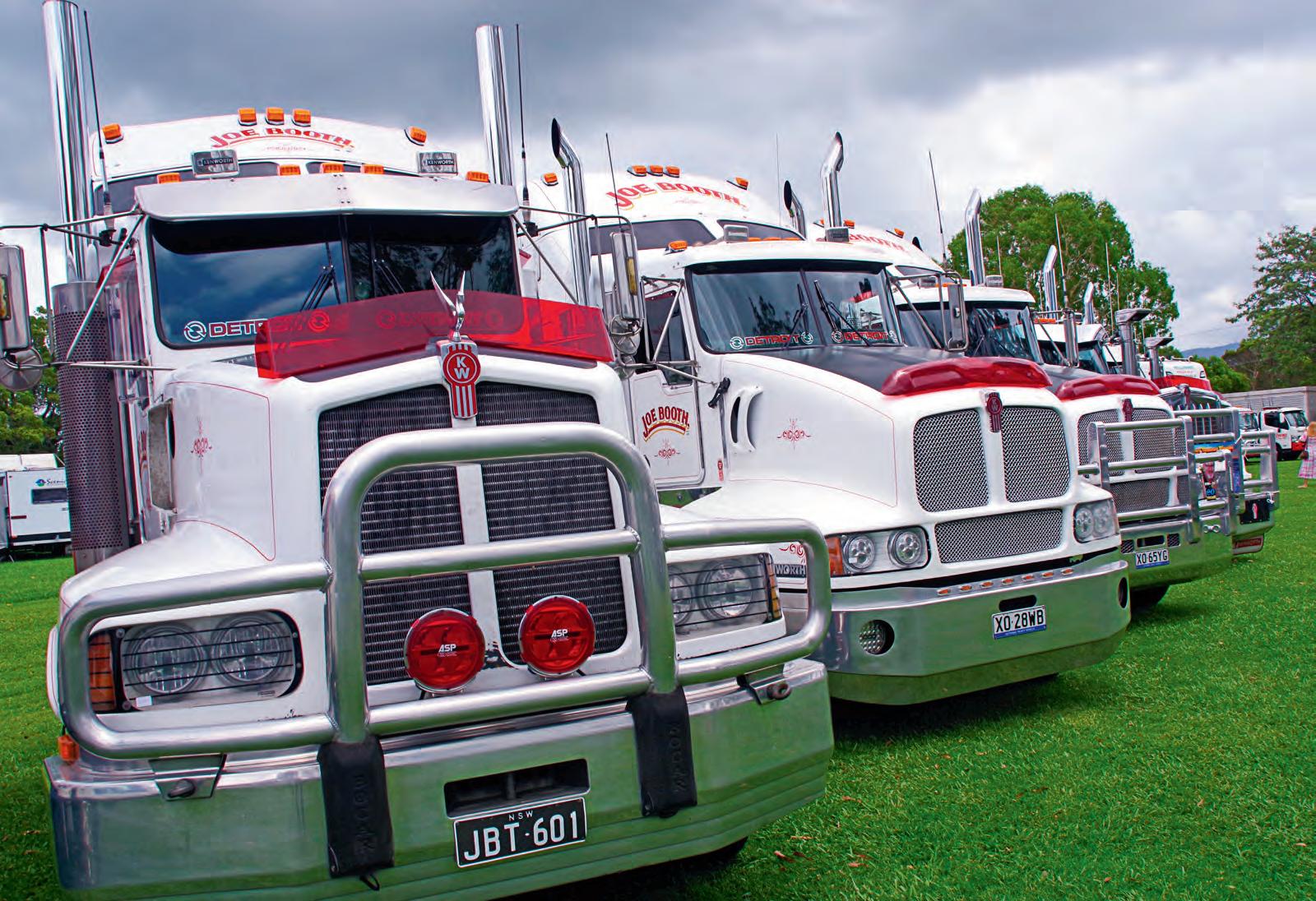
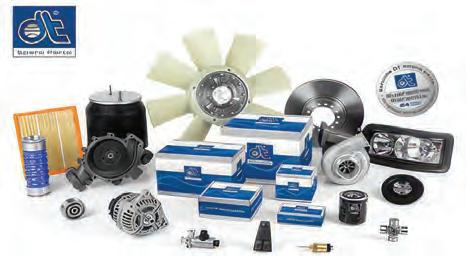
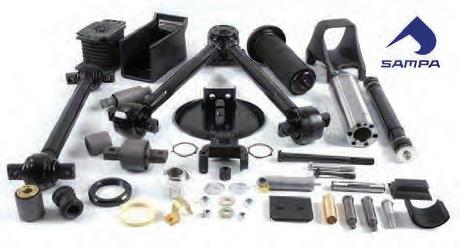
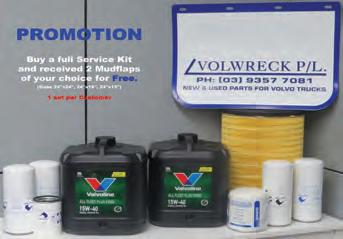
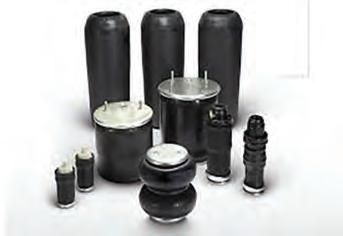
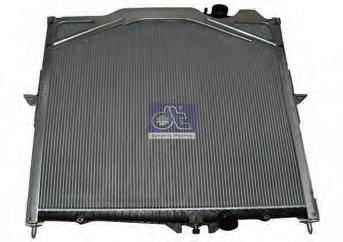
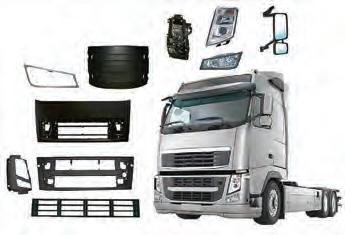

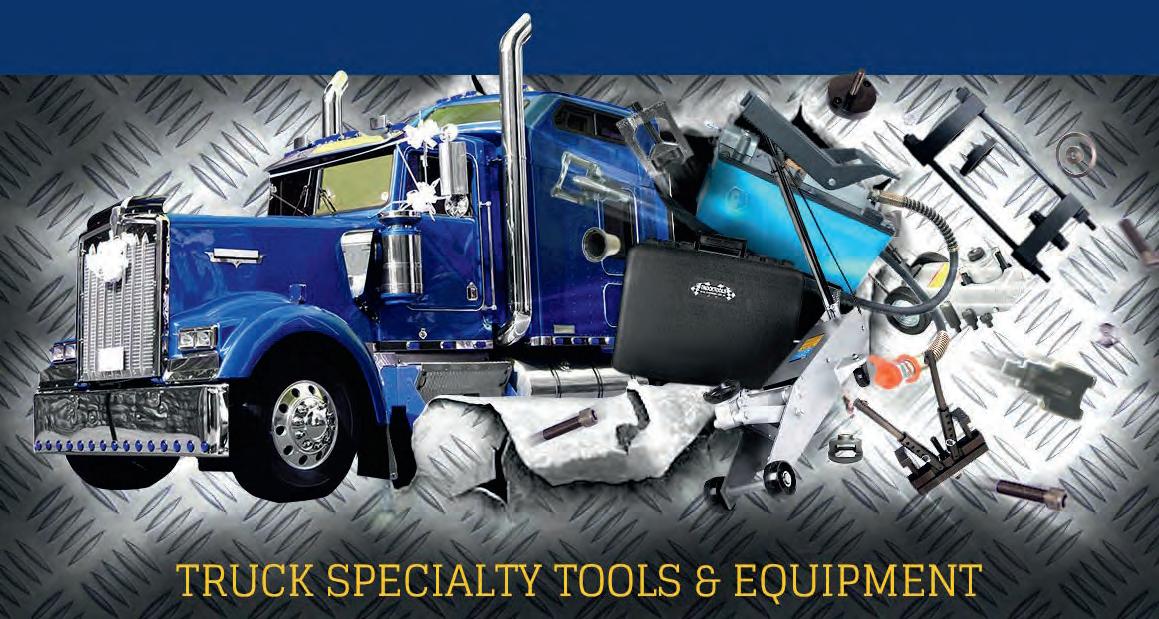
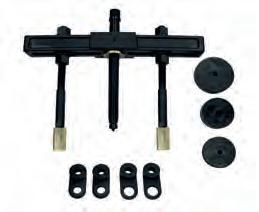

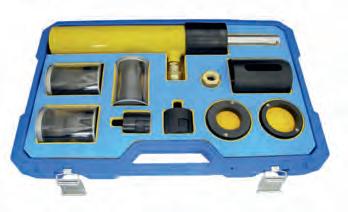
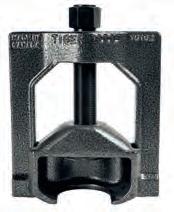
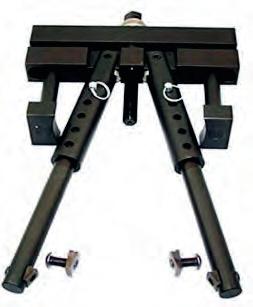
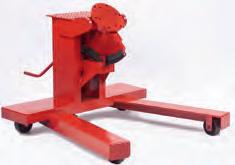
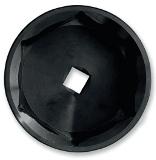
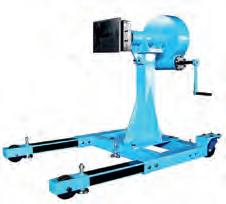
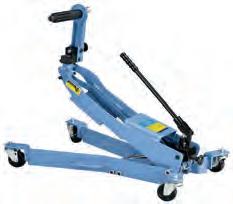
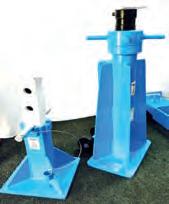
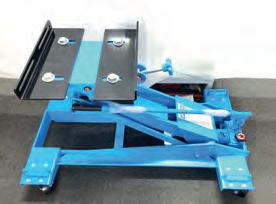
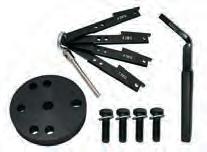



We’re into a new year, but the jokes and fun are still the same as what you saw in 2024!
A list of jokes is essential for No Bull. Now we’re in the midst of a glorious summer, it’s time to crack out the summertime jokes. From ice cream to the ocean, here’s some of the best sunny jokes for you to get some cheap laughs.
Did you hear about the ice cream truck accident? It crashed on a rocky road.
Why don’t seashells take baths? Because they wash up on the beach.
What happens when ice cream gets angry? It has a meltdown. Did you hear about the sunflower that was excited for summer? It wet its plants.

A study released by the University of South Australia has suggested some innovative ideas to make truck drivers healthier. With the occupation one of the least healthy on average in Australia, UniSA has even proposed installing exercise equipment at truck rest areas around the nation to encourage
healthy breaks. Alongside promoting physical activity, the study also prioritises the increased consumption of fruits and veggies.
A DOG AT THE HORN
In Whistler, Canada, north of Vancouver, a dog has become a local celebrity for leaning on a truck horn.
A video was shared on social media of a dog impatiently setting off a truck horn at a parking lot on an innocent Tuesday afternoon. When bystanders wandered over to check out the source of the noise, an angry dog was sitting upright in the front seat with his paw on the horn. The best part was the unimpressed look on the dog’s face.
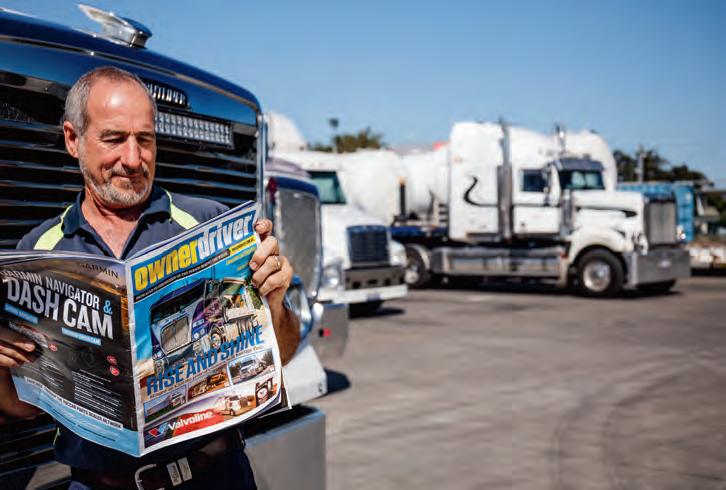
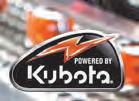

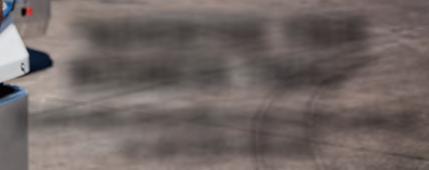

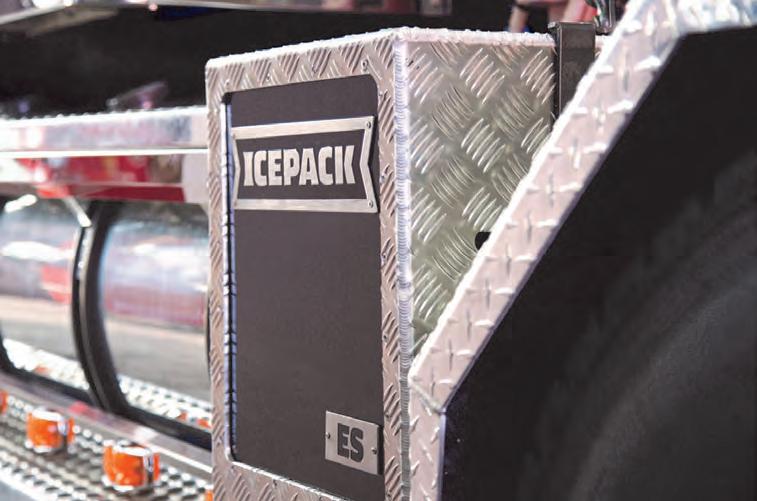

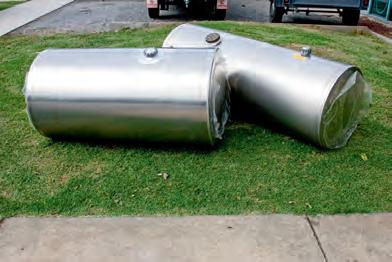
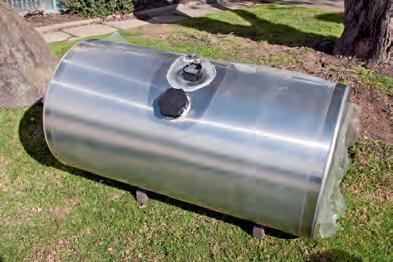


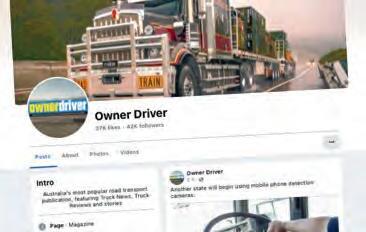
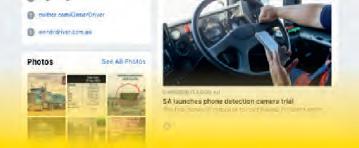



With 2024 being a milestone year in terms of transport reform, the industry can expect more movement for drivers in 2025
Well 2024 really flew by and what a year it was. Given all the developments that have occurred in the lead up to this year I think we should be really looking forward to 2025. After years of campaigning for transport reform, we finally had the Closing the Loopholes legislation pass both houses of Parliament in February and, in August, come into effect. Meanwhile, progress continues to be made with more rest areas for truck operators, addressing the critical issue of driver fatigue in a tangible and workable way.
For many years, the industry has been crying out for transport reform to take the pressure off truck operators, including owner drivers, both long and short haul, and make the job safer, fairer and more sustainable. In this column, I’ve constantly discussed the pressures that drivers face from the top of the supply chain cutting into our funds, forcing us to stay on the road for
longer stretches with less breaks and resulting in some people going as far as to invest less in truck maintenance, and ultimately, safety.
Thankfully, with the passing of the Closing the Loopholes legislation, truck operators now have a road transport division within the Fair Work Commission that effectively exists to make the industry better for us. Ideally, what it will do is set standards to make the industry safer. The Transport Workers’ Union has already made applications to the Fair Work Commission through the process set out via the Closing the Loopholes legislation.
One of these applications is to ensure truck operators are paid within a maximum of 30 days of finishing a job. Cashflow can be so critical to truck operators, even more so nowadays with the cost-of-living crisis and inflation pushing everything up, that the regular payments we count on to keep ourselves afloat are now
“Thankfully, with the passing of the Closing the Loopholes legislation, truck operators now have a road transport division within the Fair Work Commission that effectively exists to make the industry better for us.”
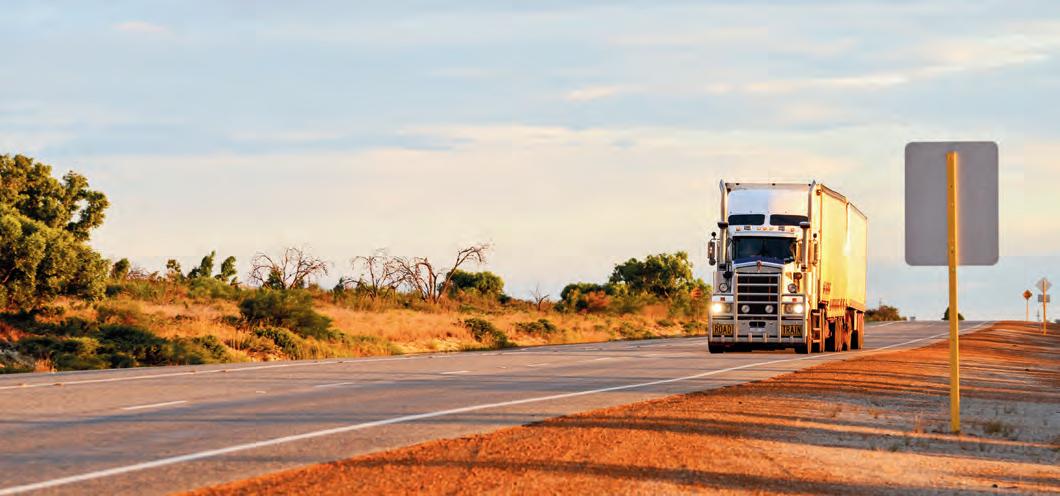
more important than ever. The power of this legislation to really protect our financial security by ensuring we get paid on time cannot be underestimated.
One of the most important parts of the Closing the Loopholes legislation is the reliance on actual trucking experts in informing the decisionmaking process. The Road Transport Advisory Group in the Fair Work Commission will provide advice on the nuts and bolts of any potential legislative changes affecting the industry to come through the Fair Work Commission process. Given their expertise, the relevant experience of the members will be a vital component of this. As the year progresses, I think we’ll see how this plays through, but I have every confidence that things are changing for the better in terms of the power dynamic between truck operators and the big retailers at the top. Ultimately, any decisions which make the industry fairer and safer don’t only benefit us, but other road users as well.
Remember, all of these processes are in play to help keep drivers, owner drivers and the general community that share the roads with us safe while we go about our duties in keeping Australia moving. It’s not just about politicians and the Fair Work Commission – ultimately it’s about the safety and fair treatment of truck operators and other transport workers. Further, it’s important to remember that, as processes develop, we need to keep abreast of these issues, understand how they will affect us and speak up if we have any concerns, queries or questions. At the end of the day, the legislation exists to keep us safe and we should be keeping an active eye on the processes that will be reshaping our industry.
Speaking of safety, we know that one of the biggest dangers in truck safety, specifically truck-related crashes, is driver fatigue. Having adequate opportunities to rest is such an important part of ensuring truck drivers remain refreshed, alert and ultimately safe on the roads. I’ve previously spoken about the Heavy Vehicle Rest Area Initiative Steering Committee, of which I’m a part, and our role in identifying the best spots for new or upgrading rest areas. Over the last 12 months, we’ve been identifying and recommending more and more potential sites. While I’ve written about the need for rest areas in the past, we are hoping to see a lot more progress in this area this year, in particular with the development of areas that have been given the green light, scheduled to start later this year. When drivers are finally able to make use of new rest areas, I think it will be a boon not just for us in the industry, but also the other people we share the road with who will be ultimately safer. With the benefits of the Closing the Loopholes legislation in making the industry fair, safer and more sustainable for truck operators and other transport workers, and more rest areas getting the green light and finally developed, I think we should have a lot to look forward to in 2025.
